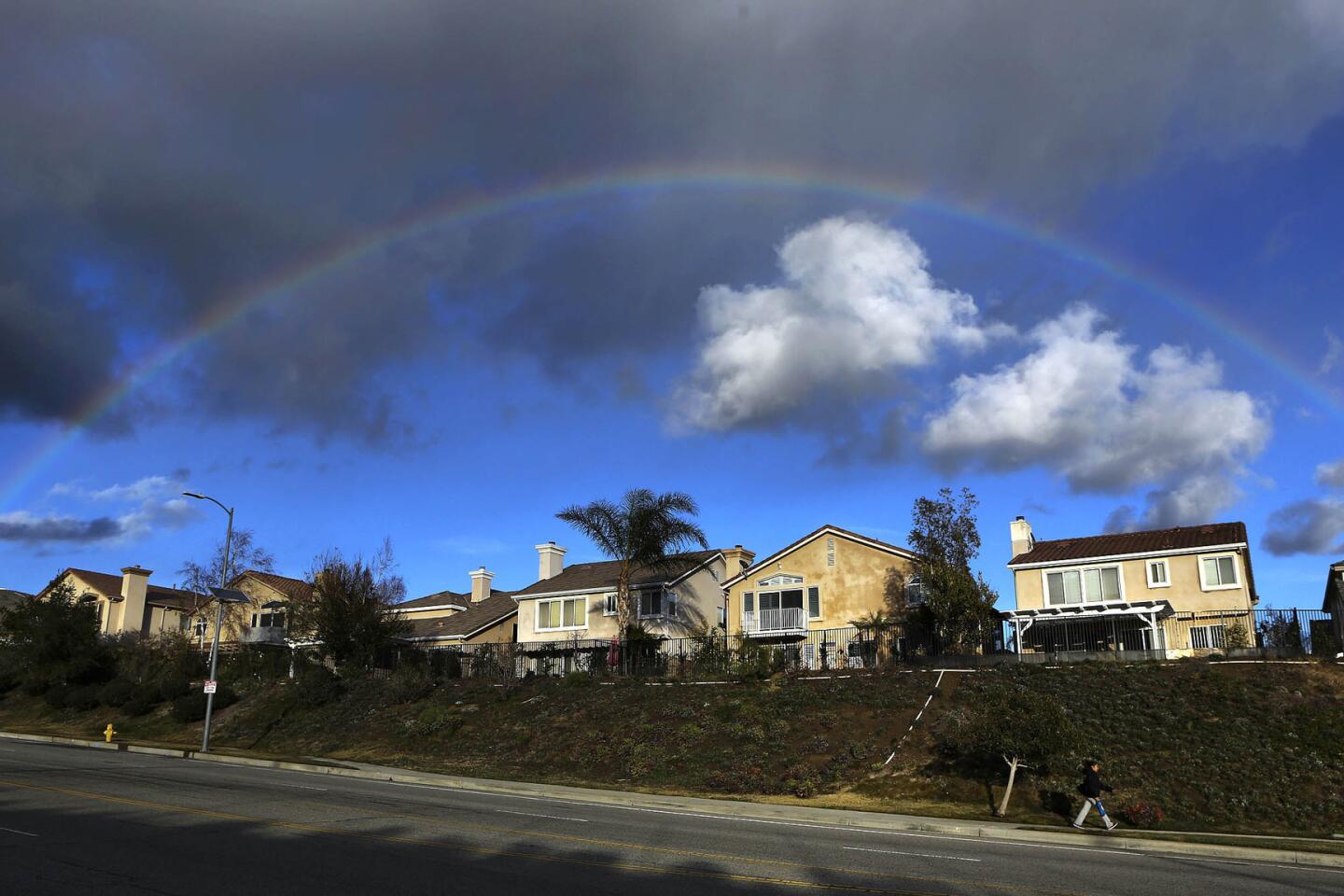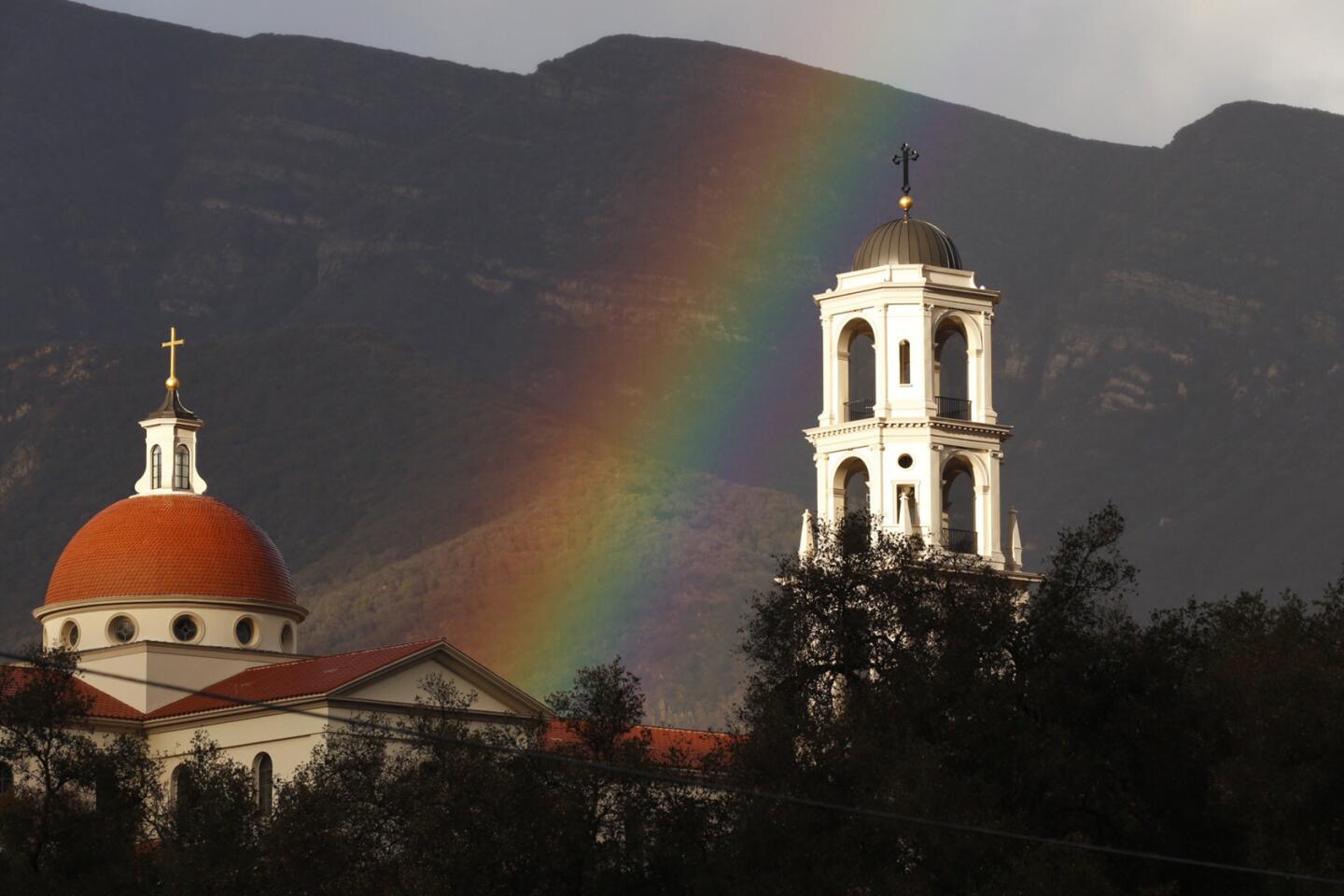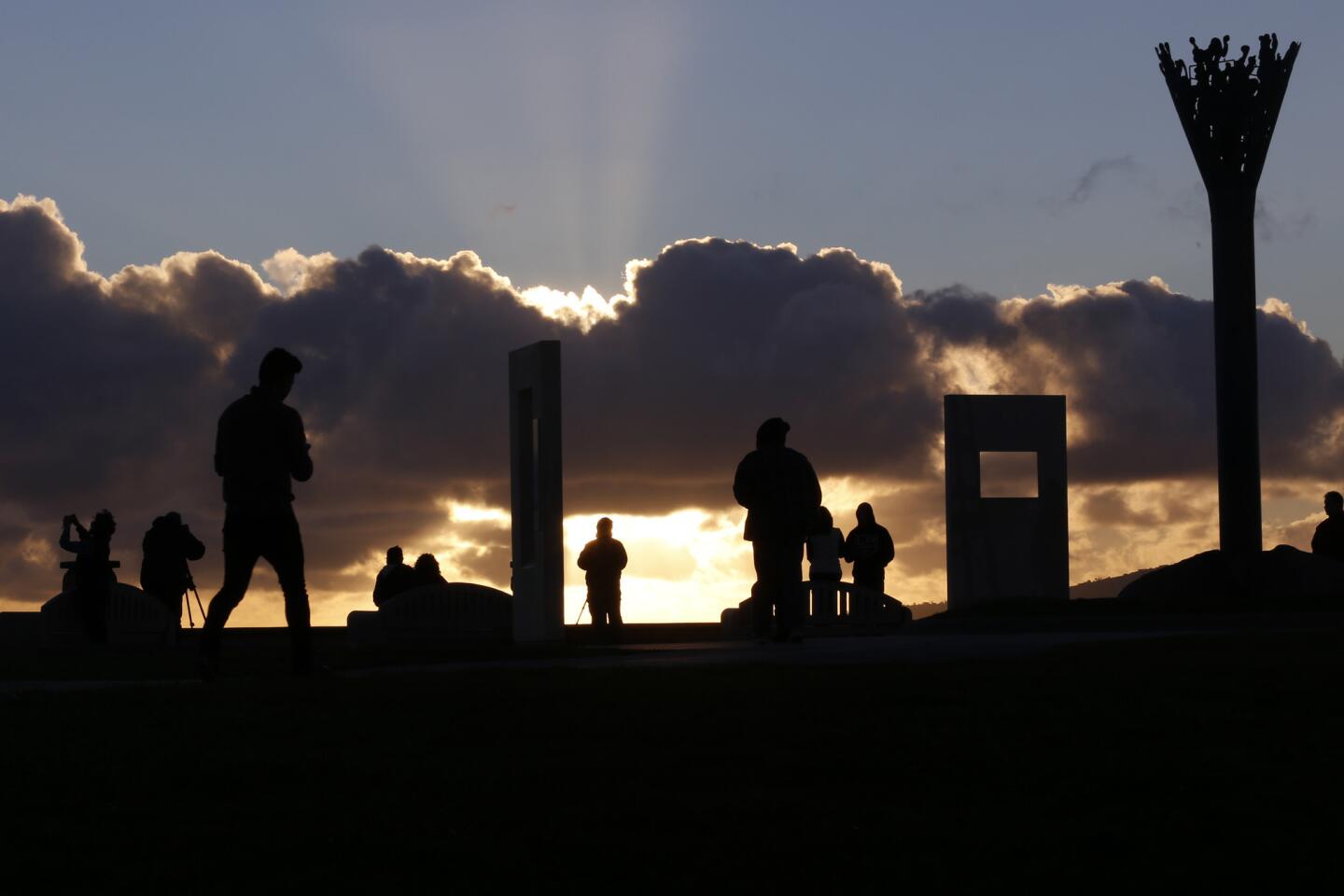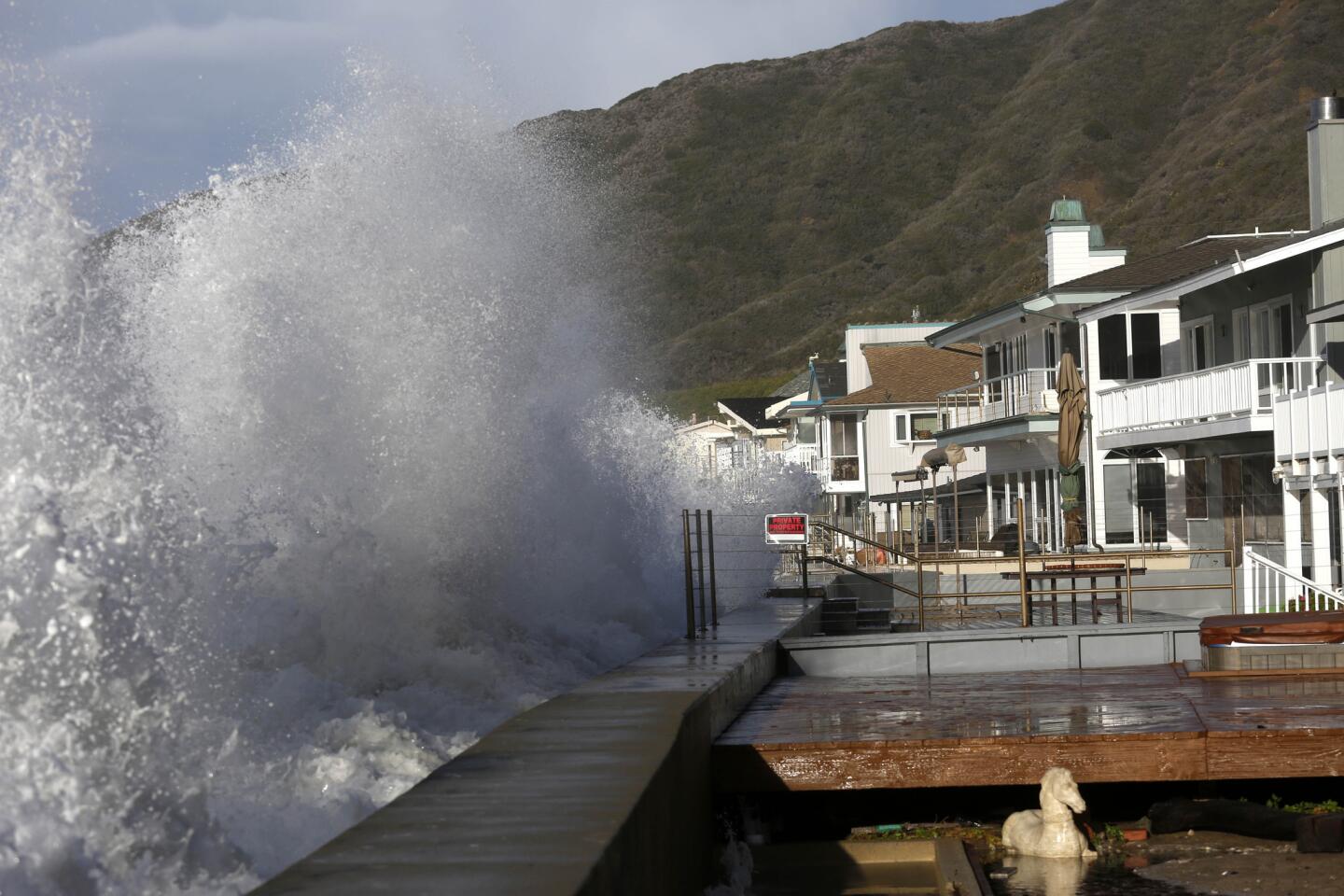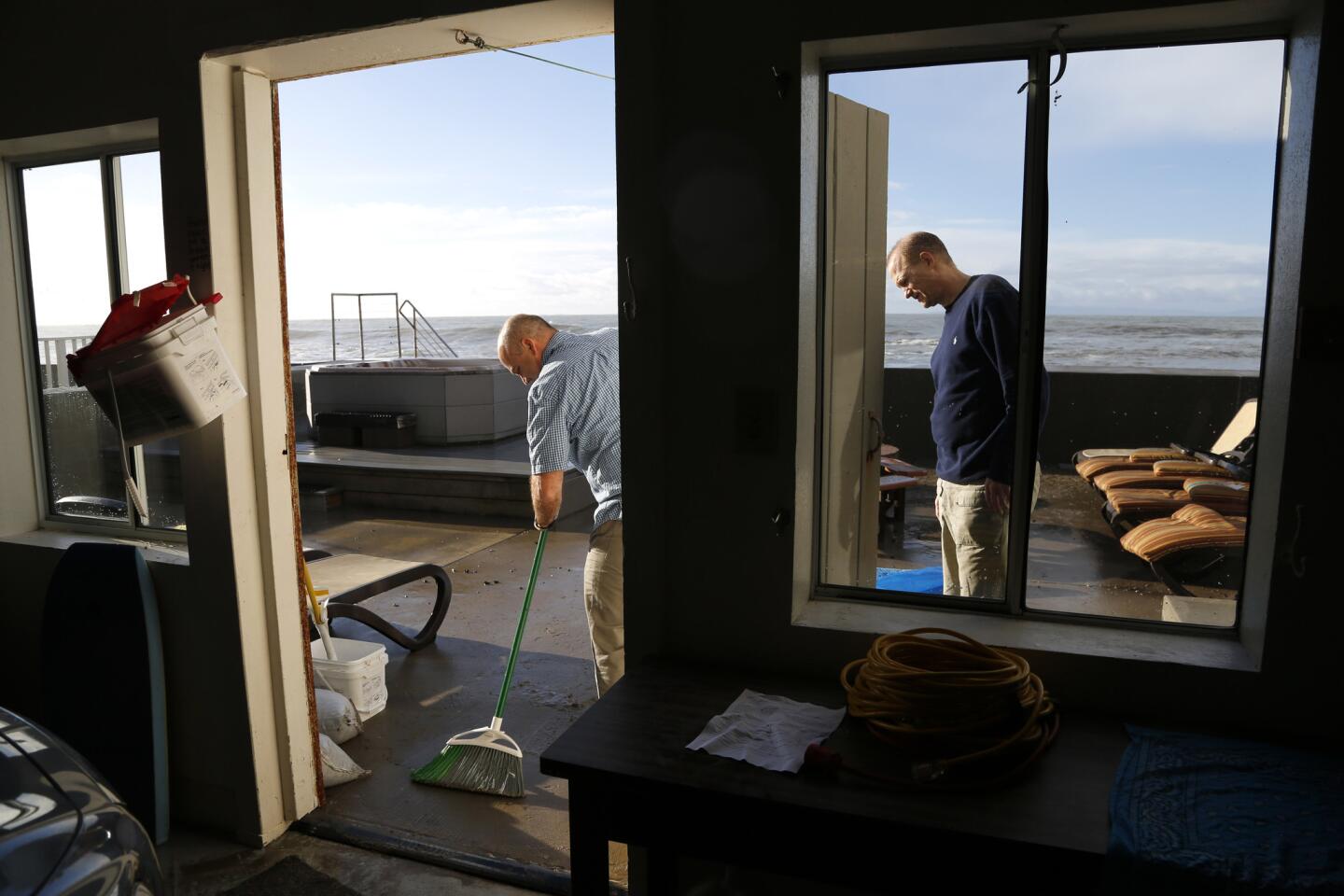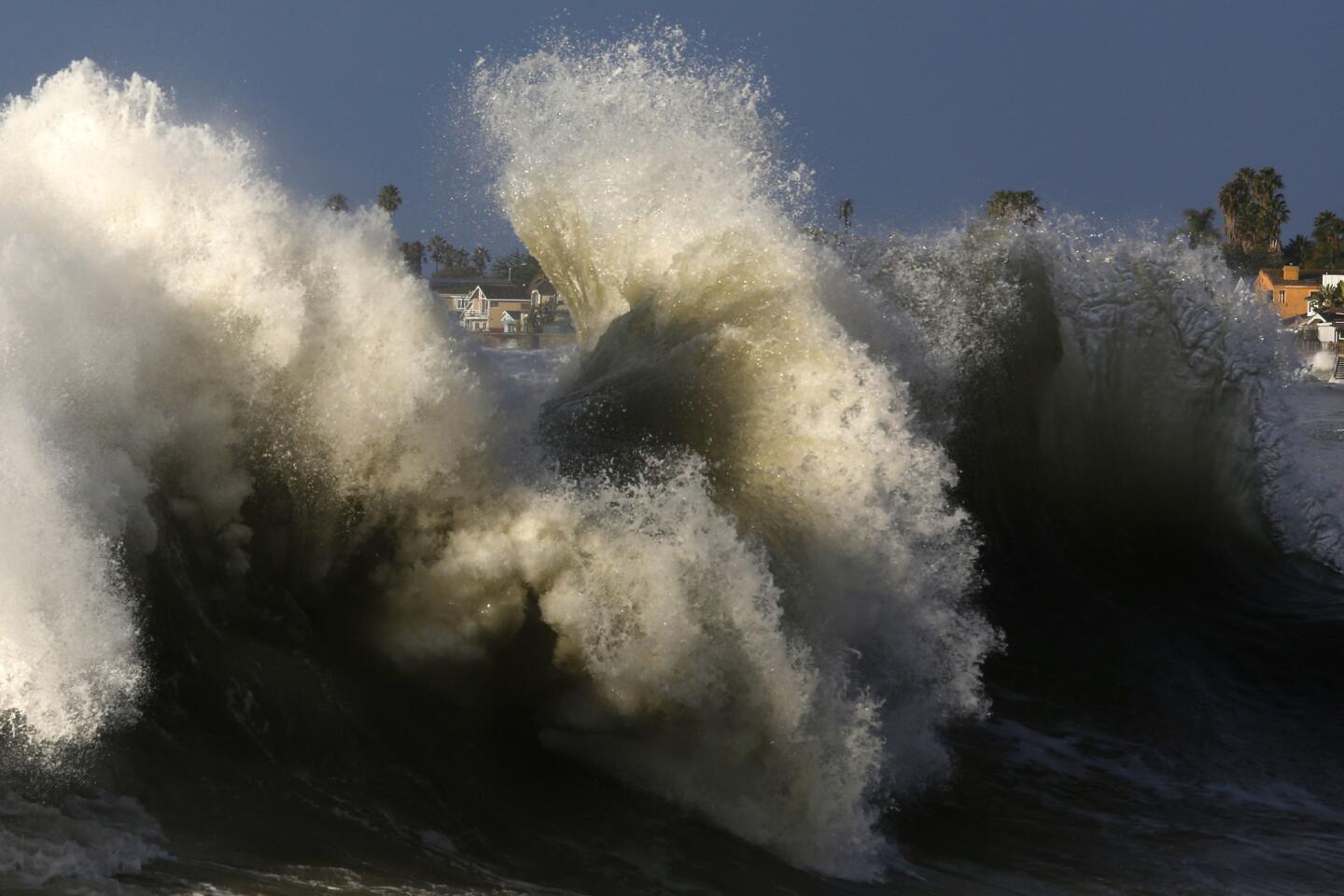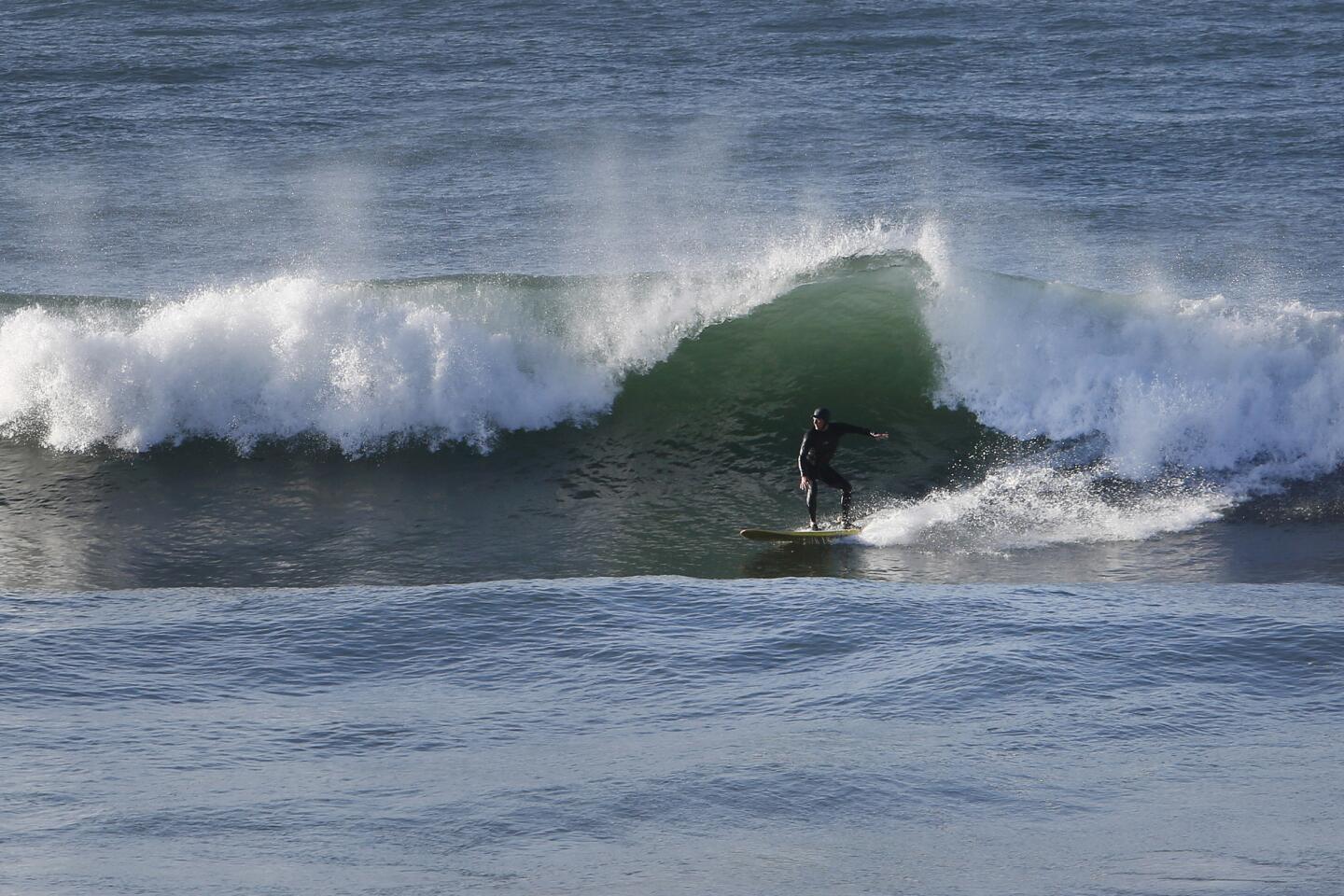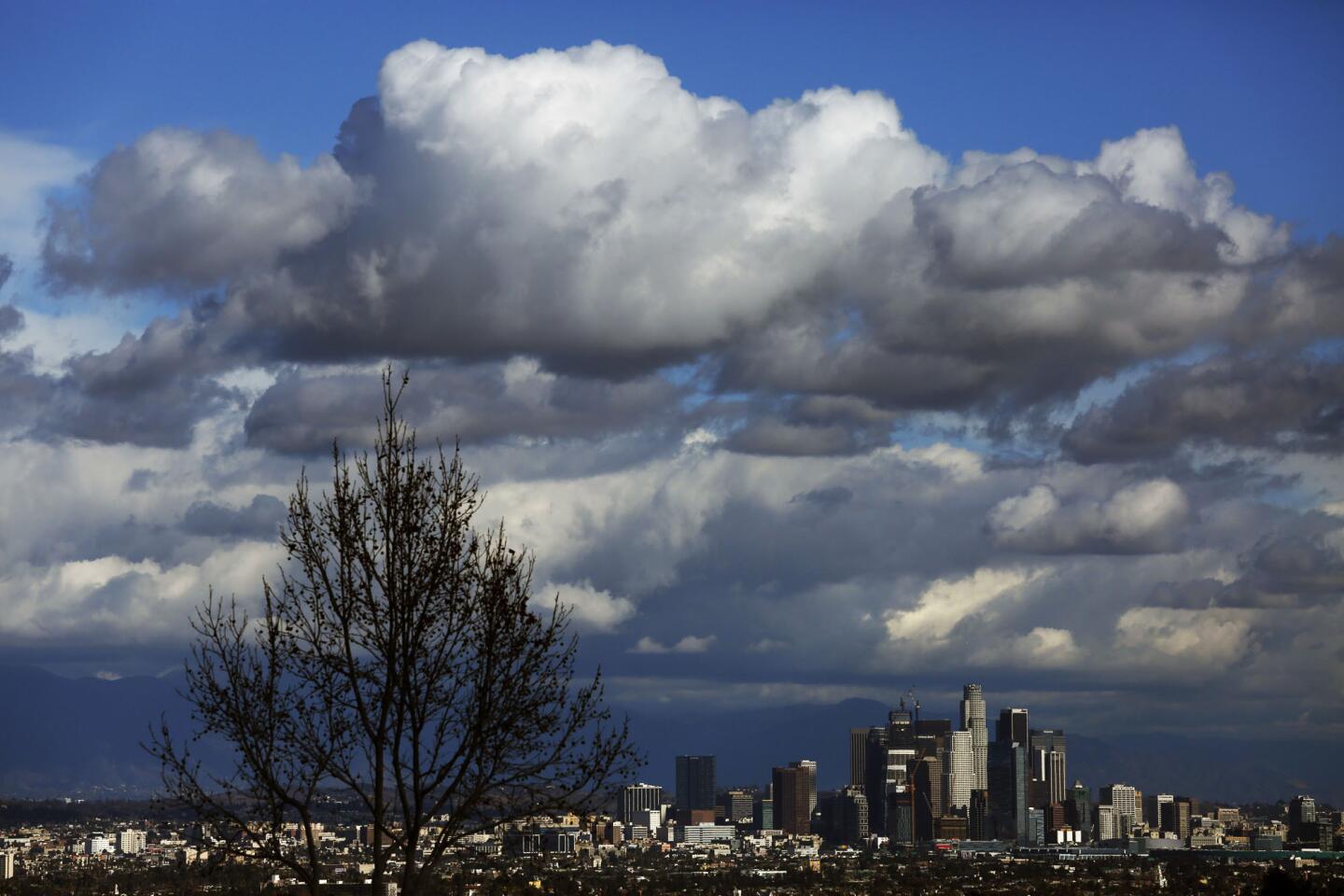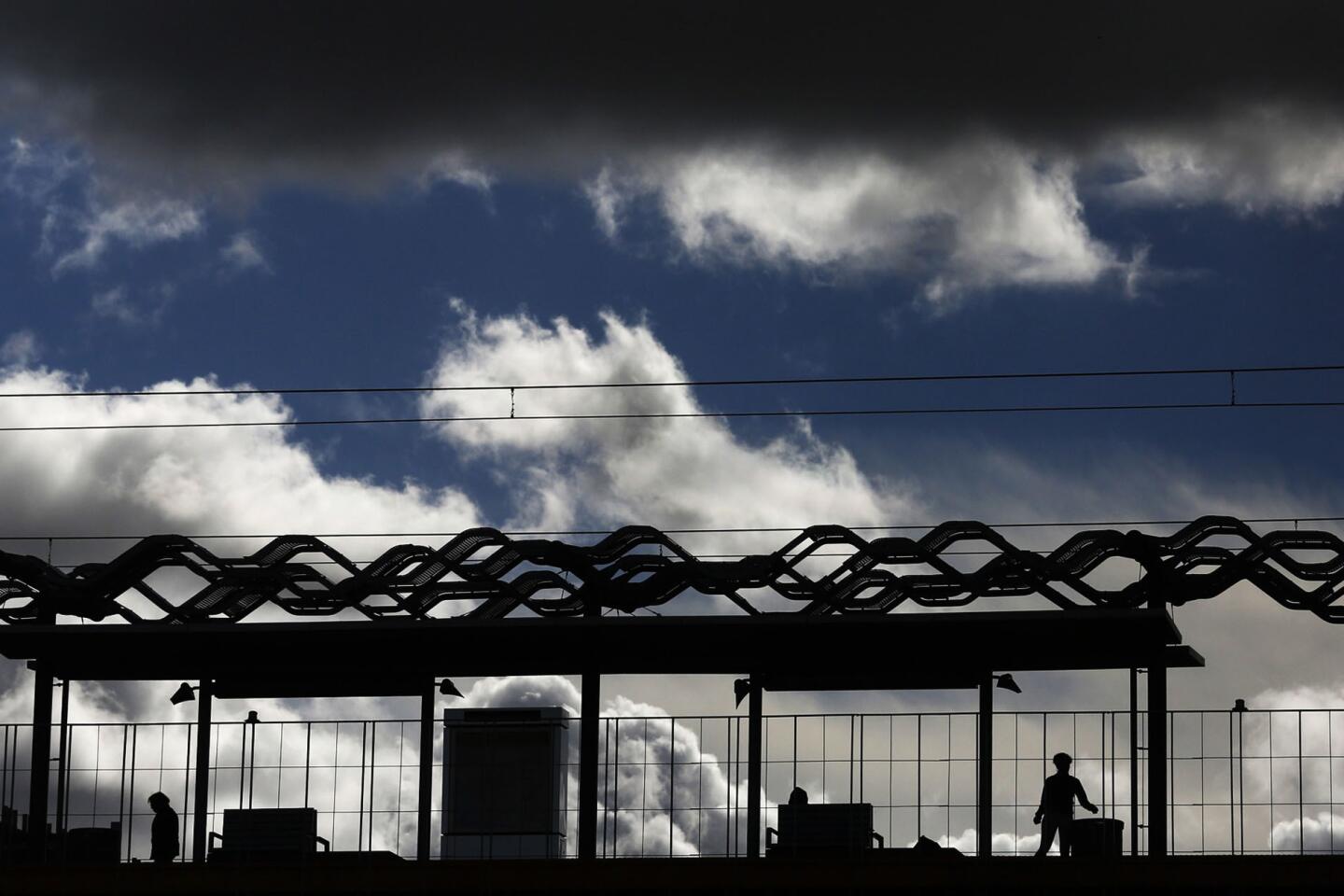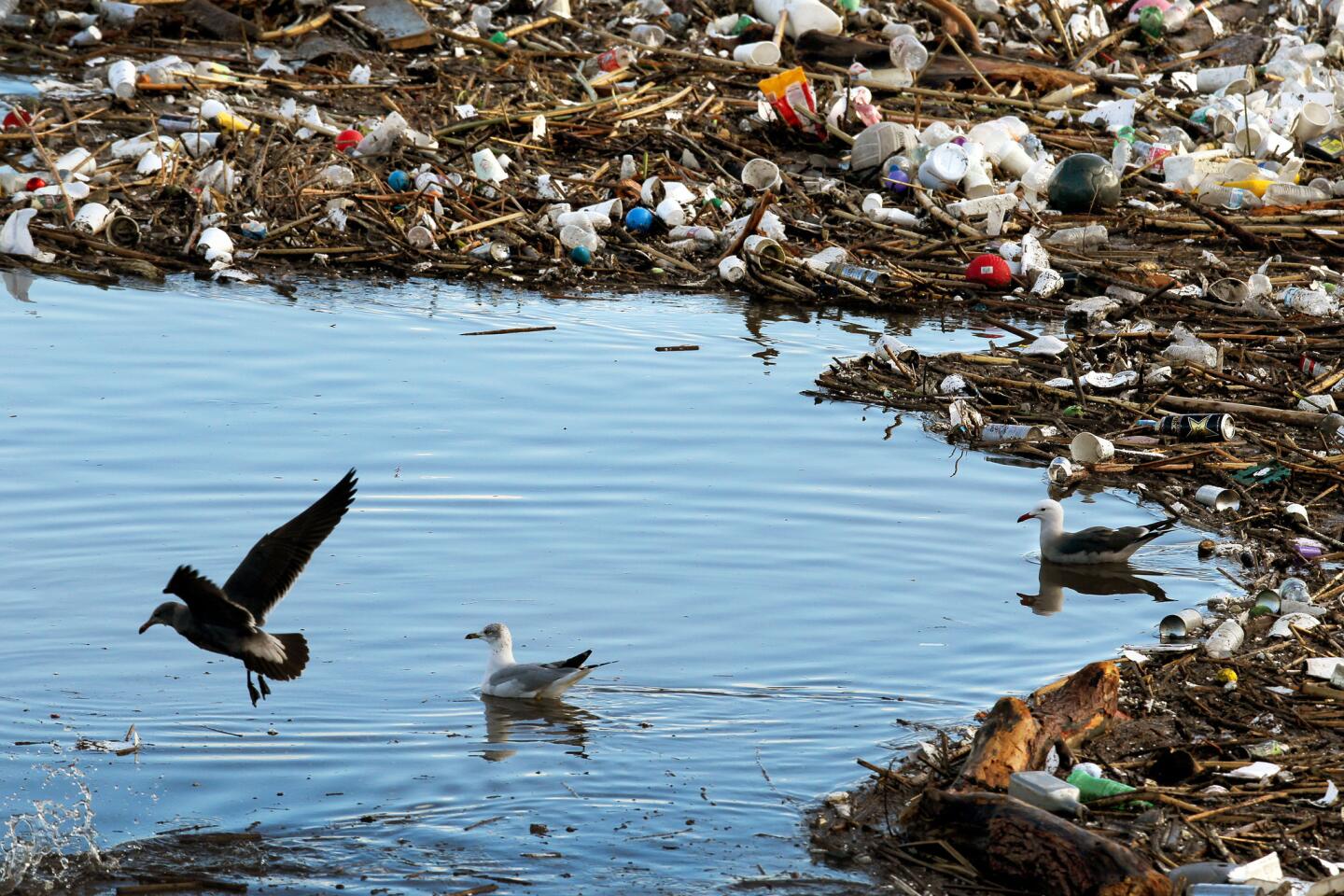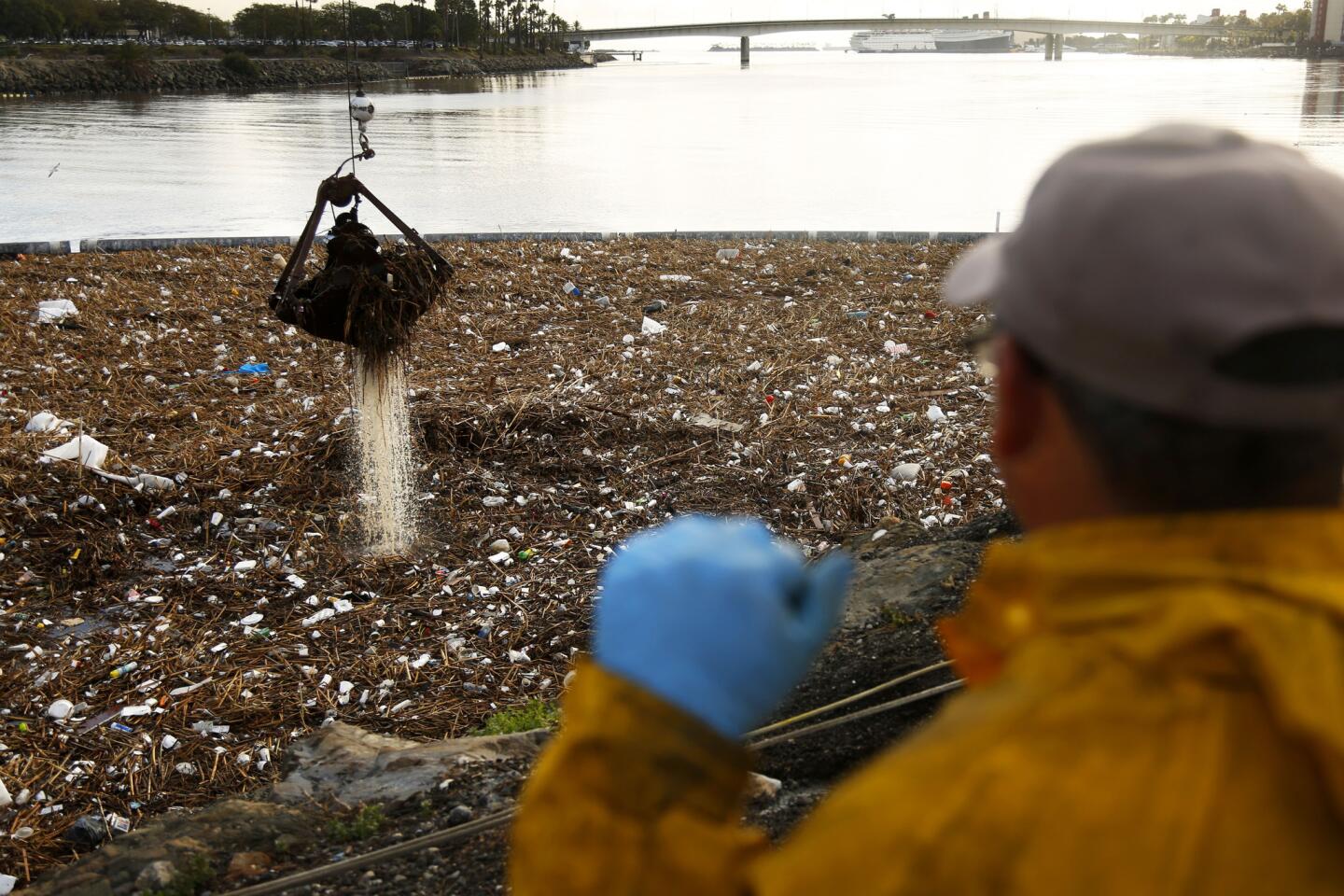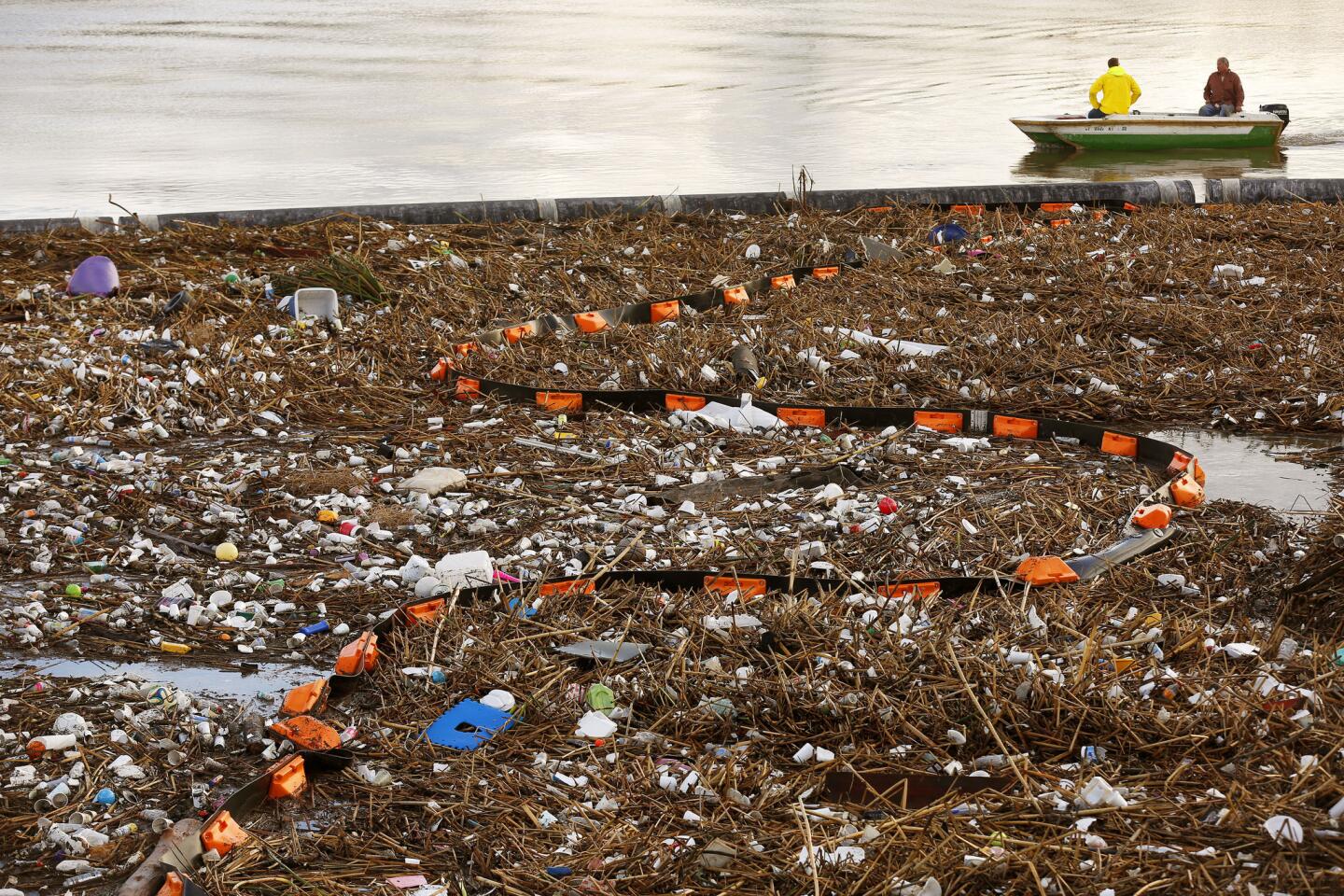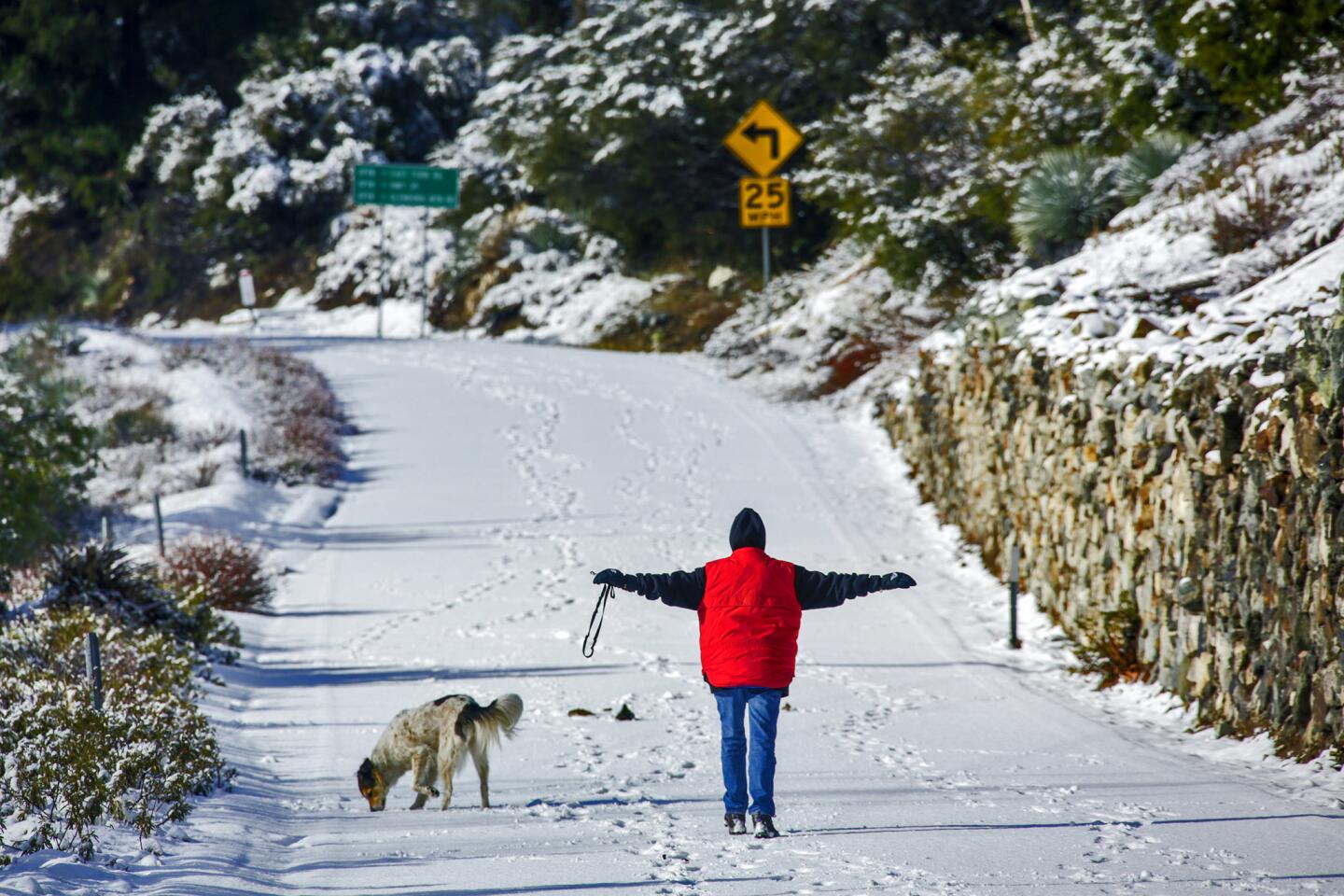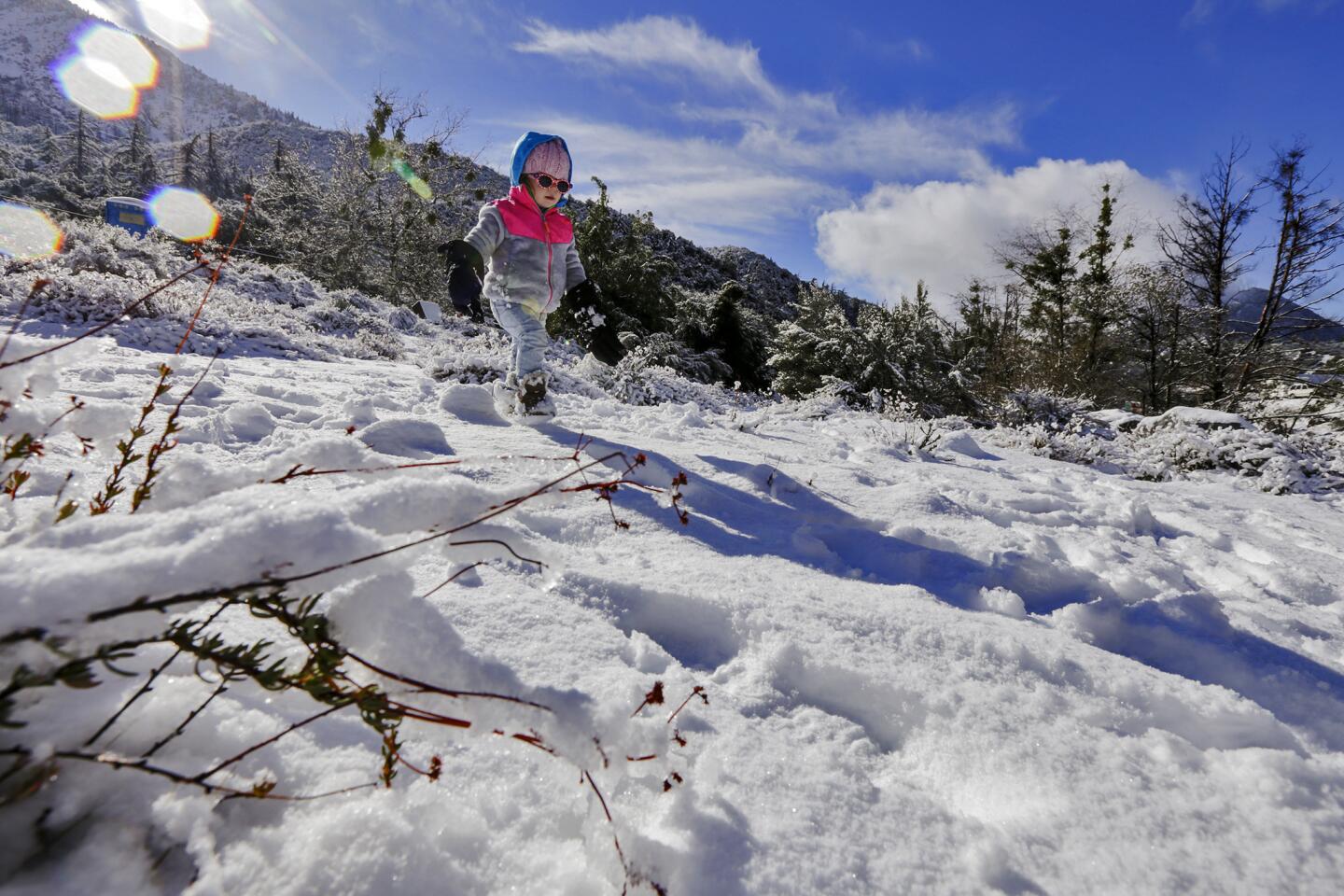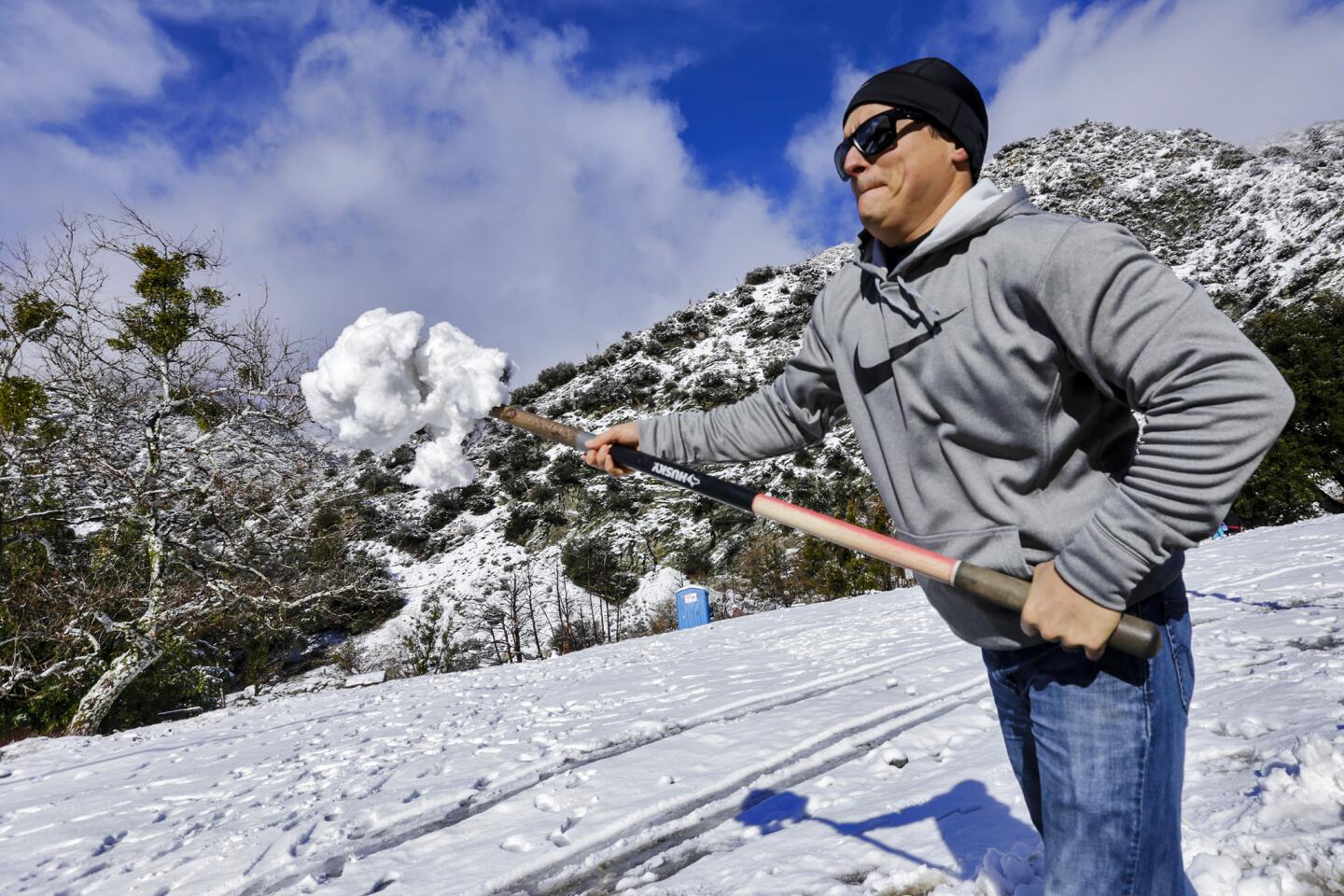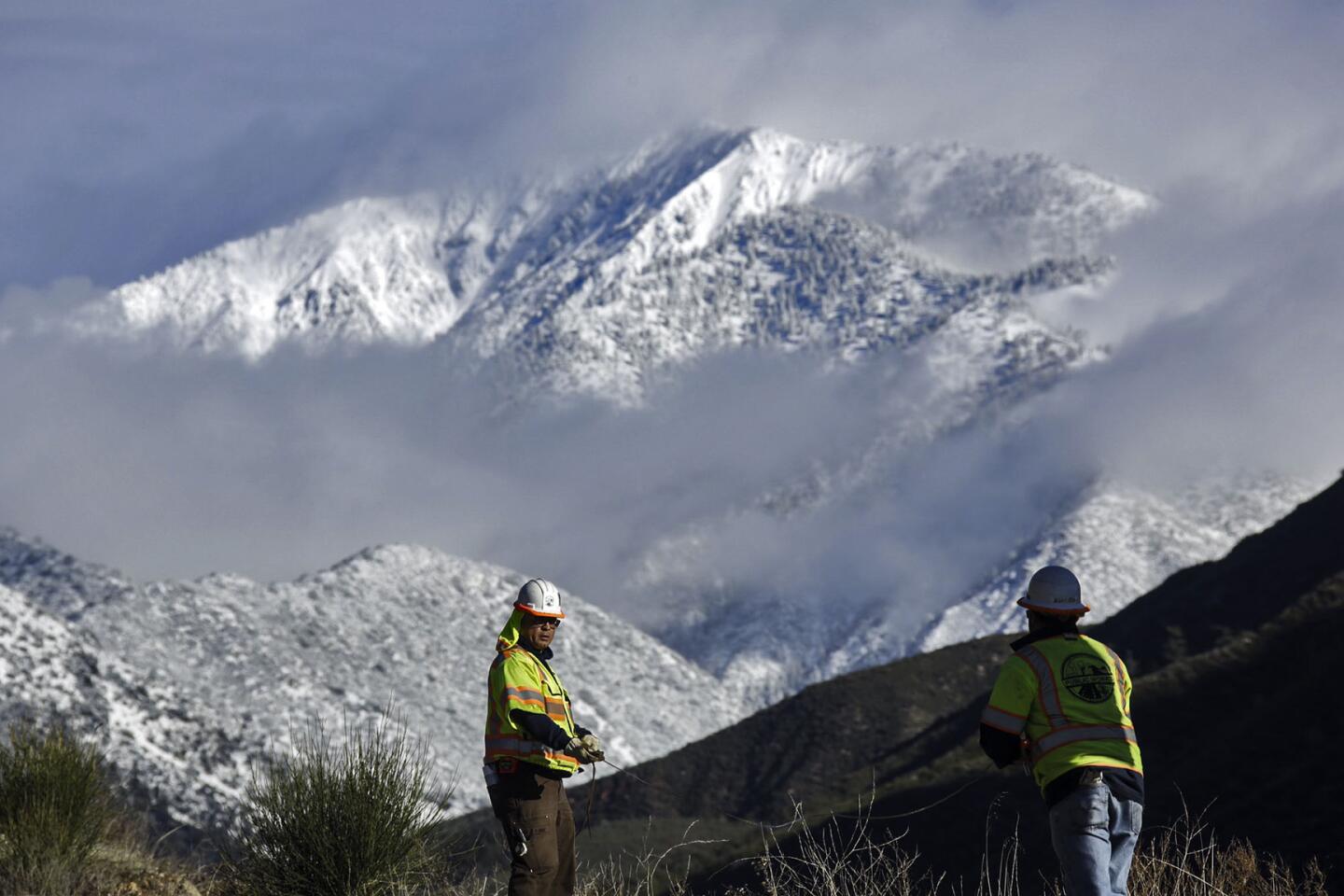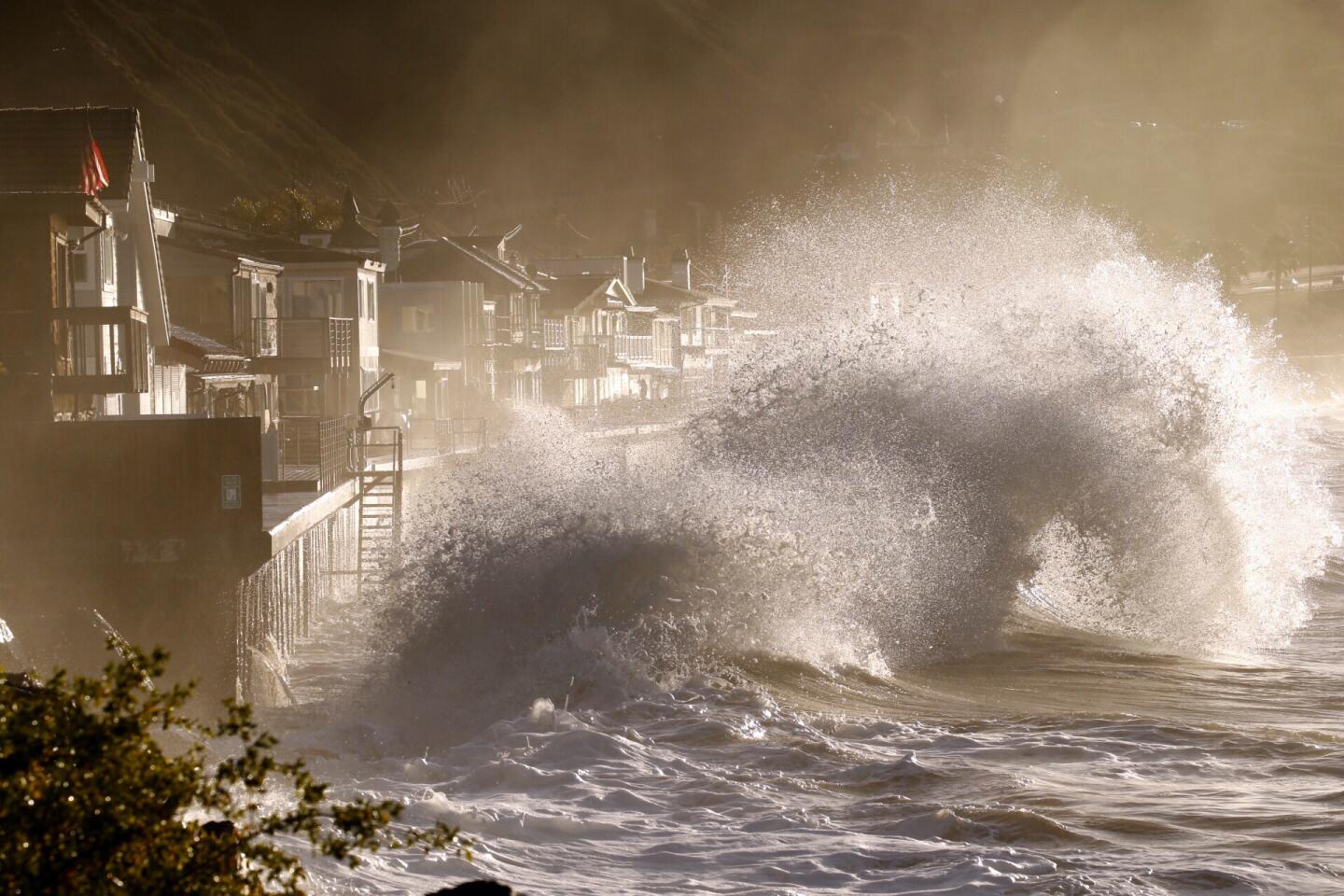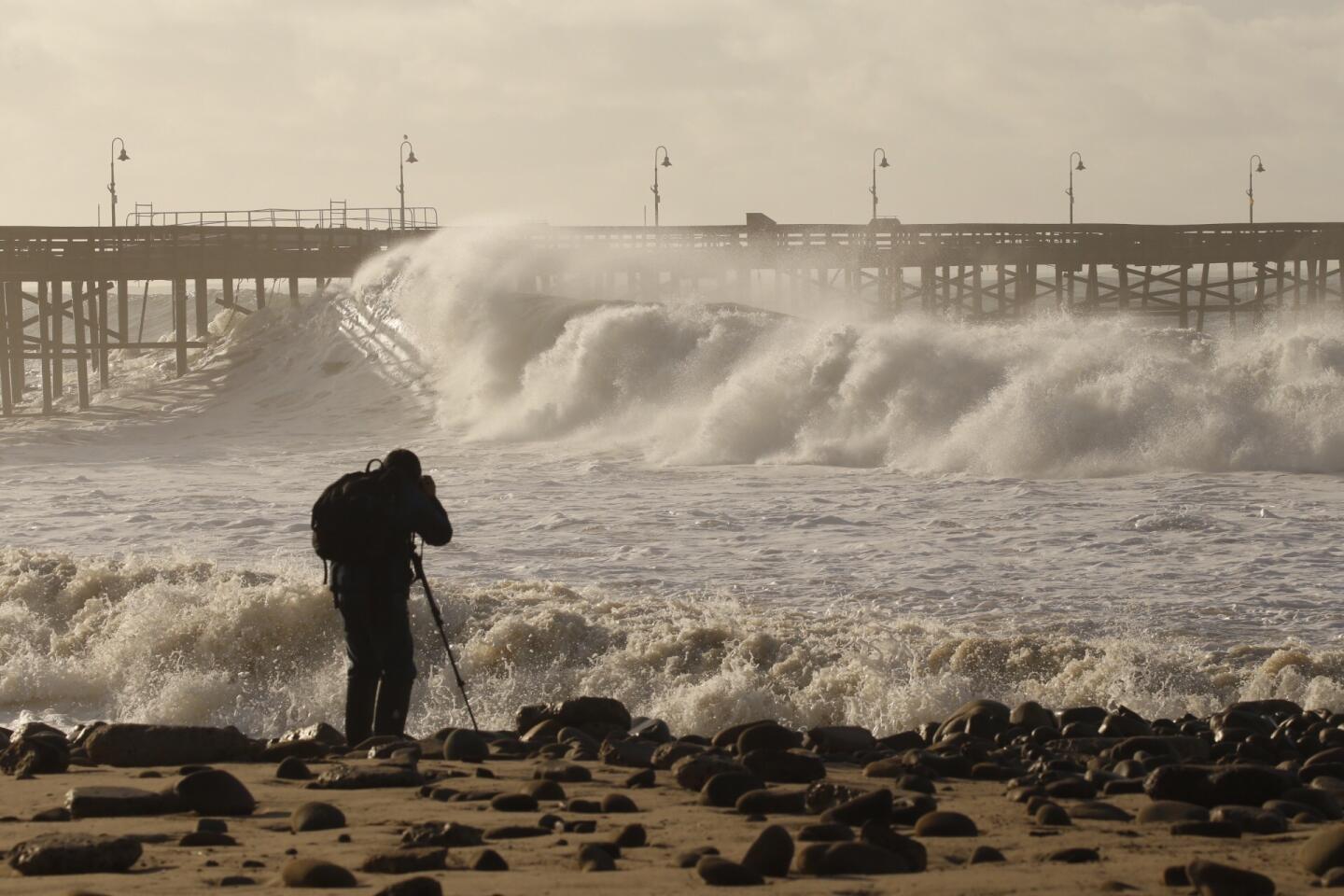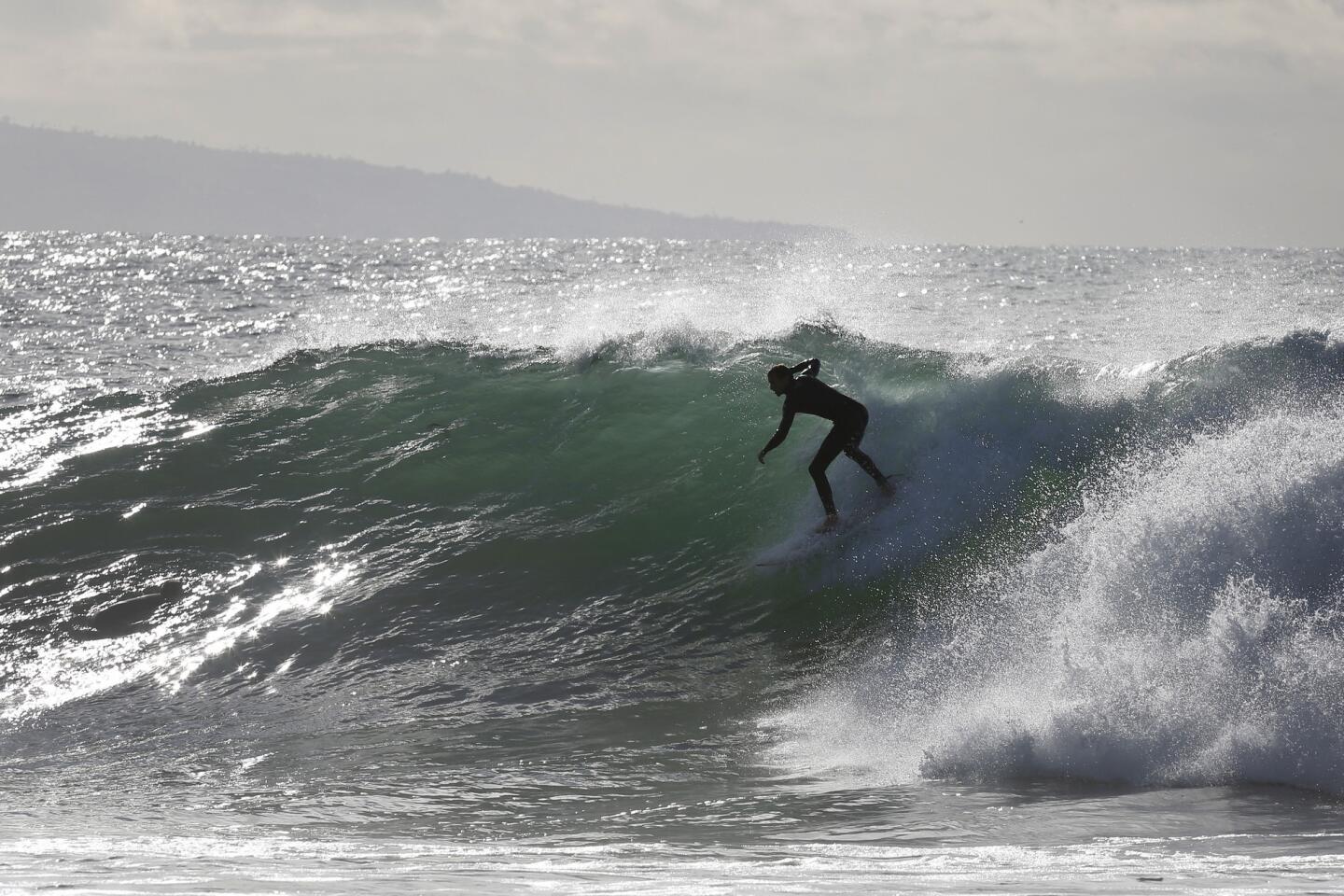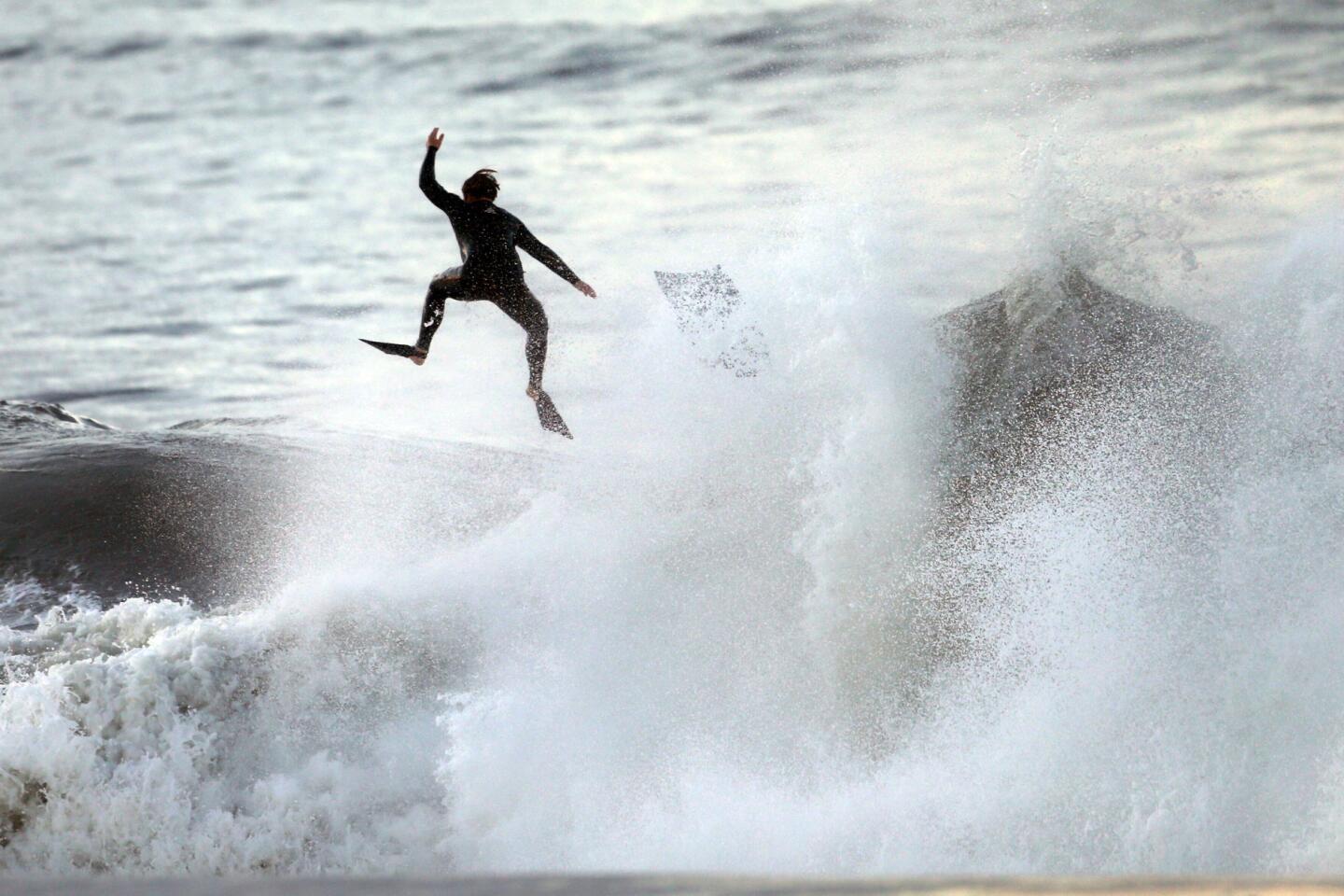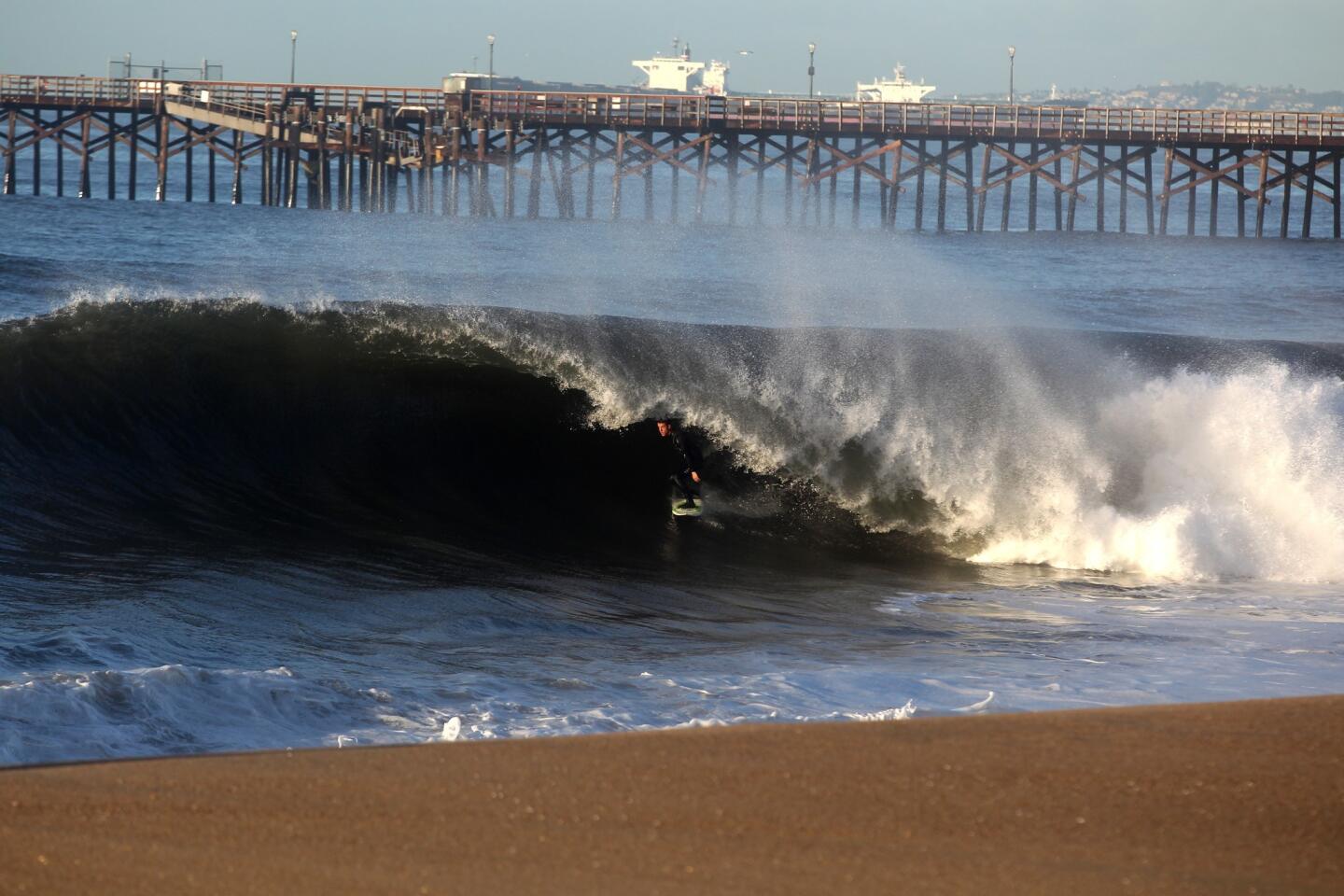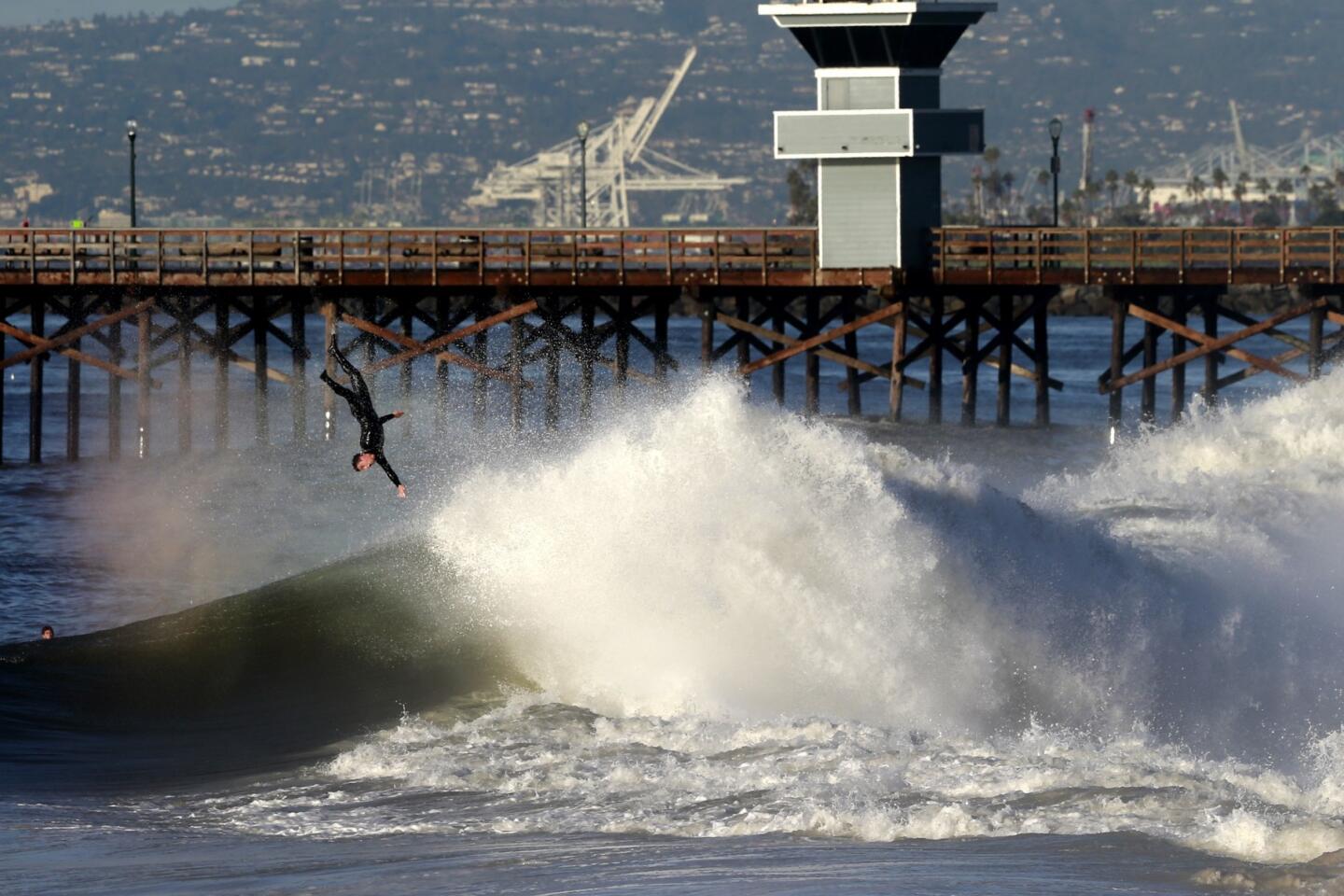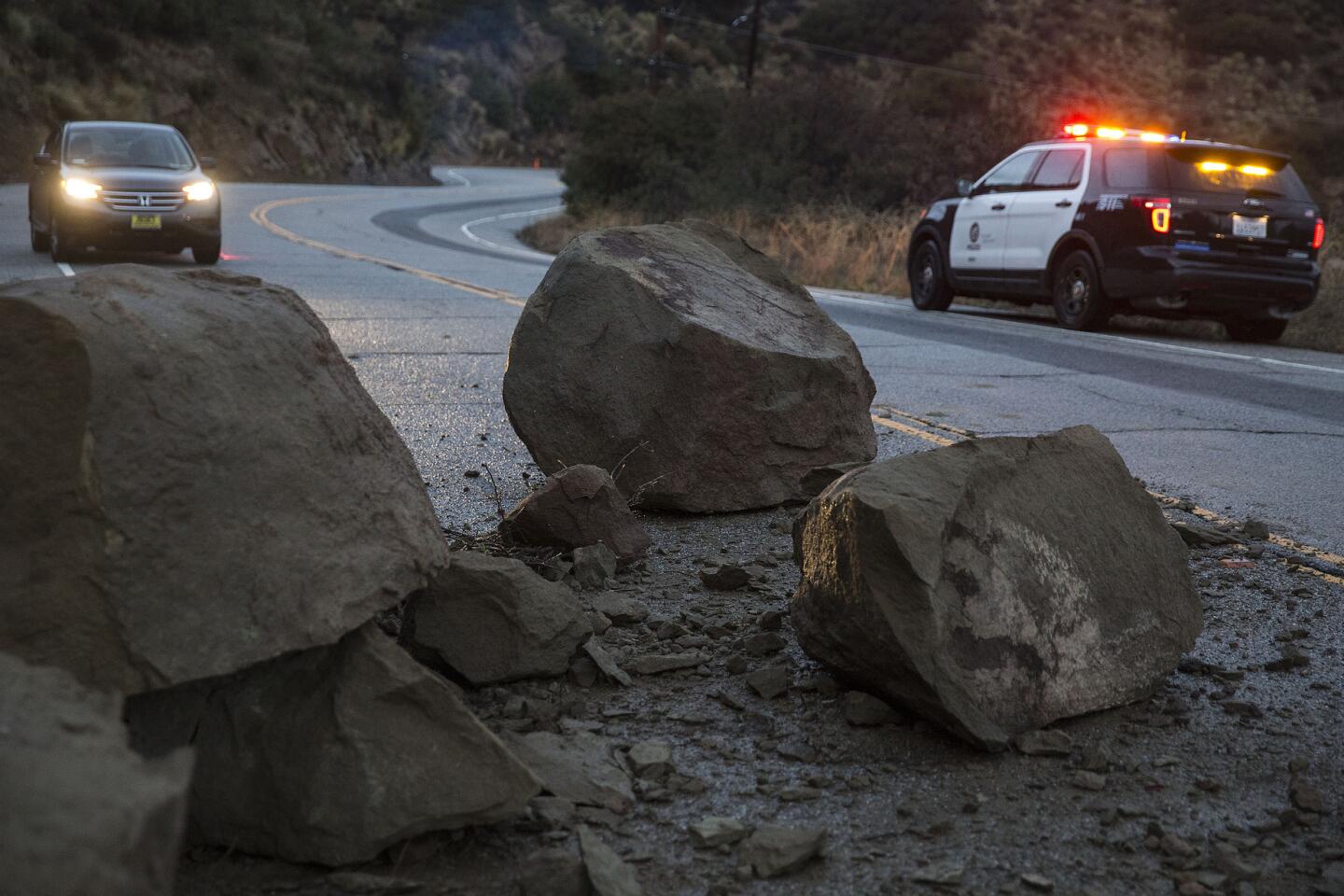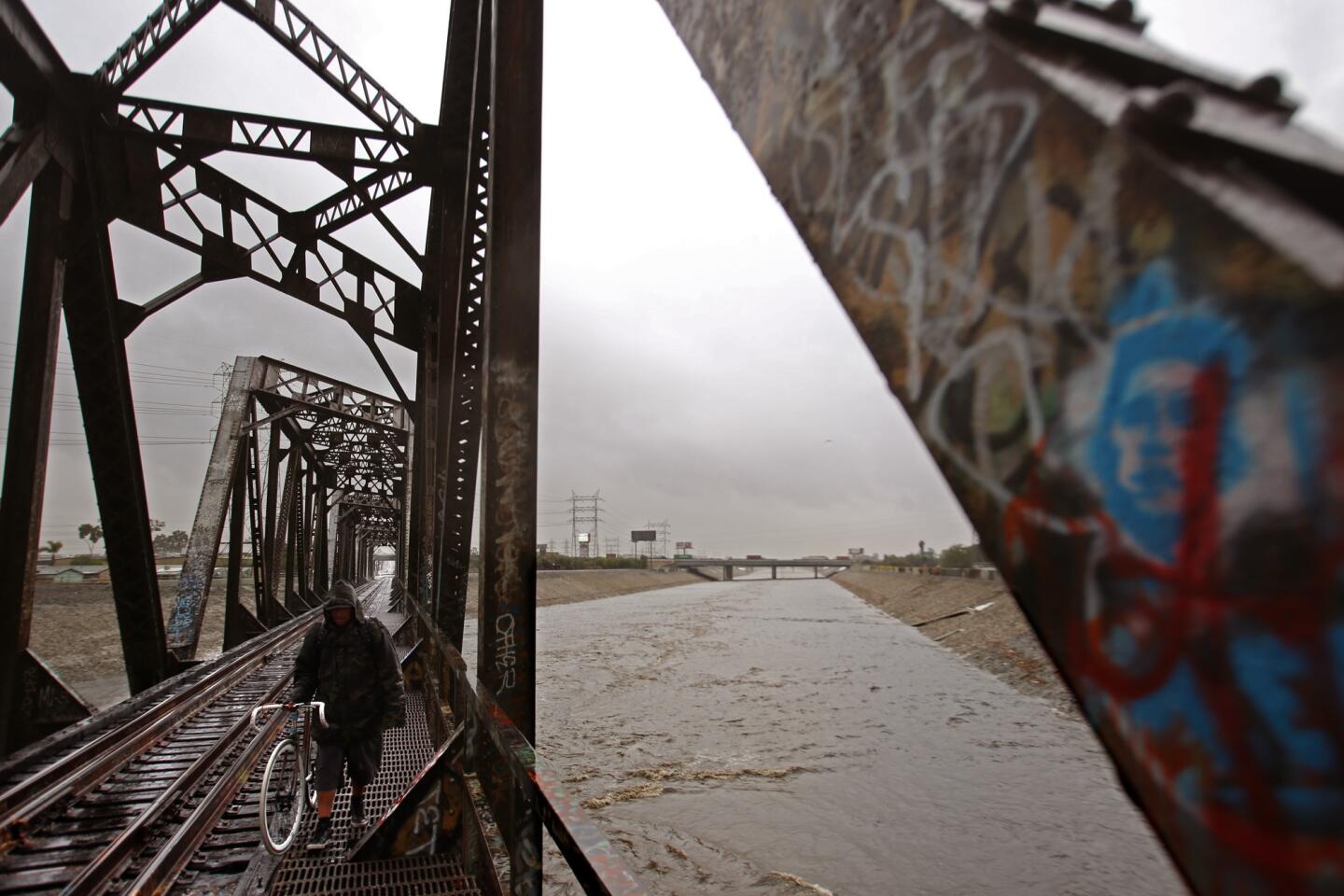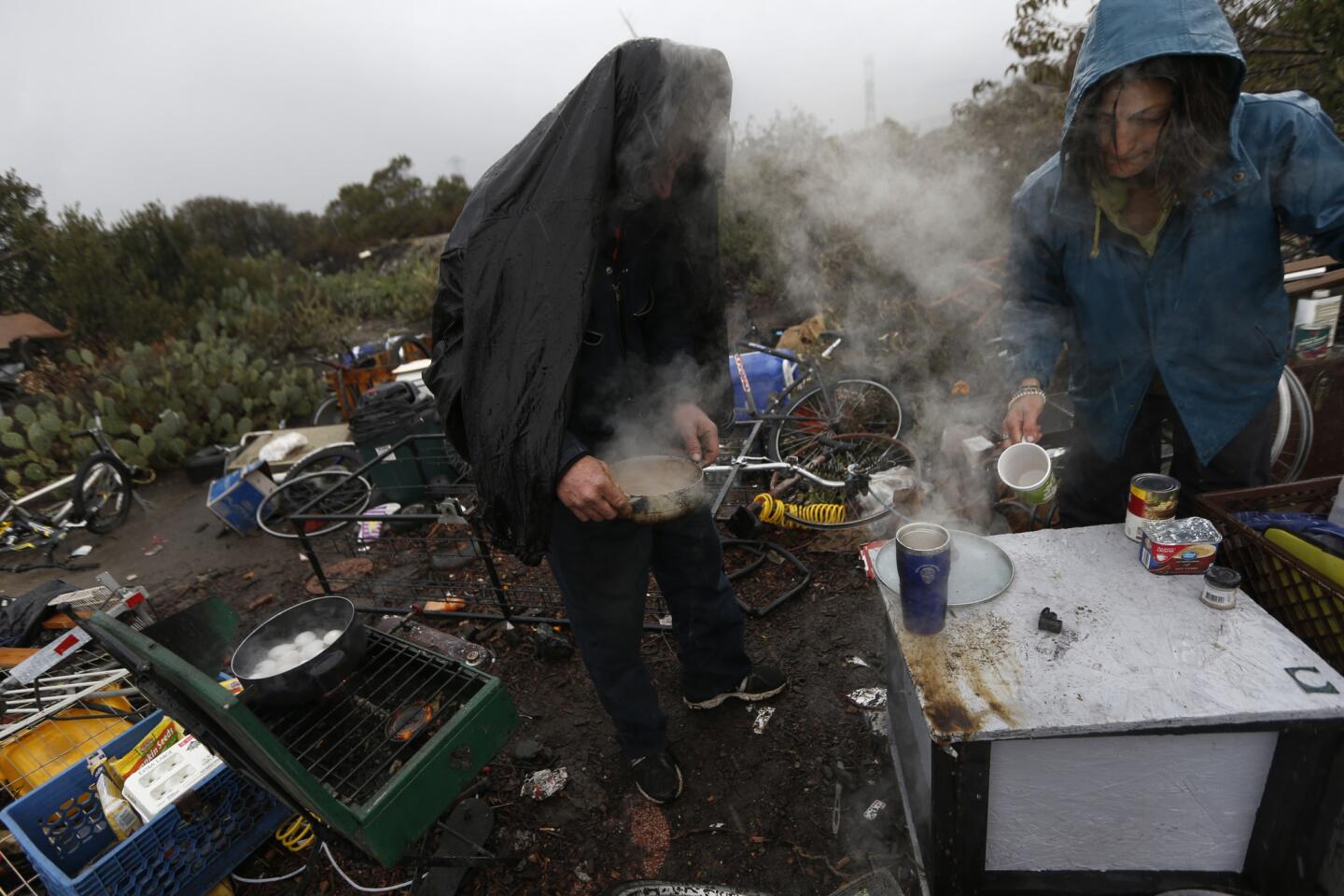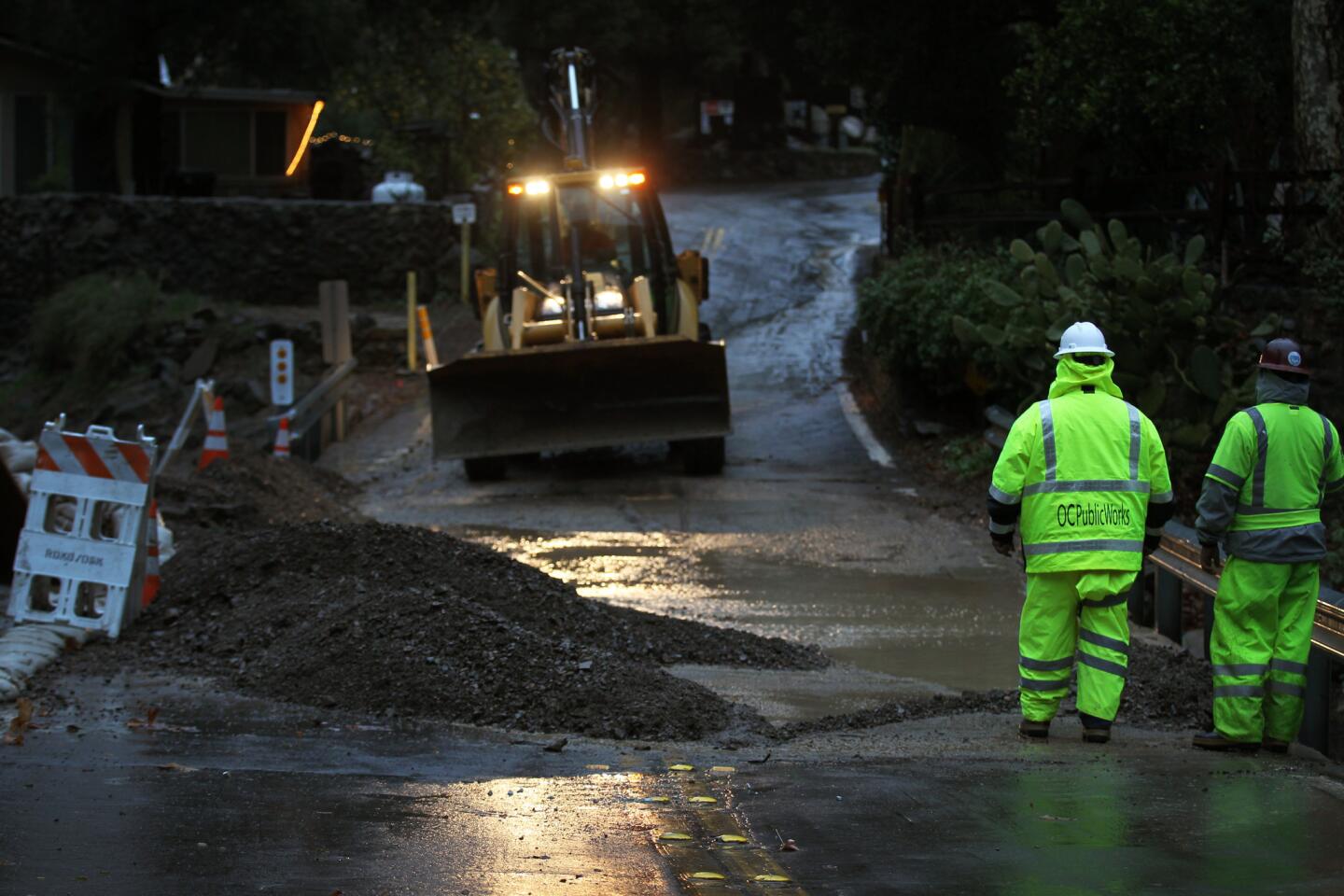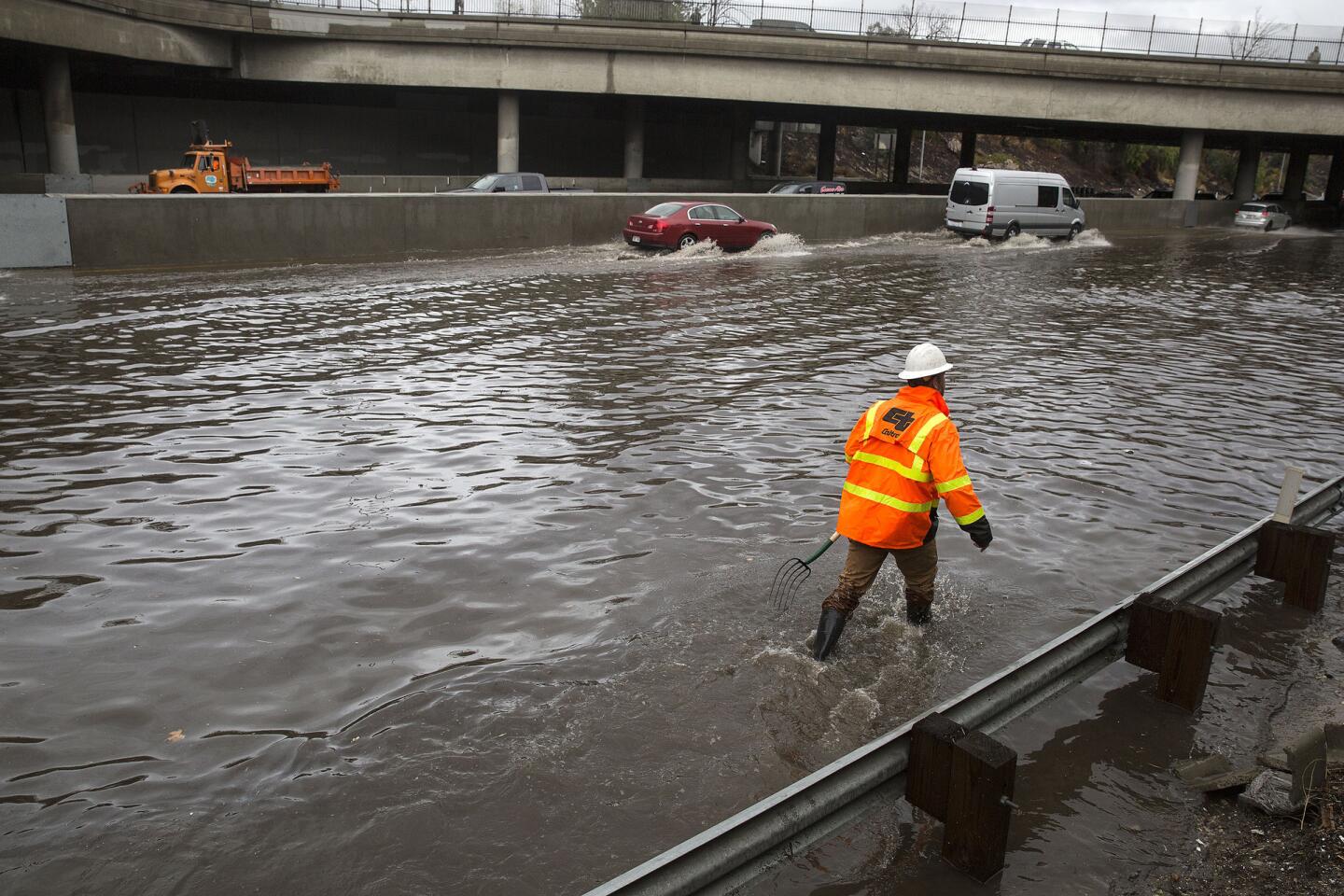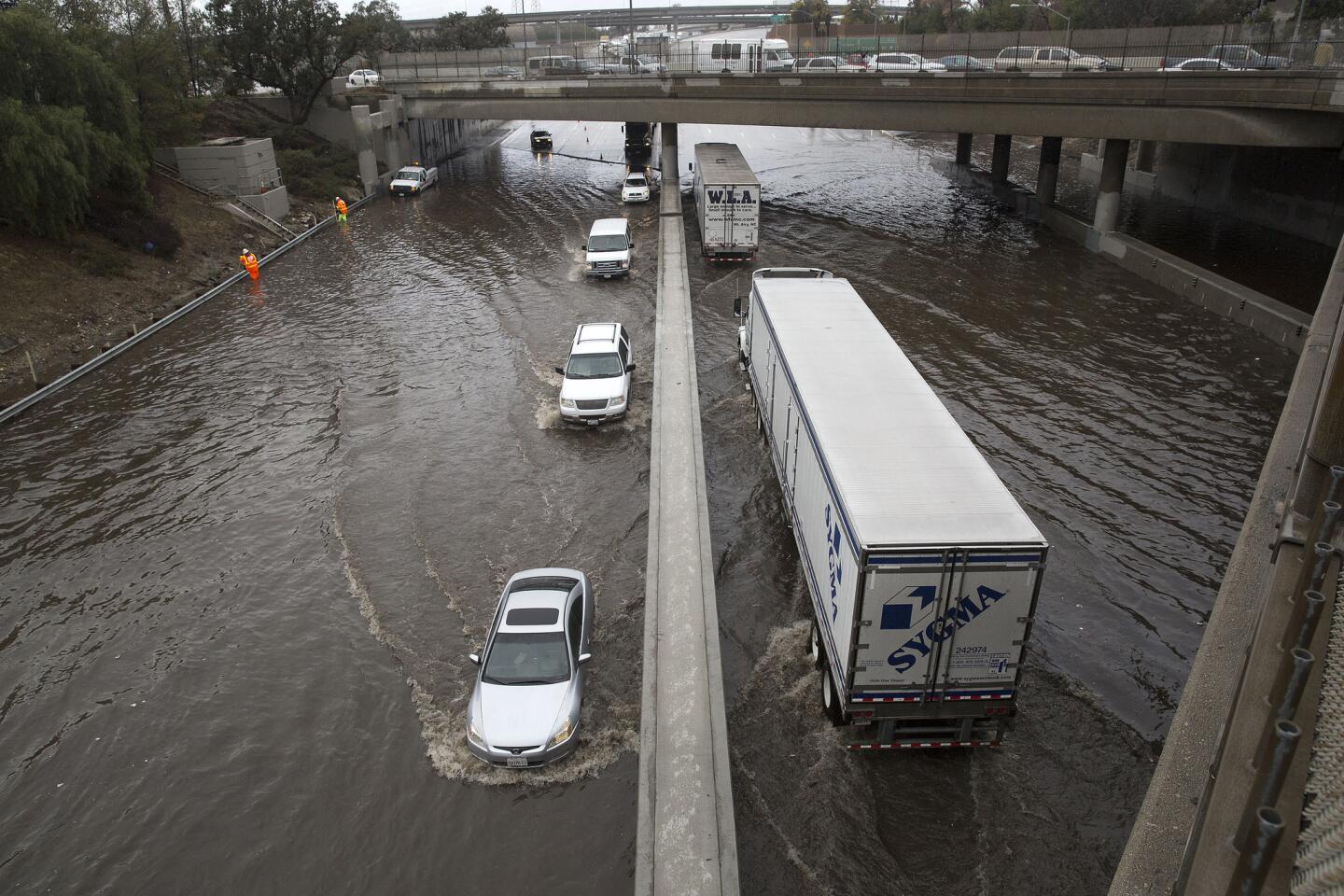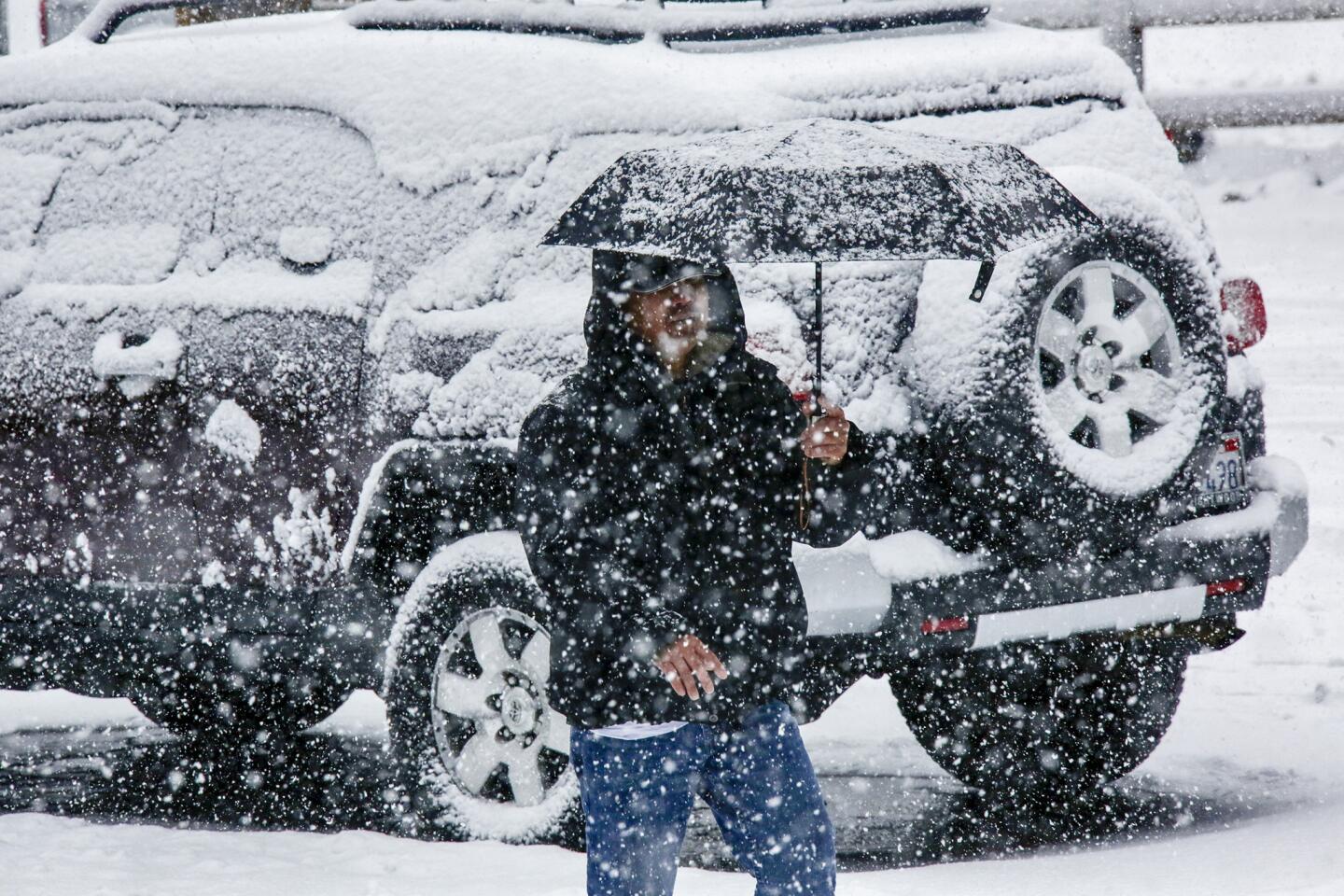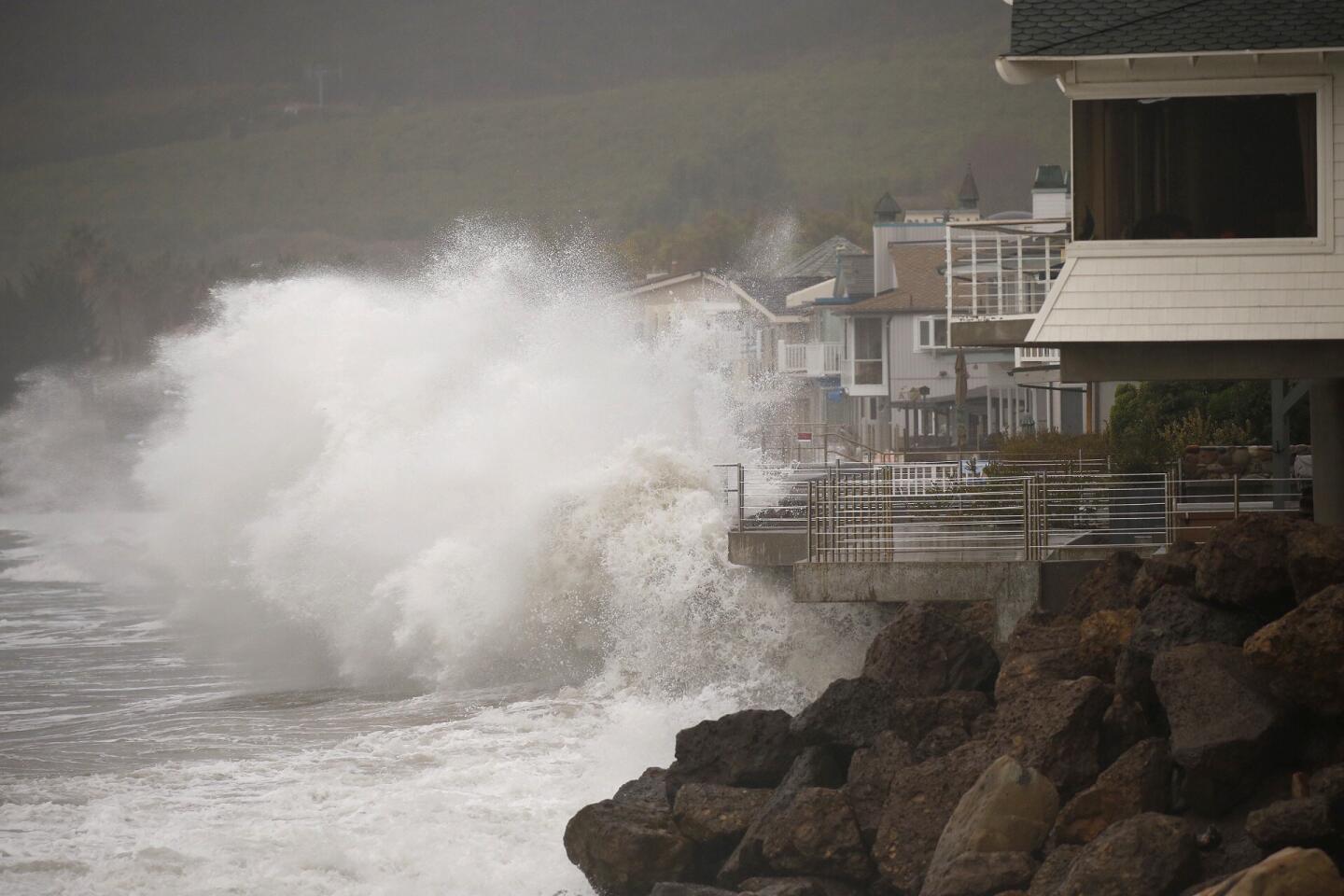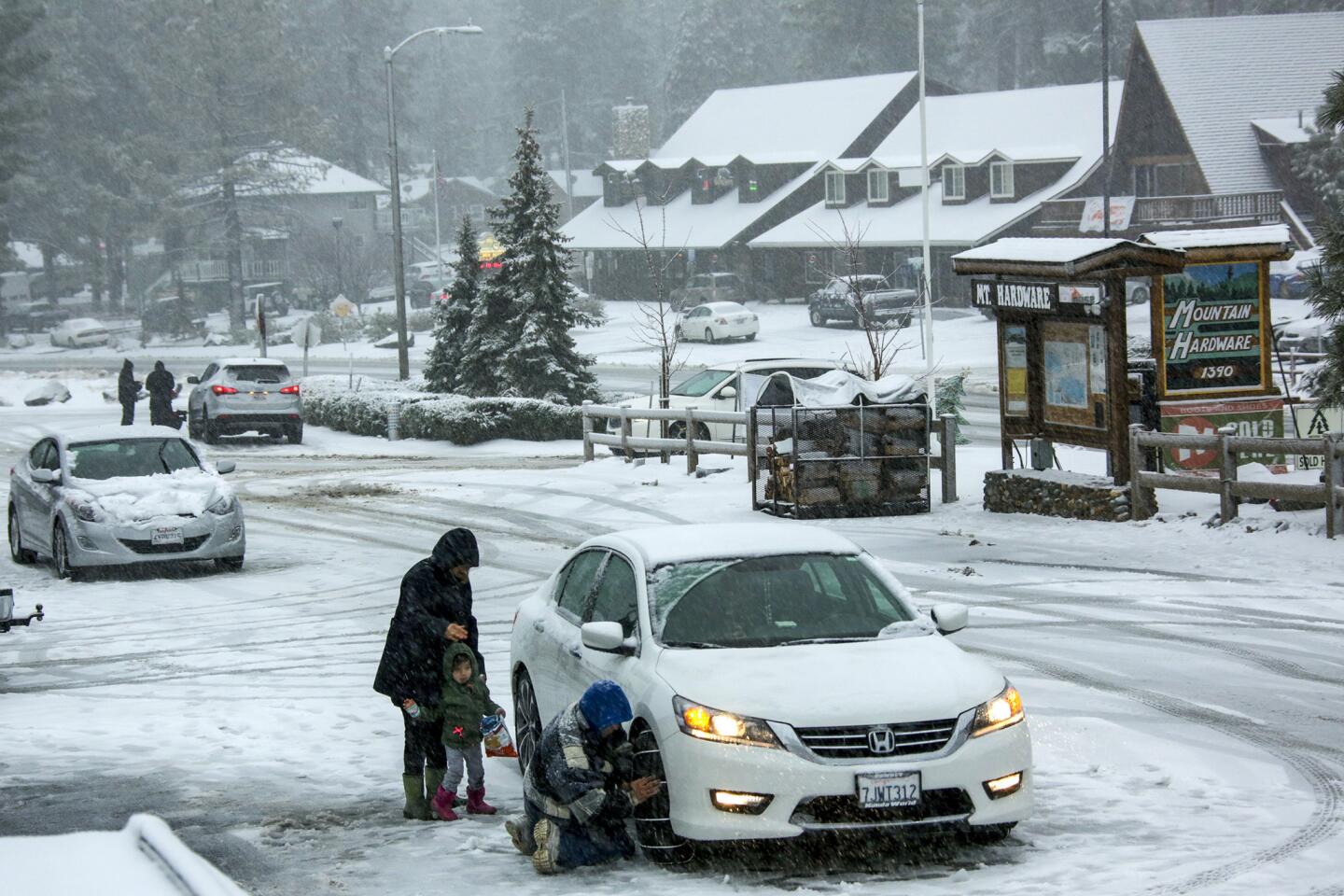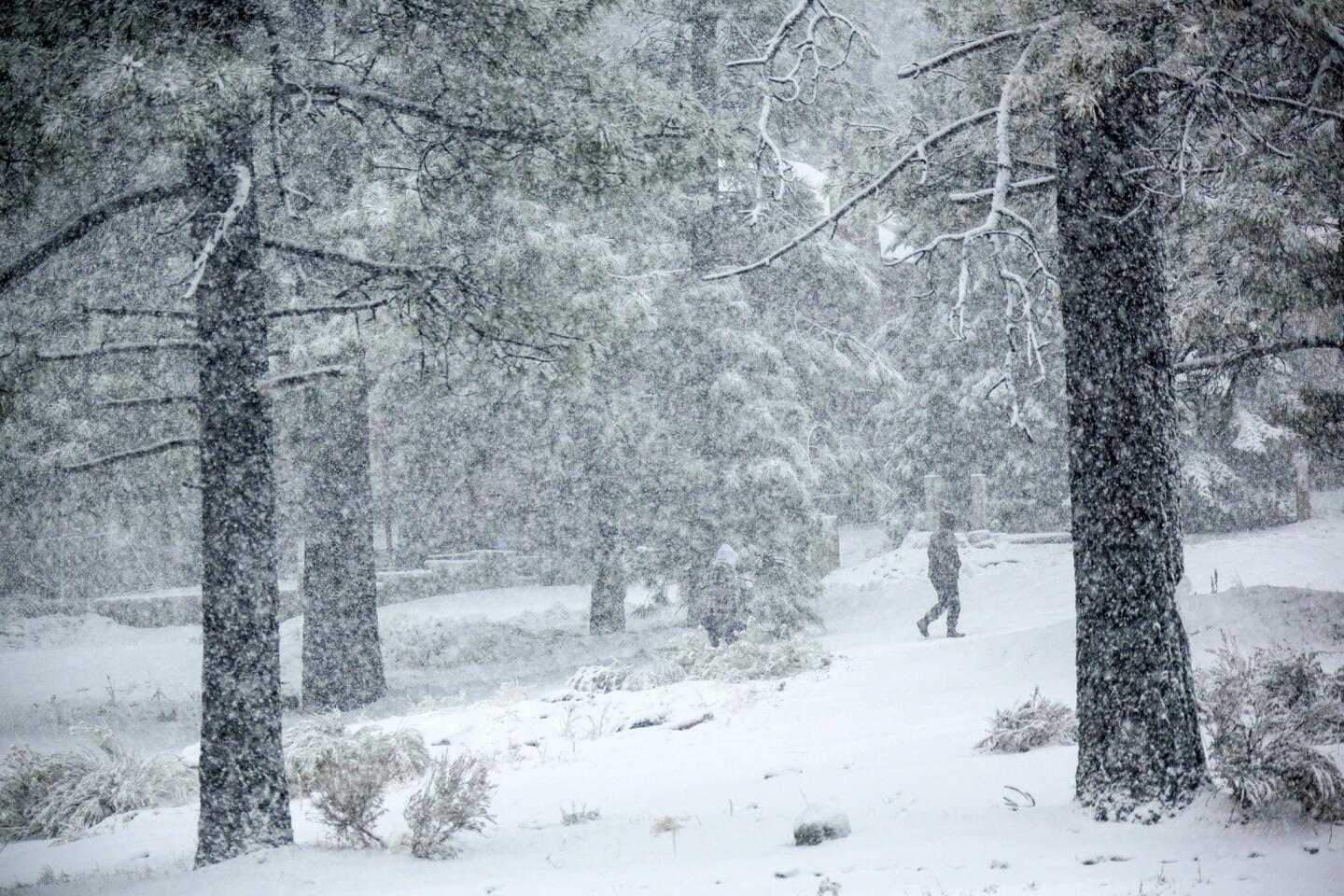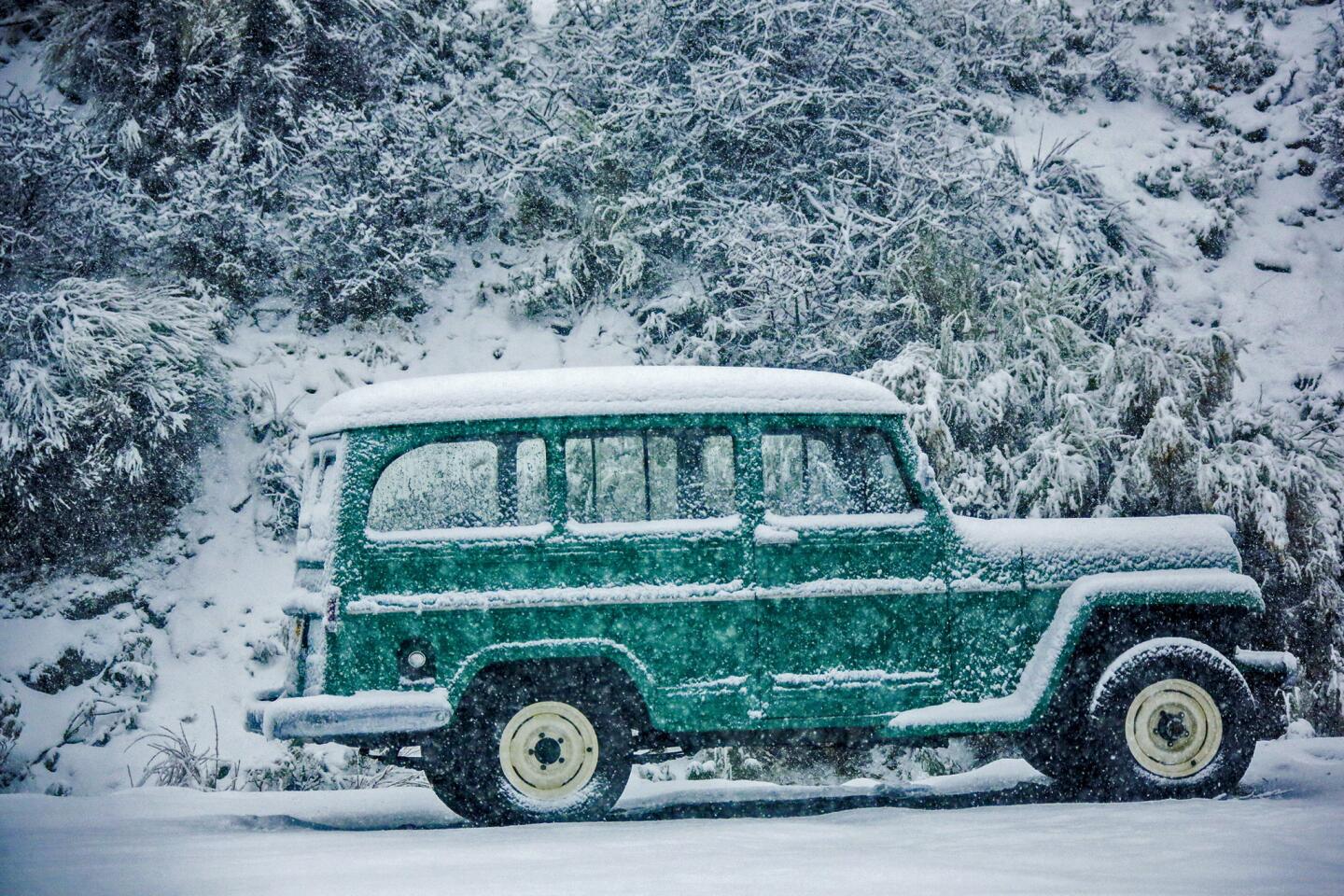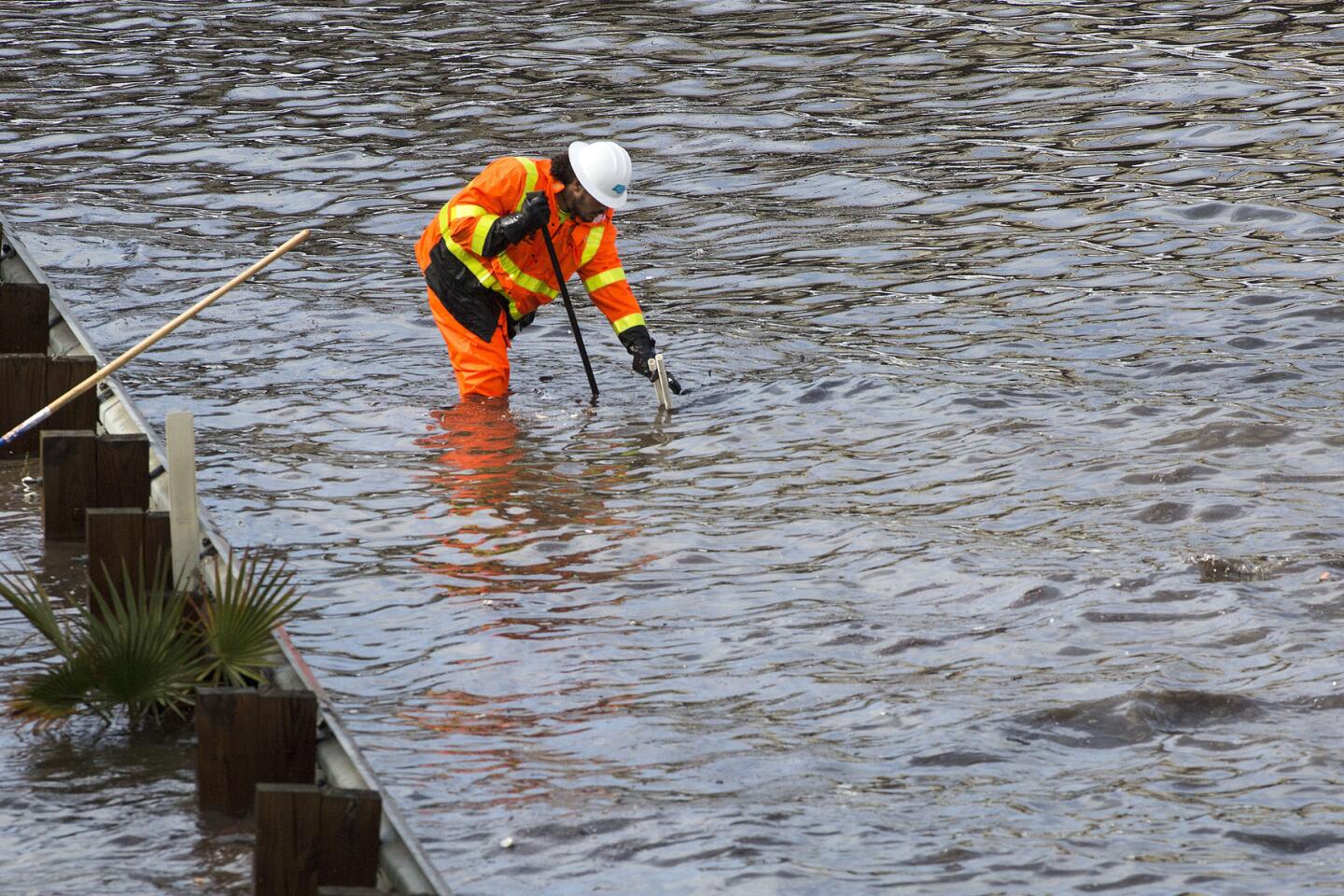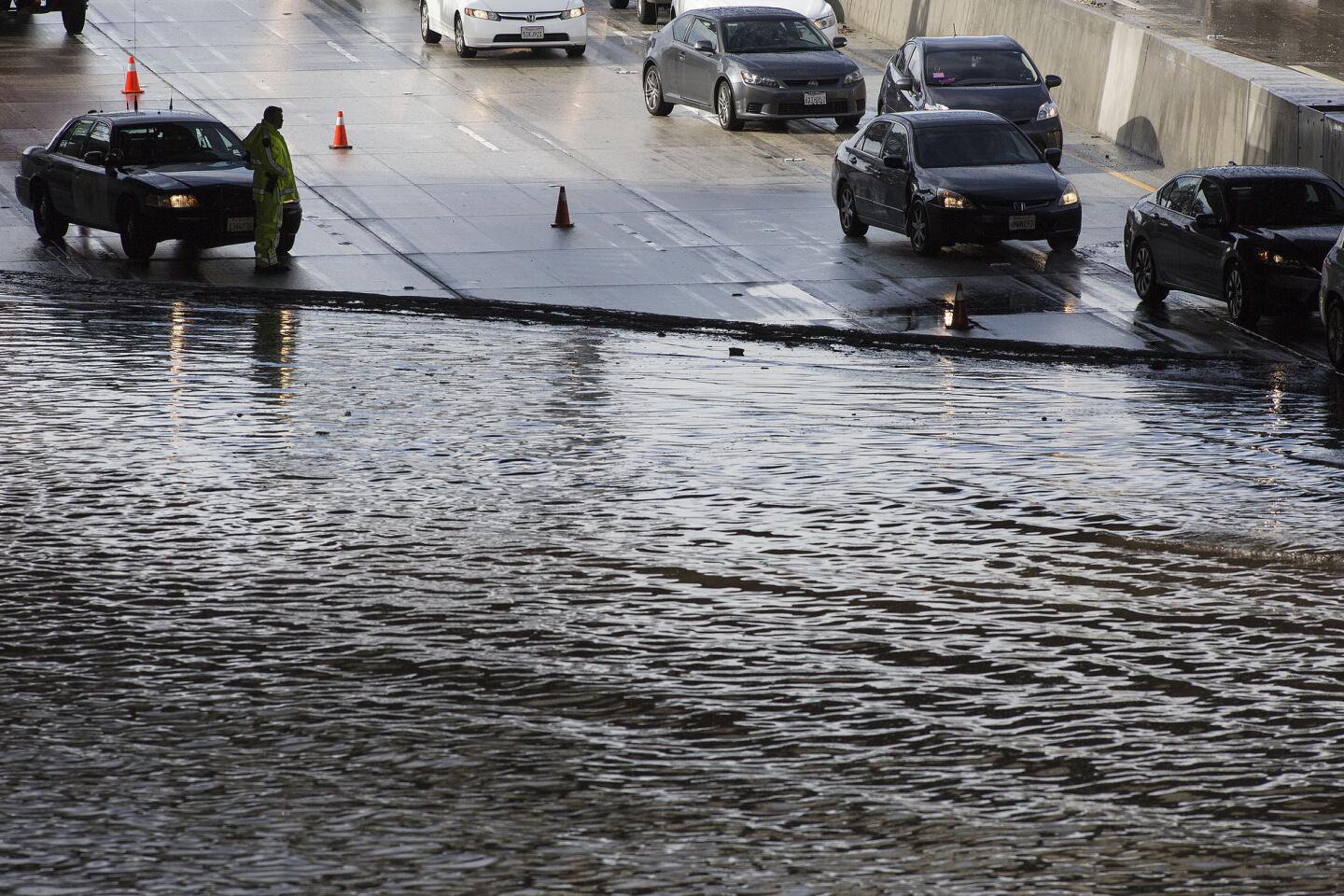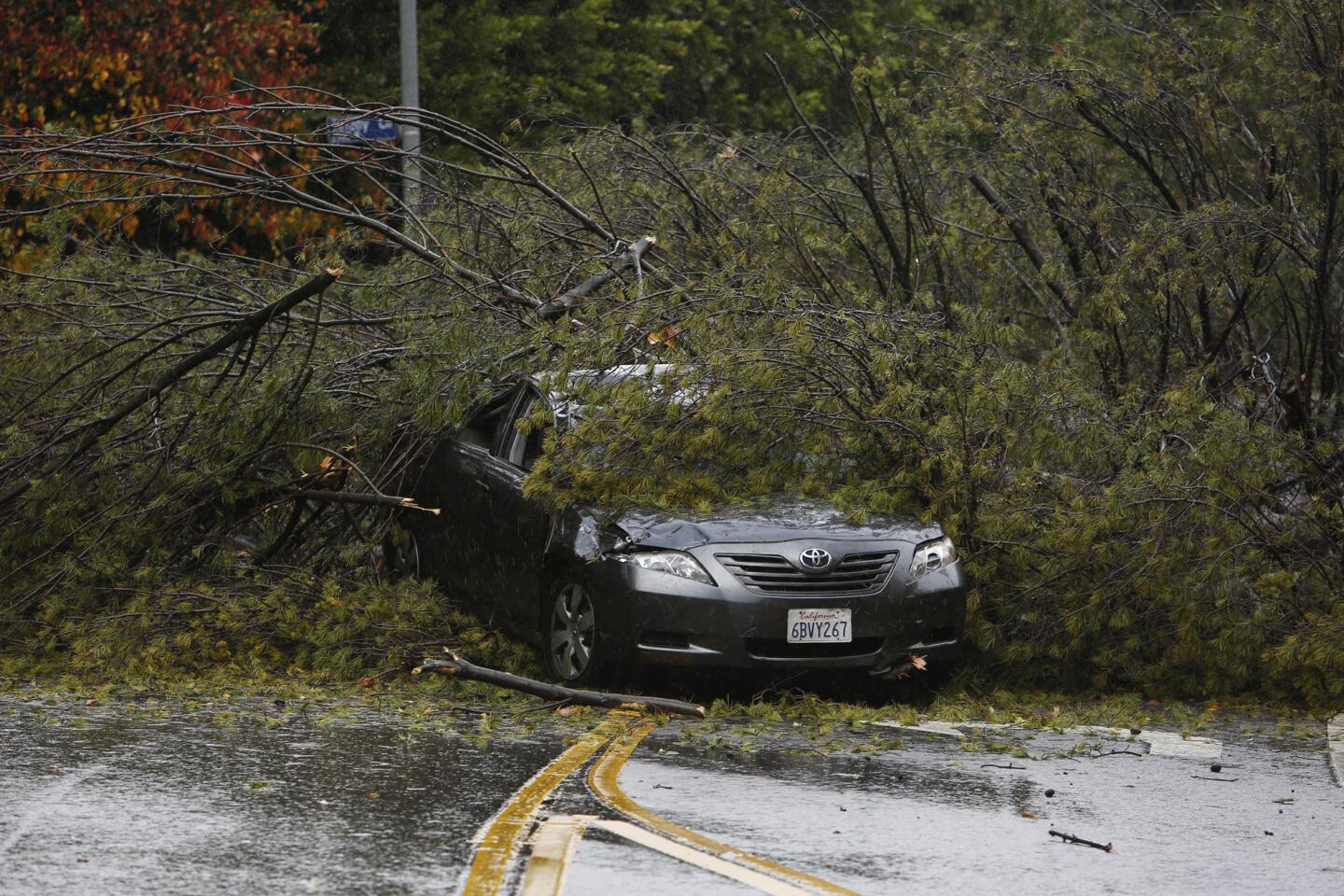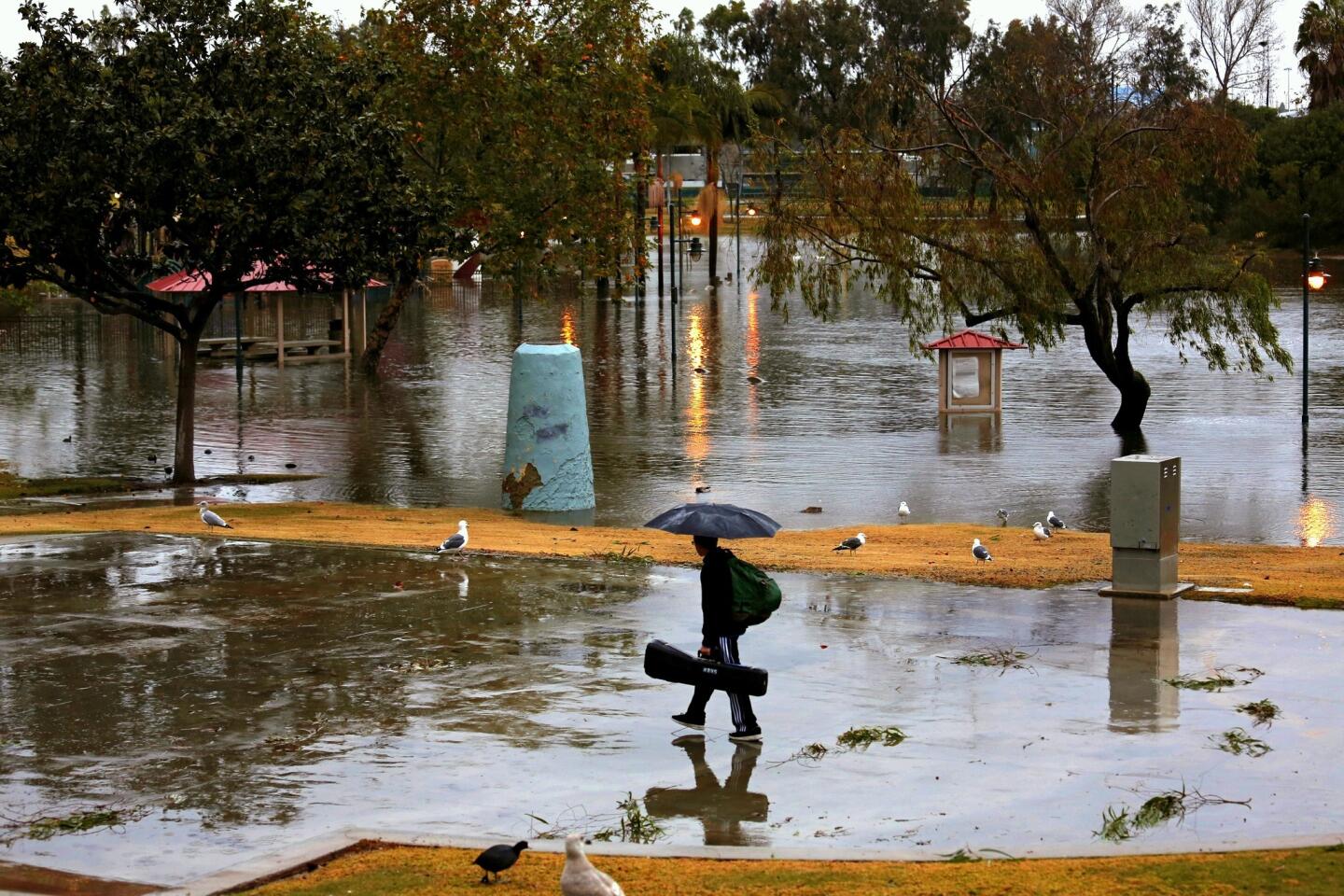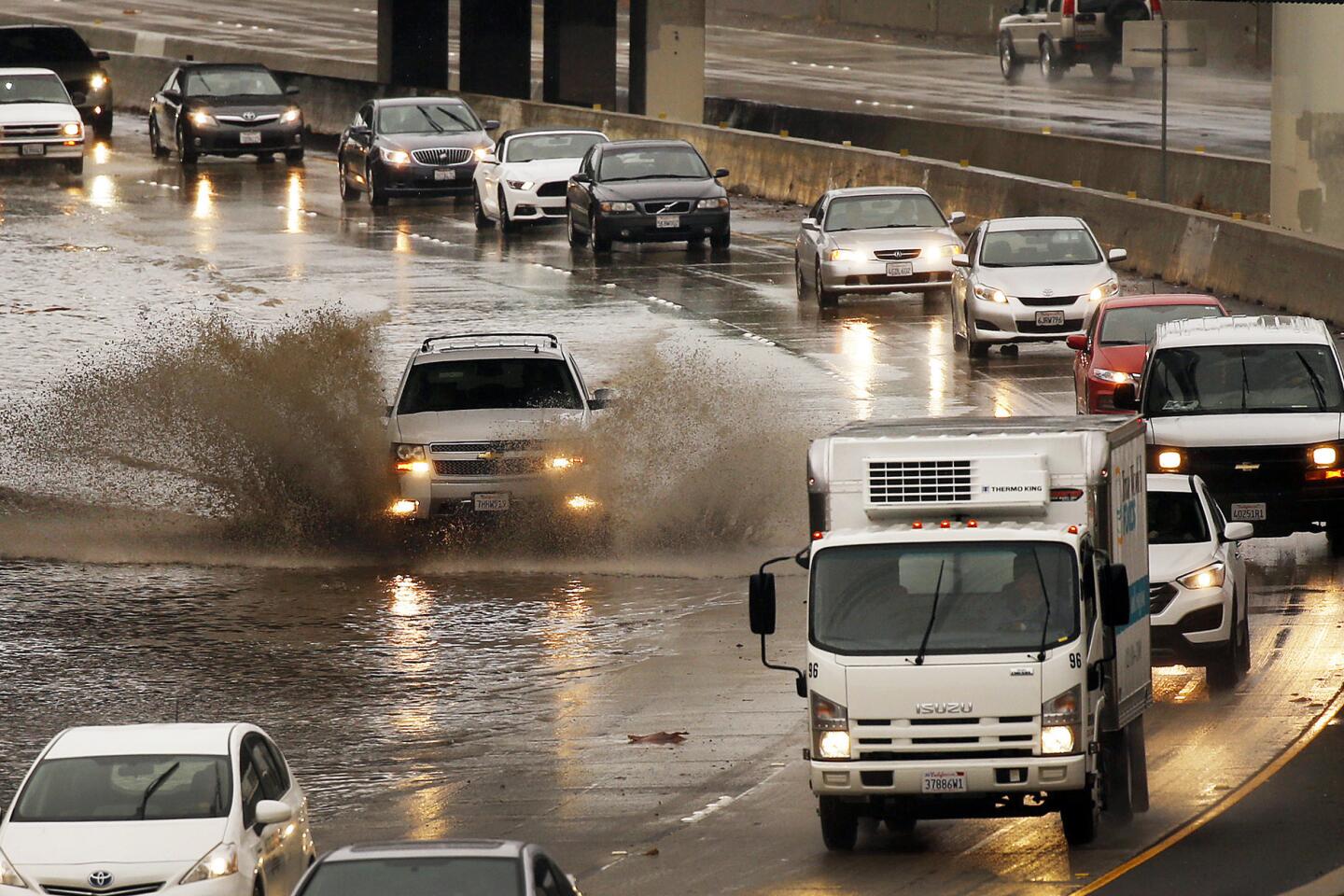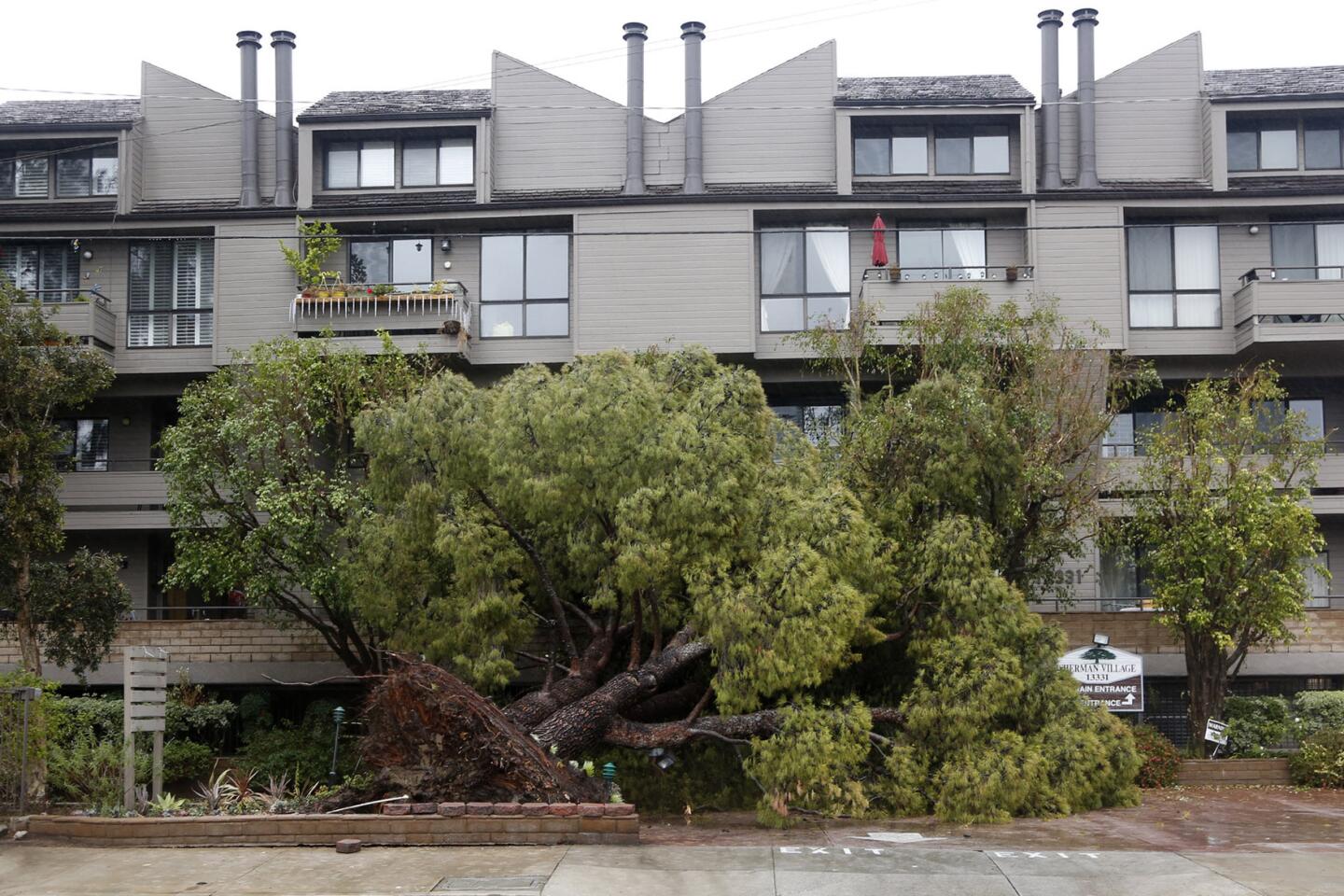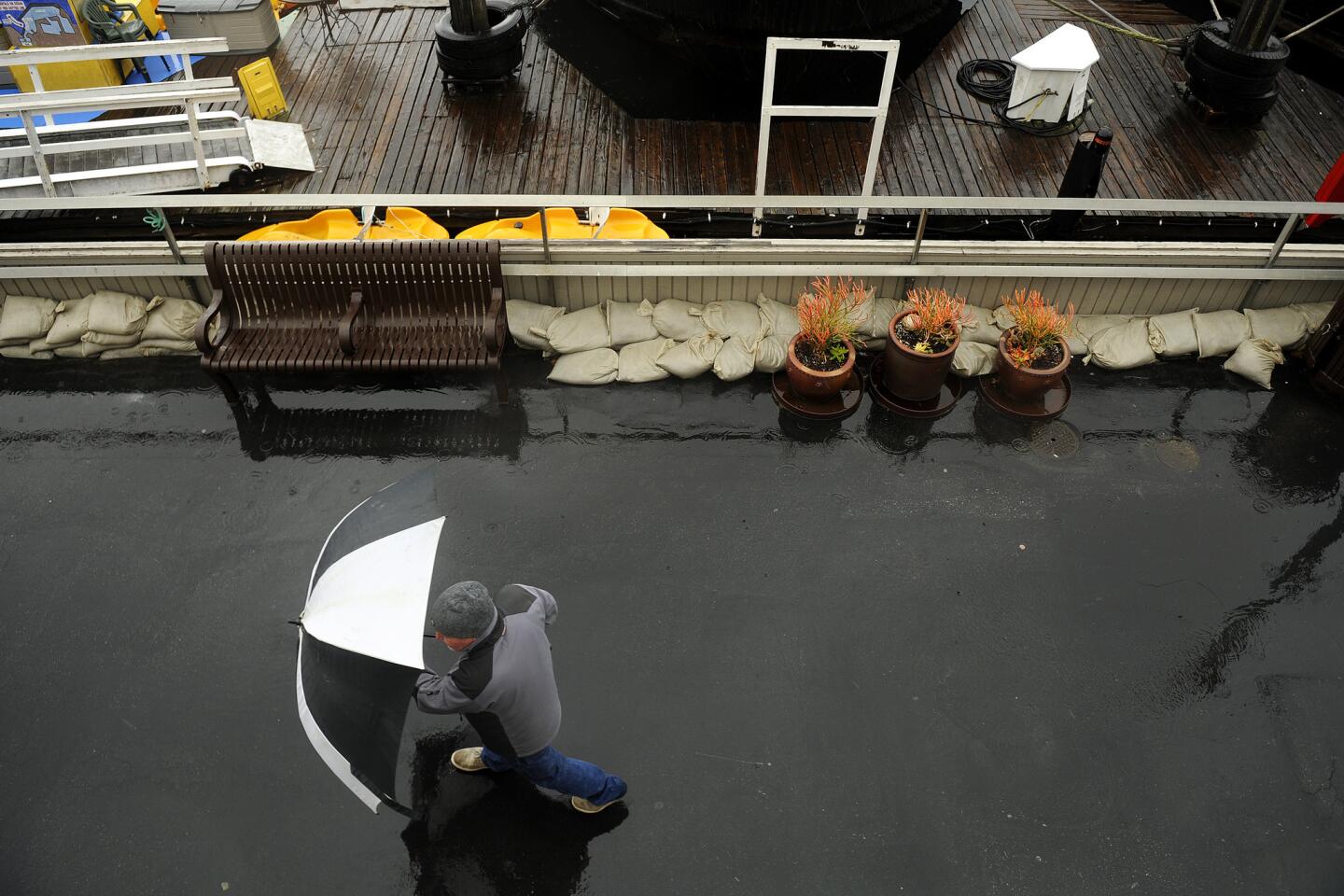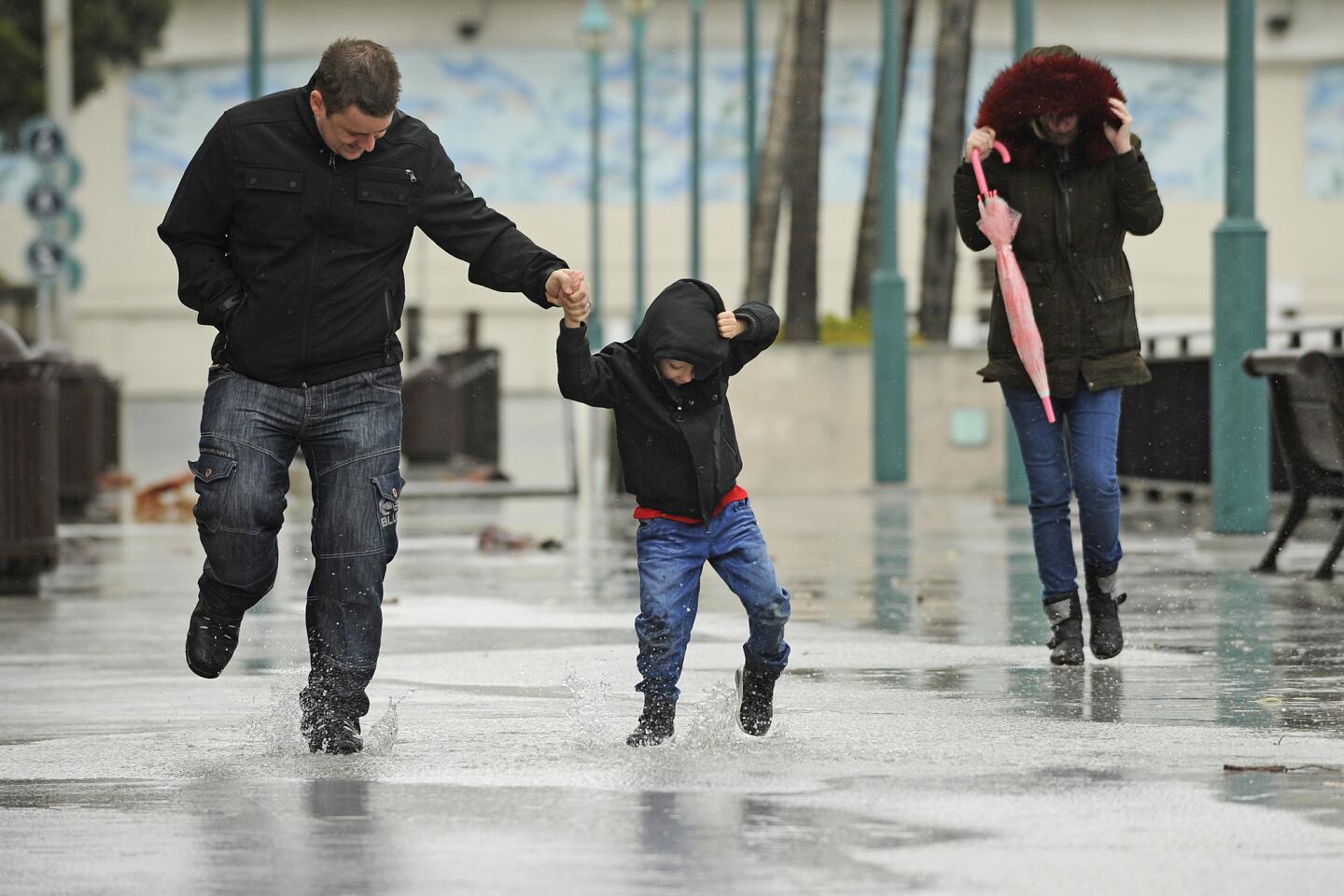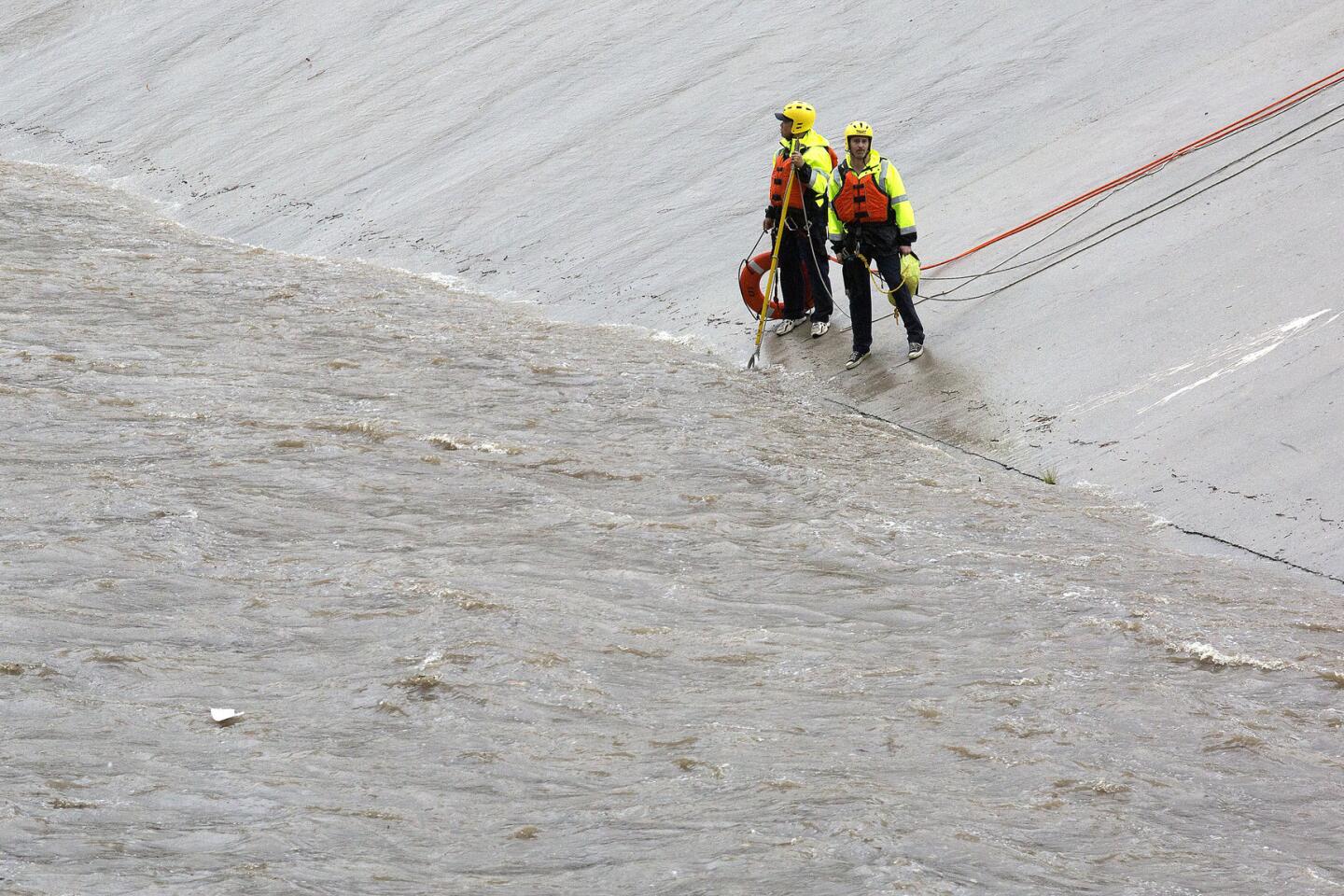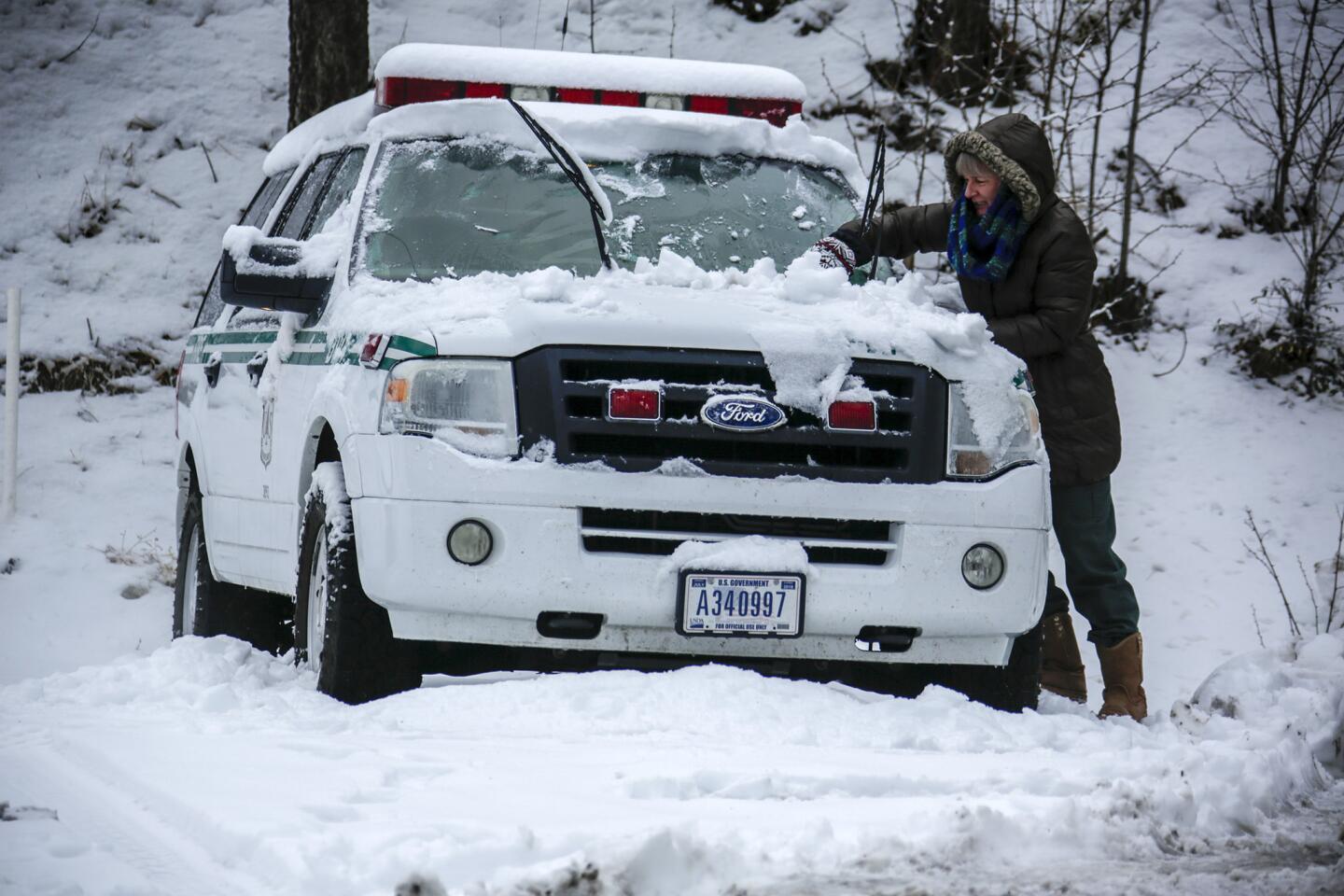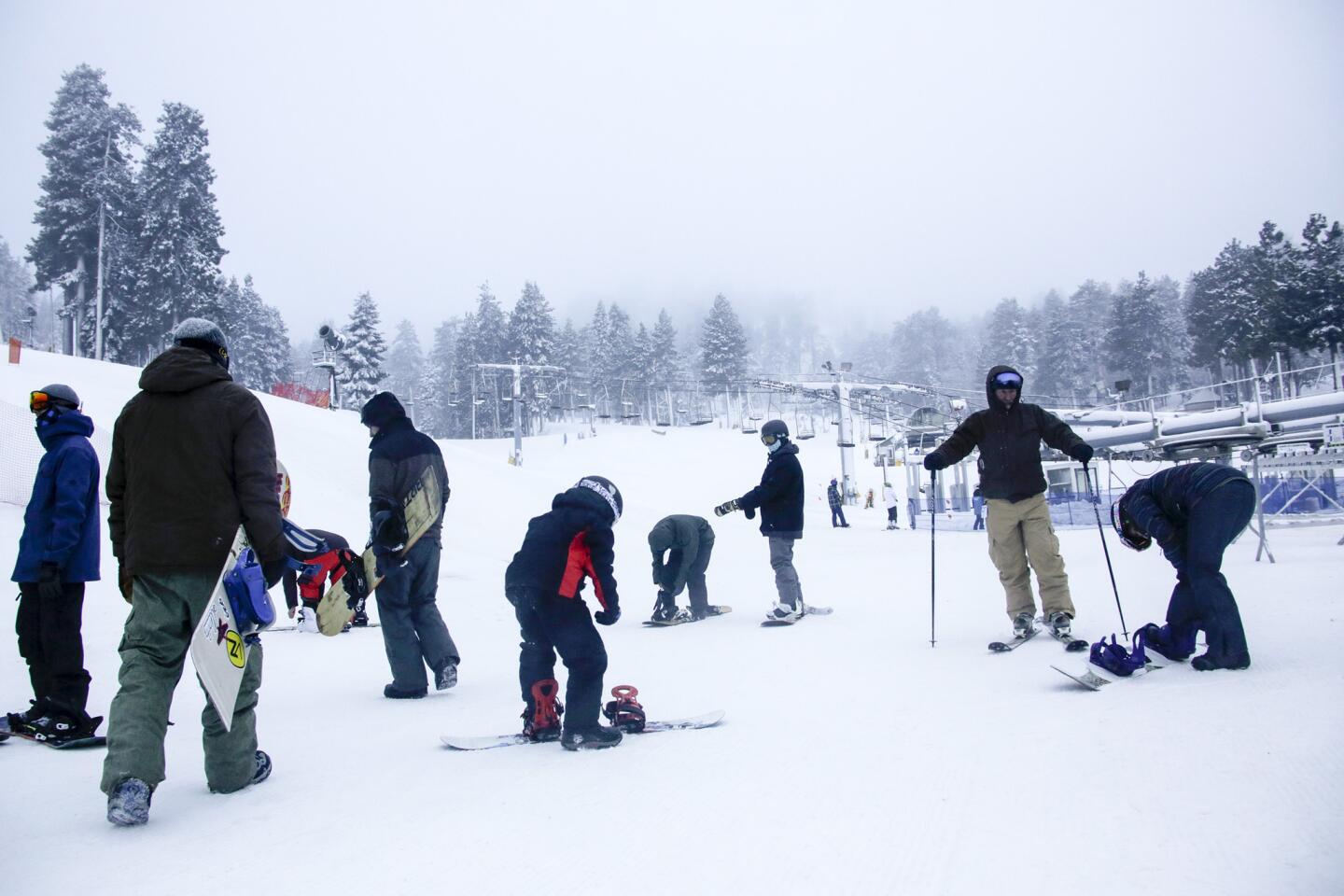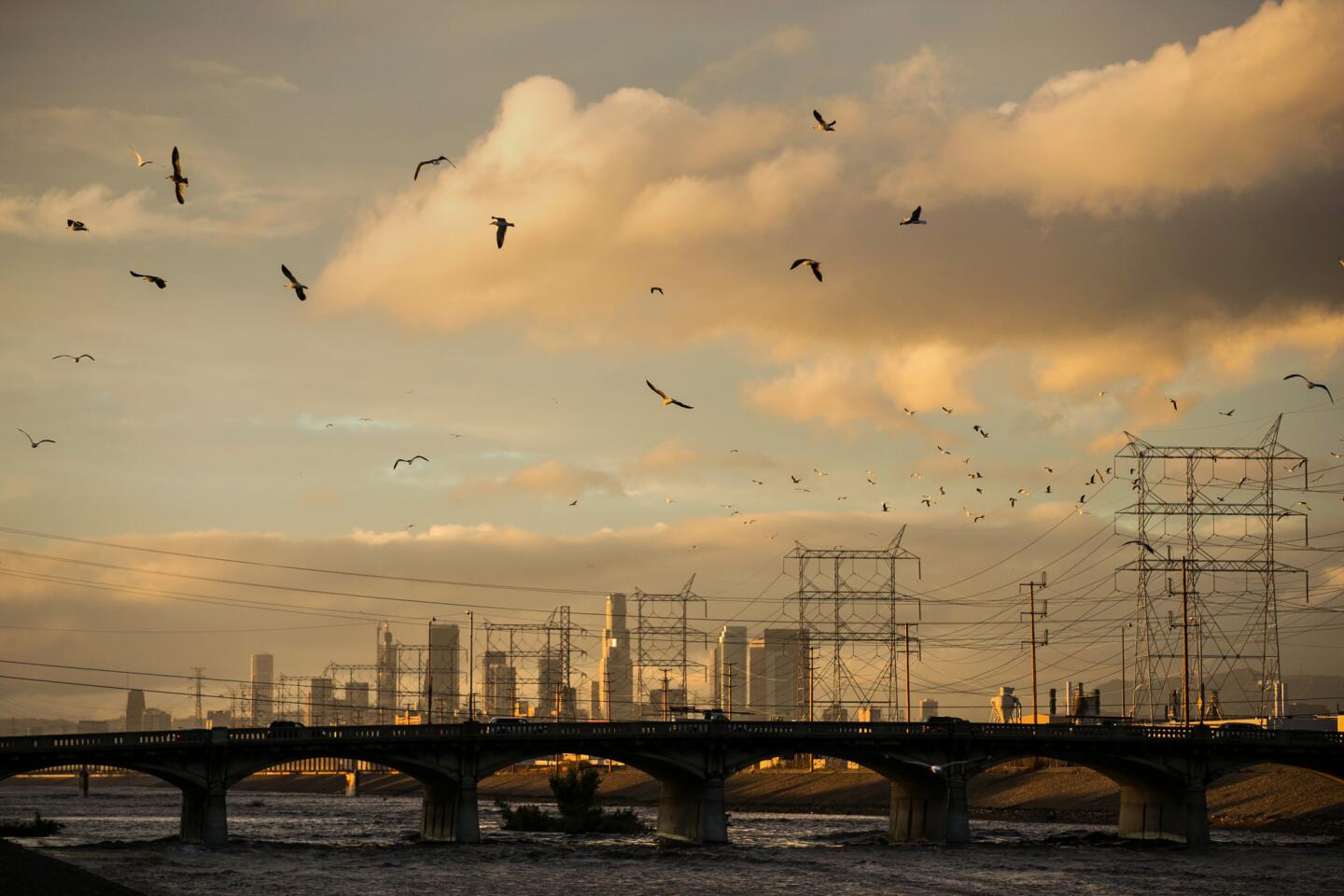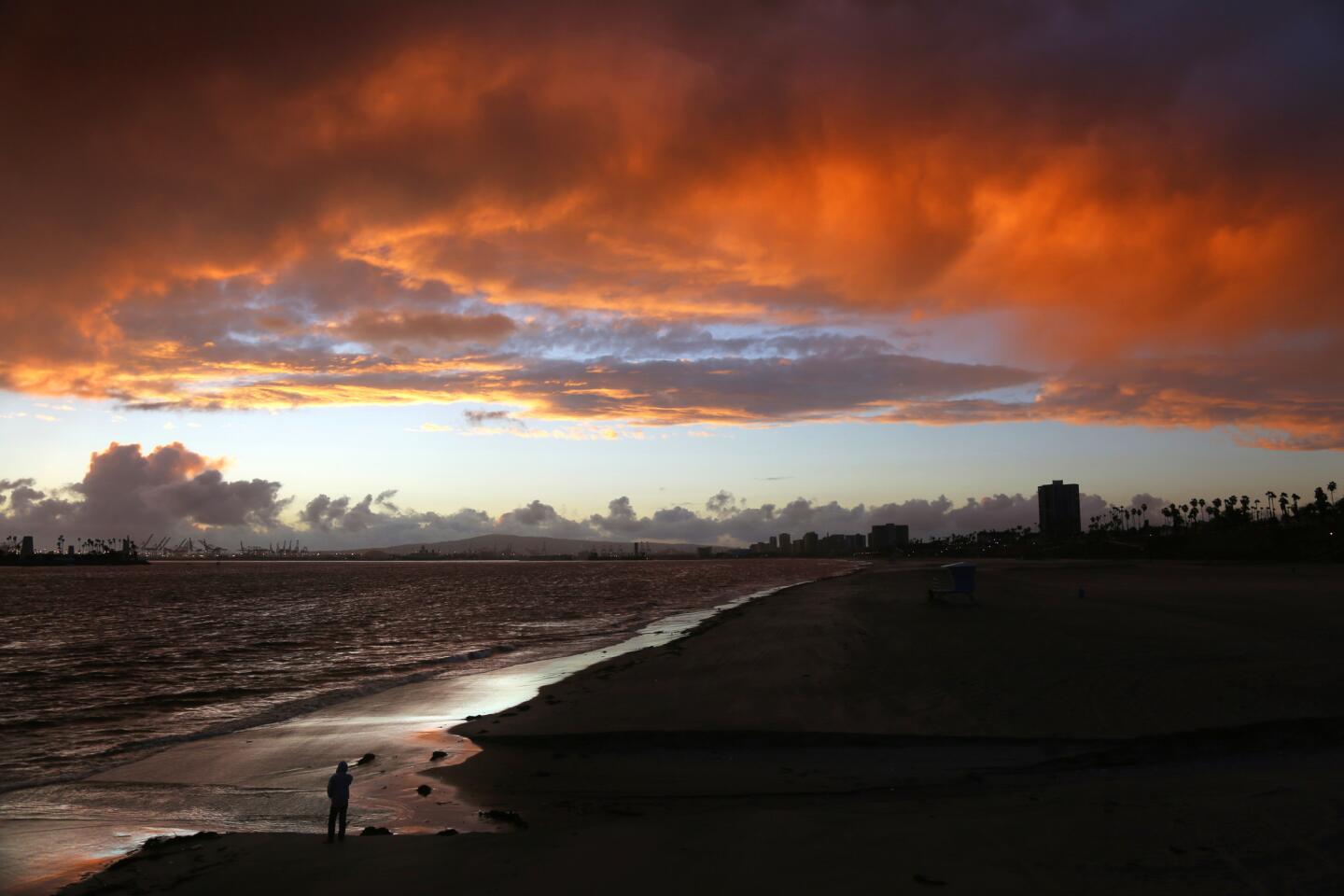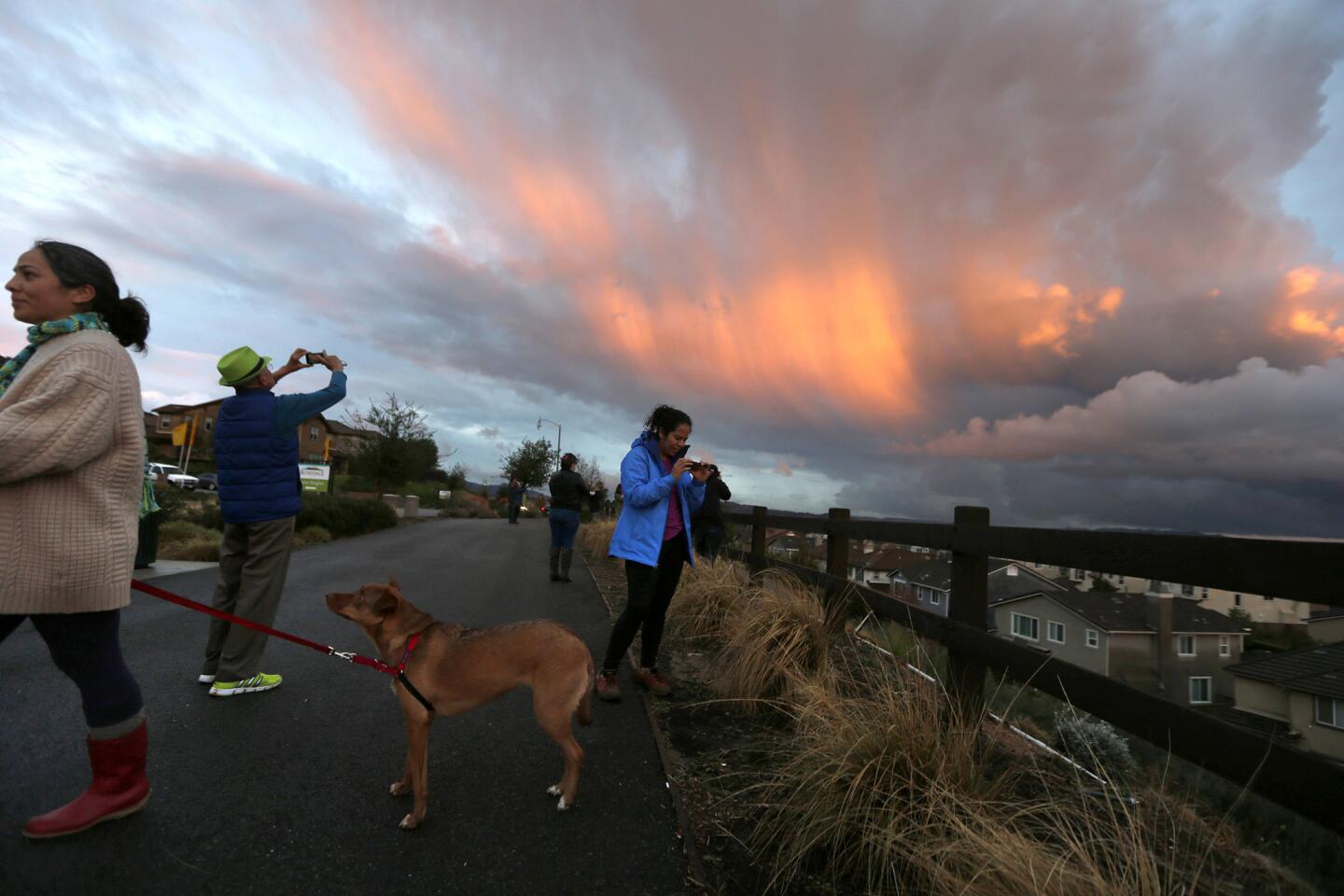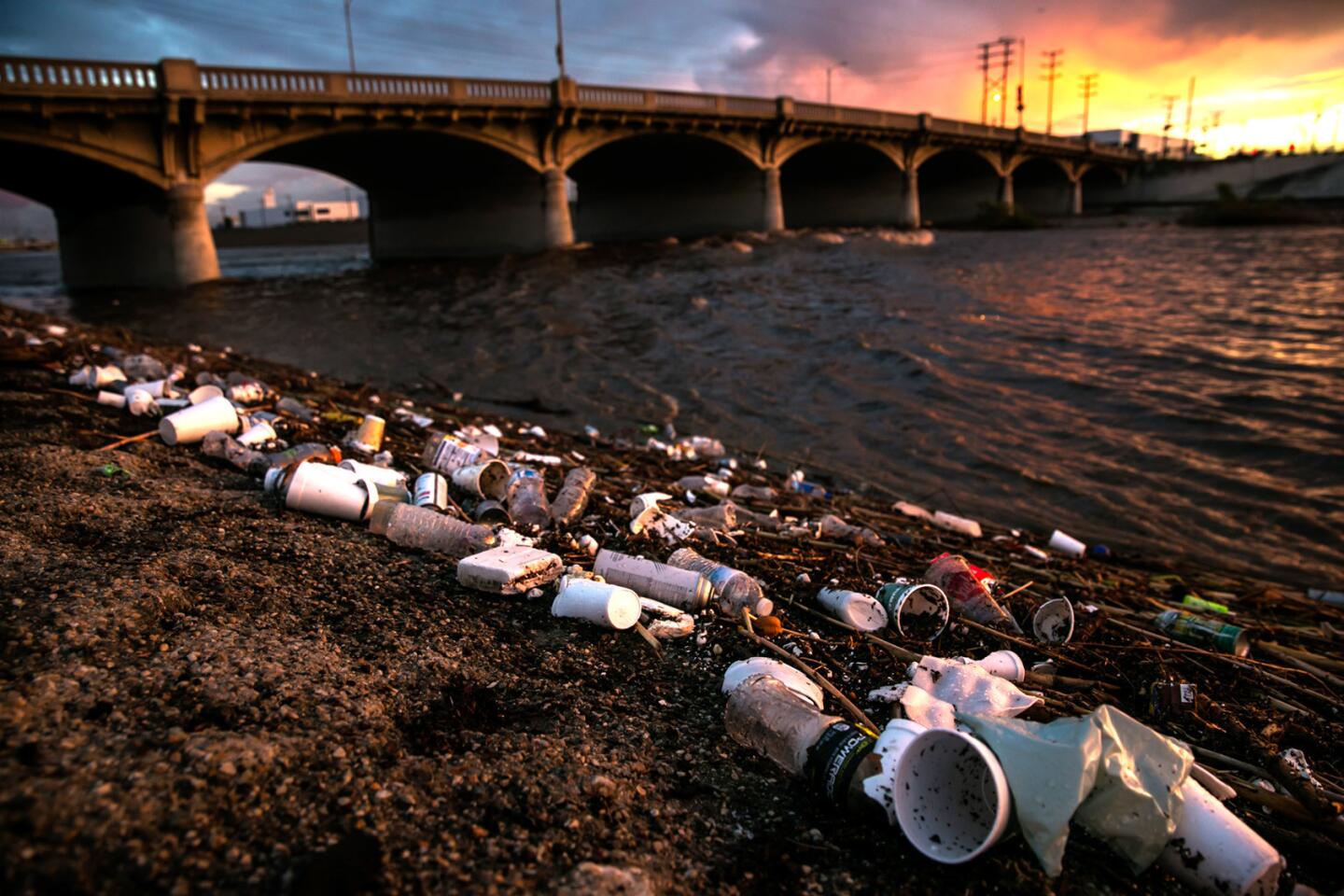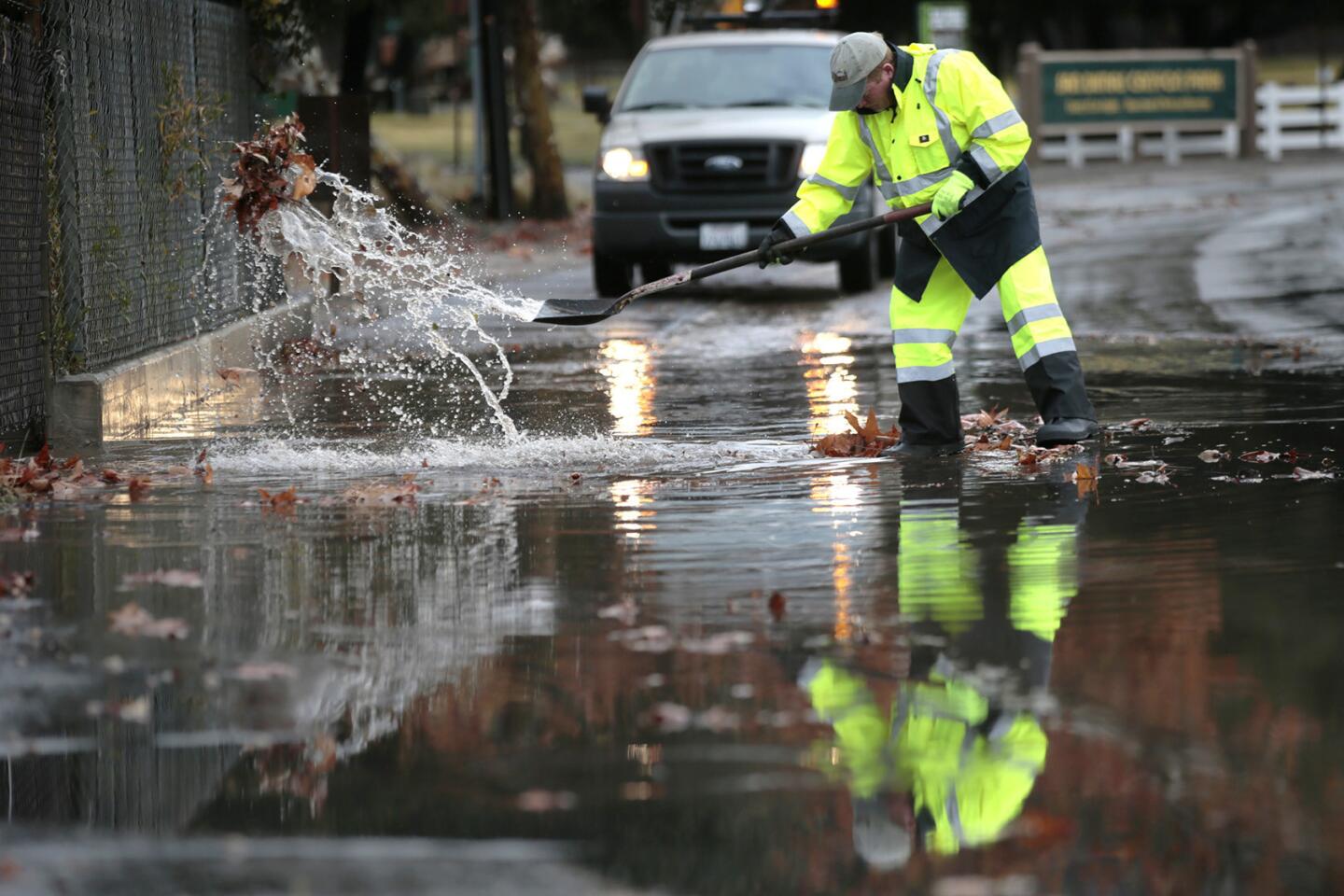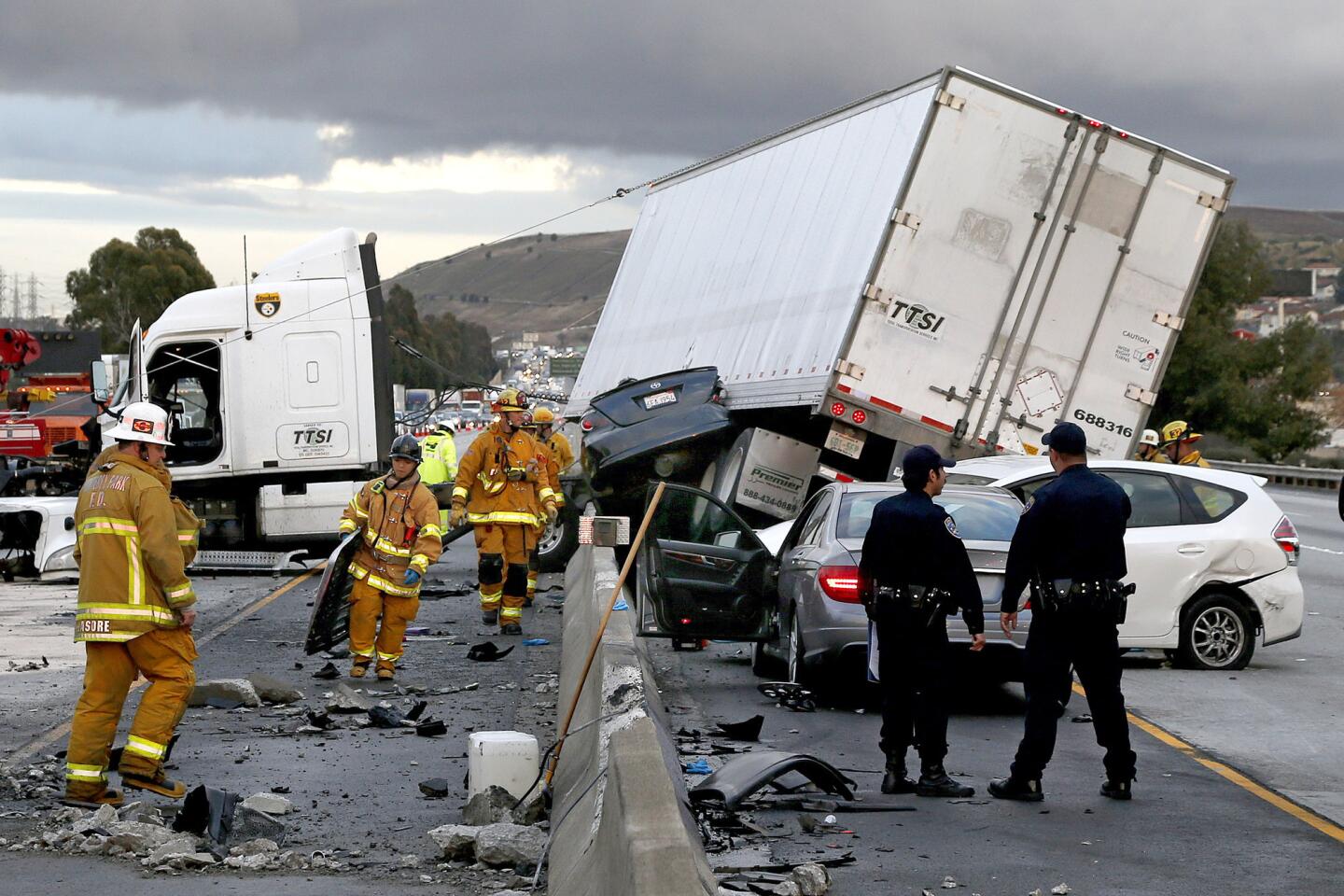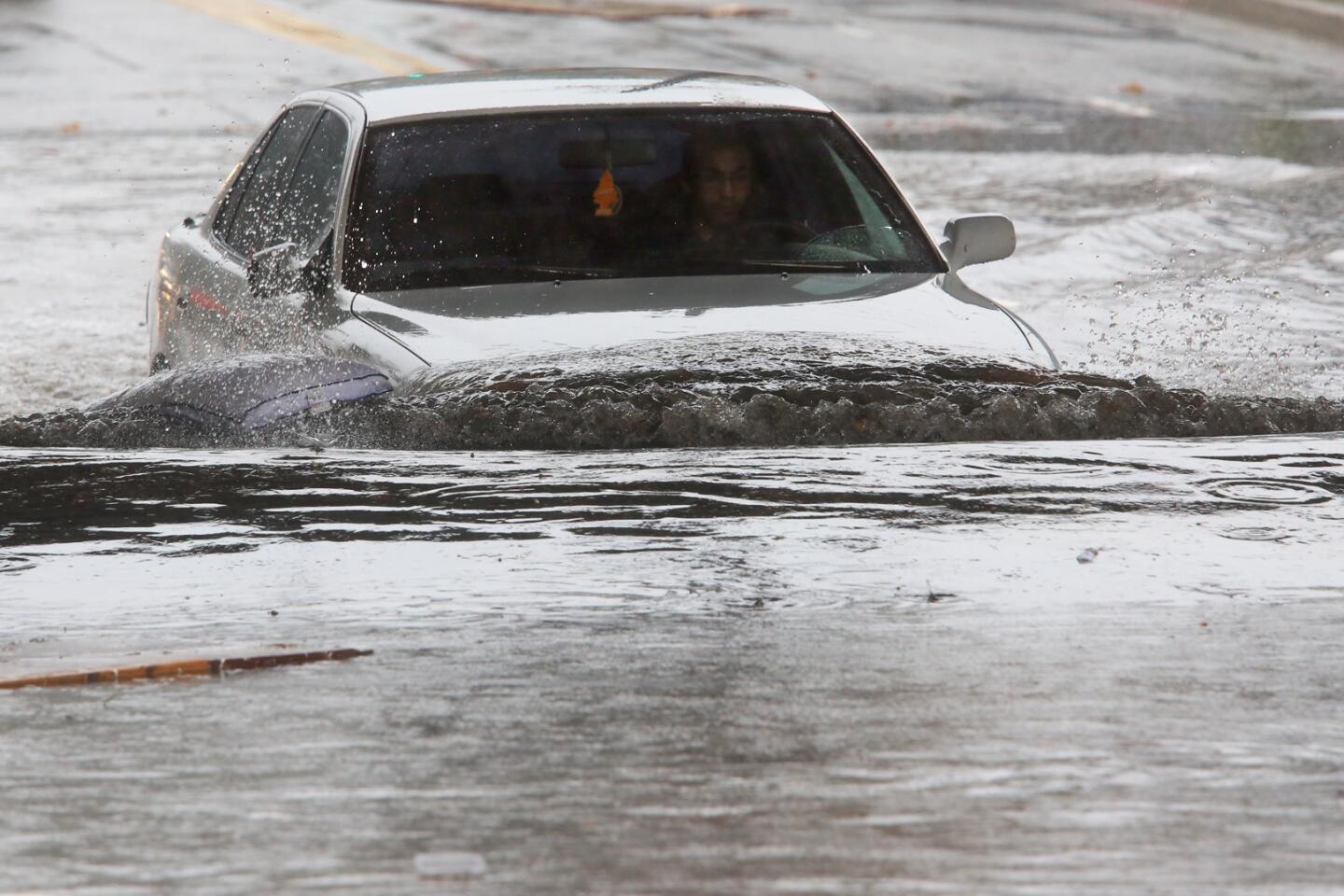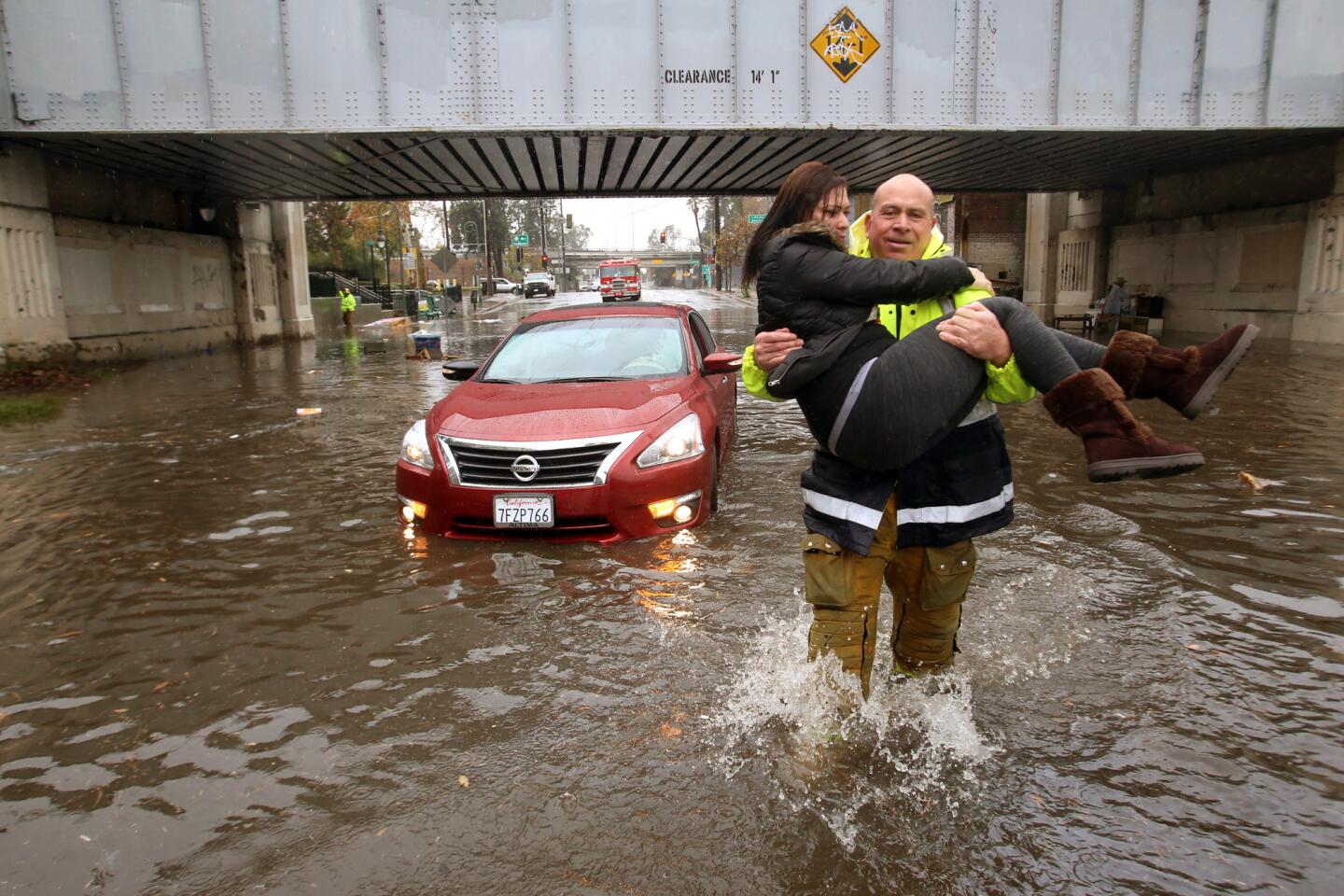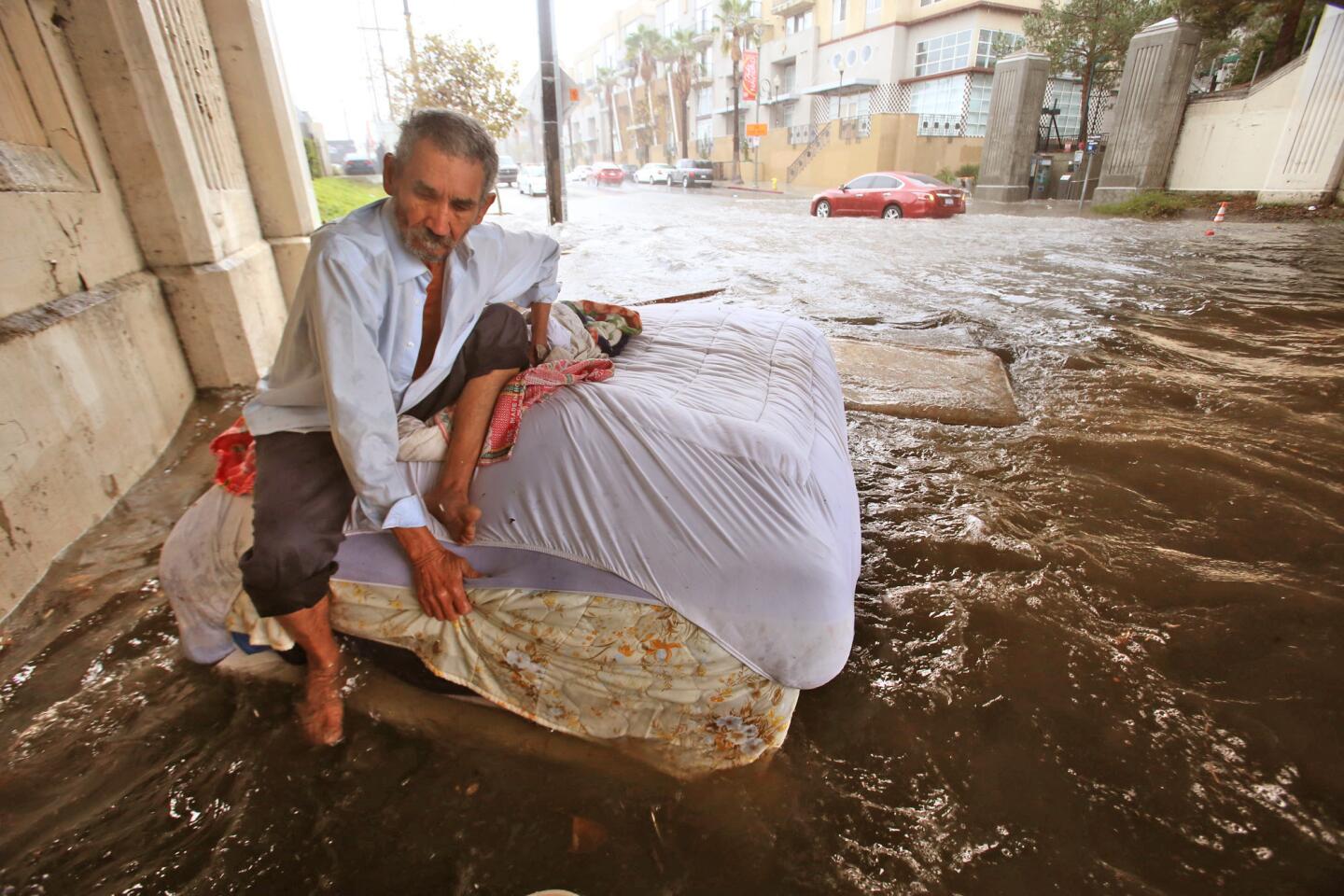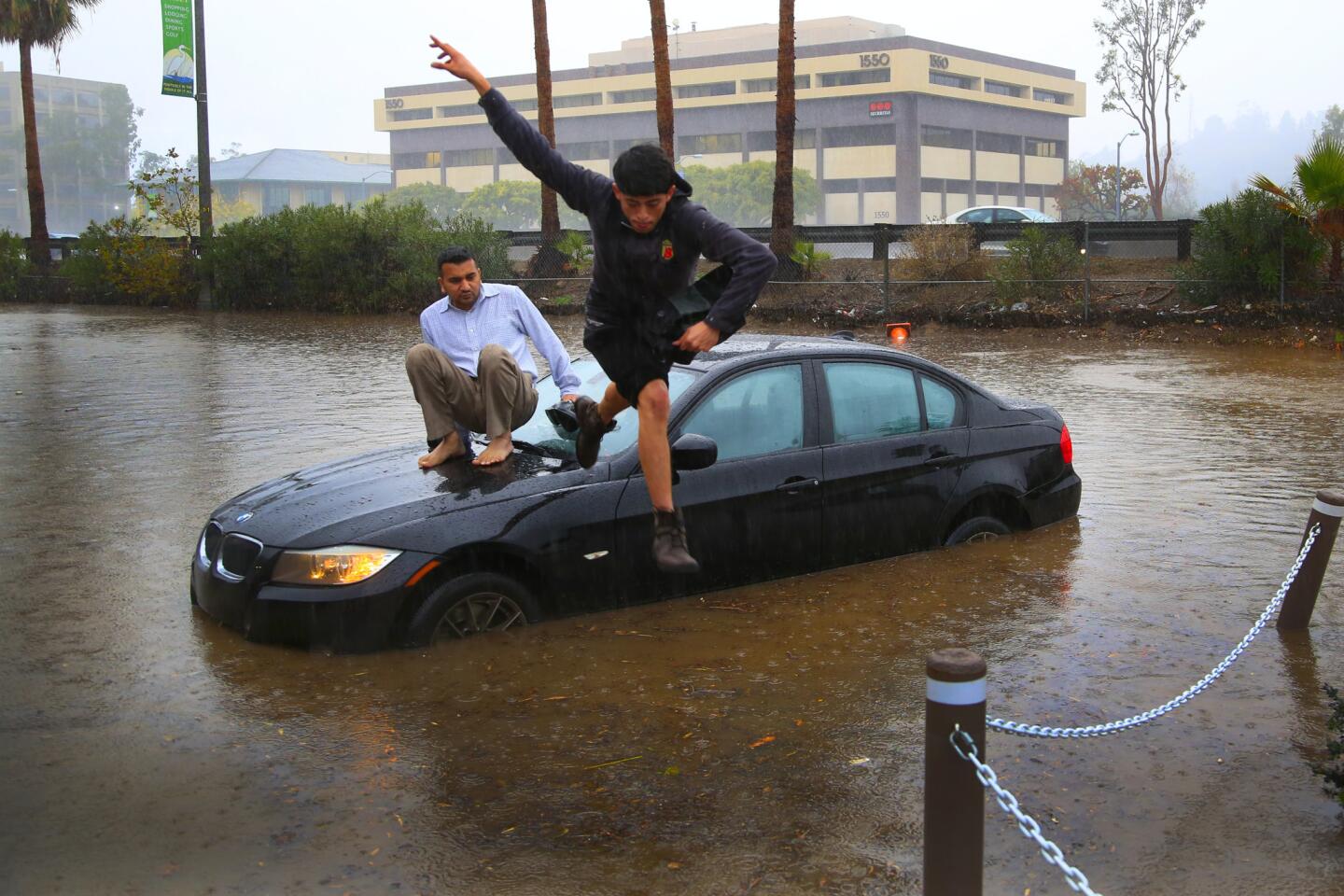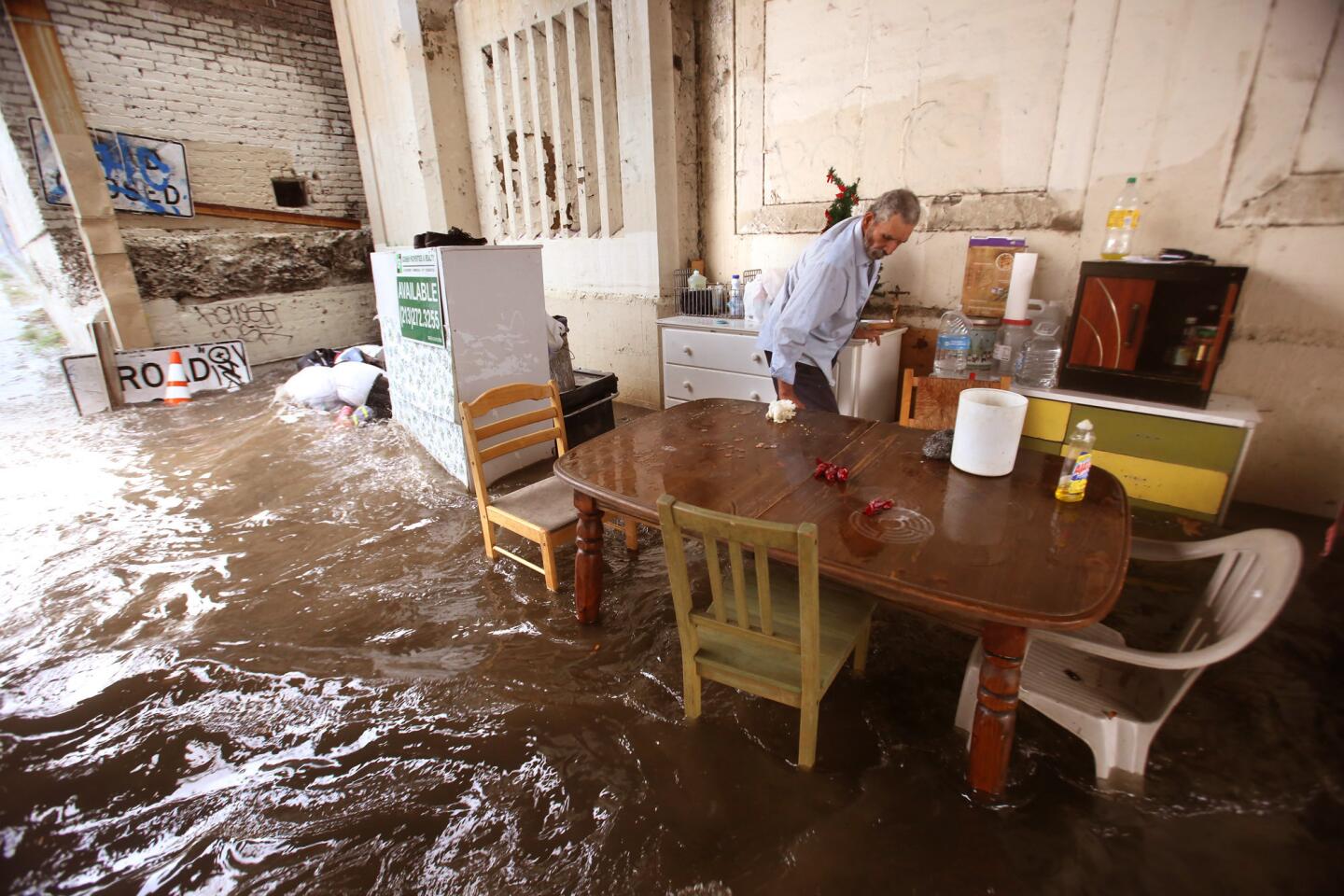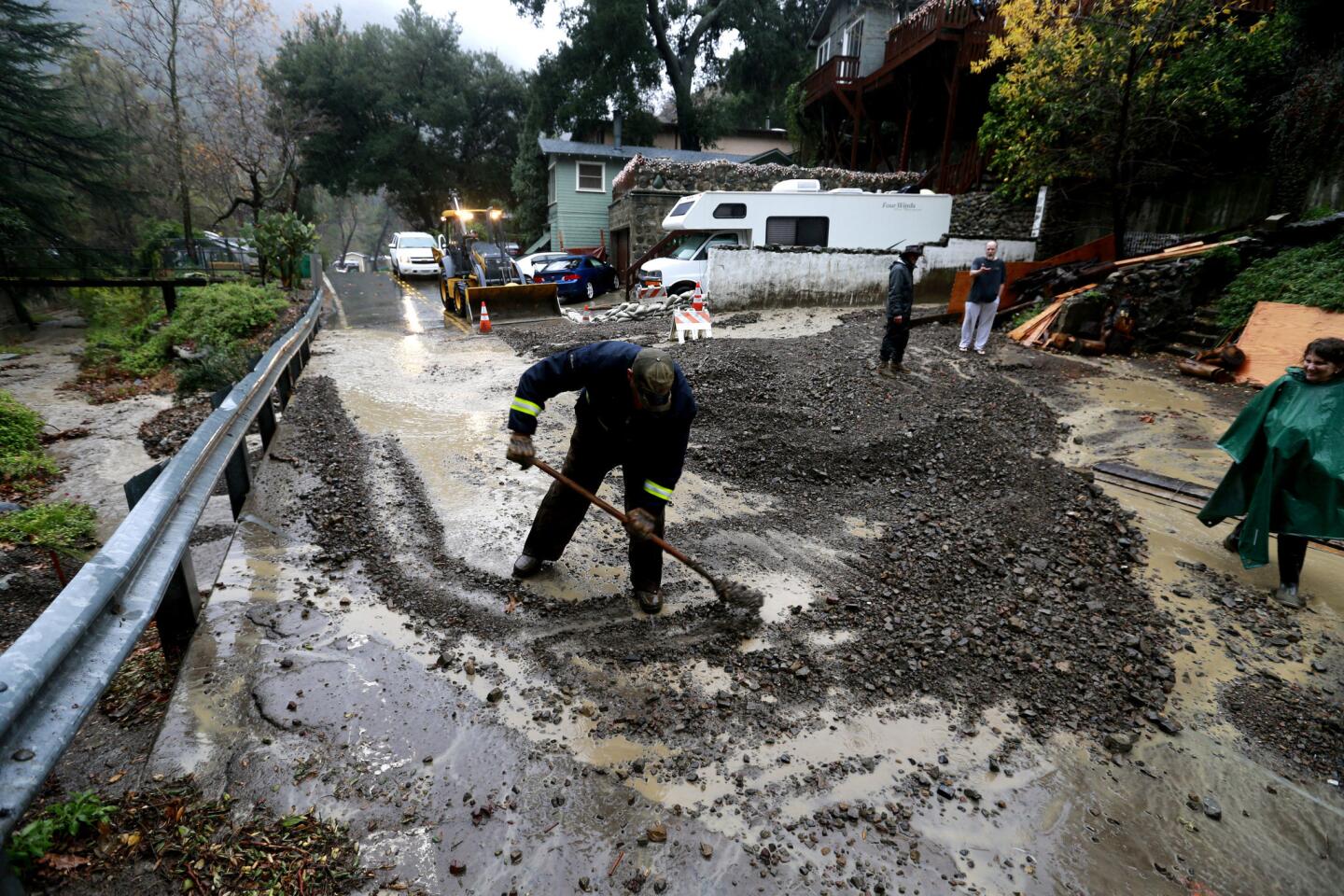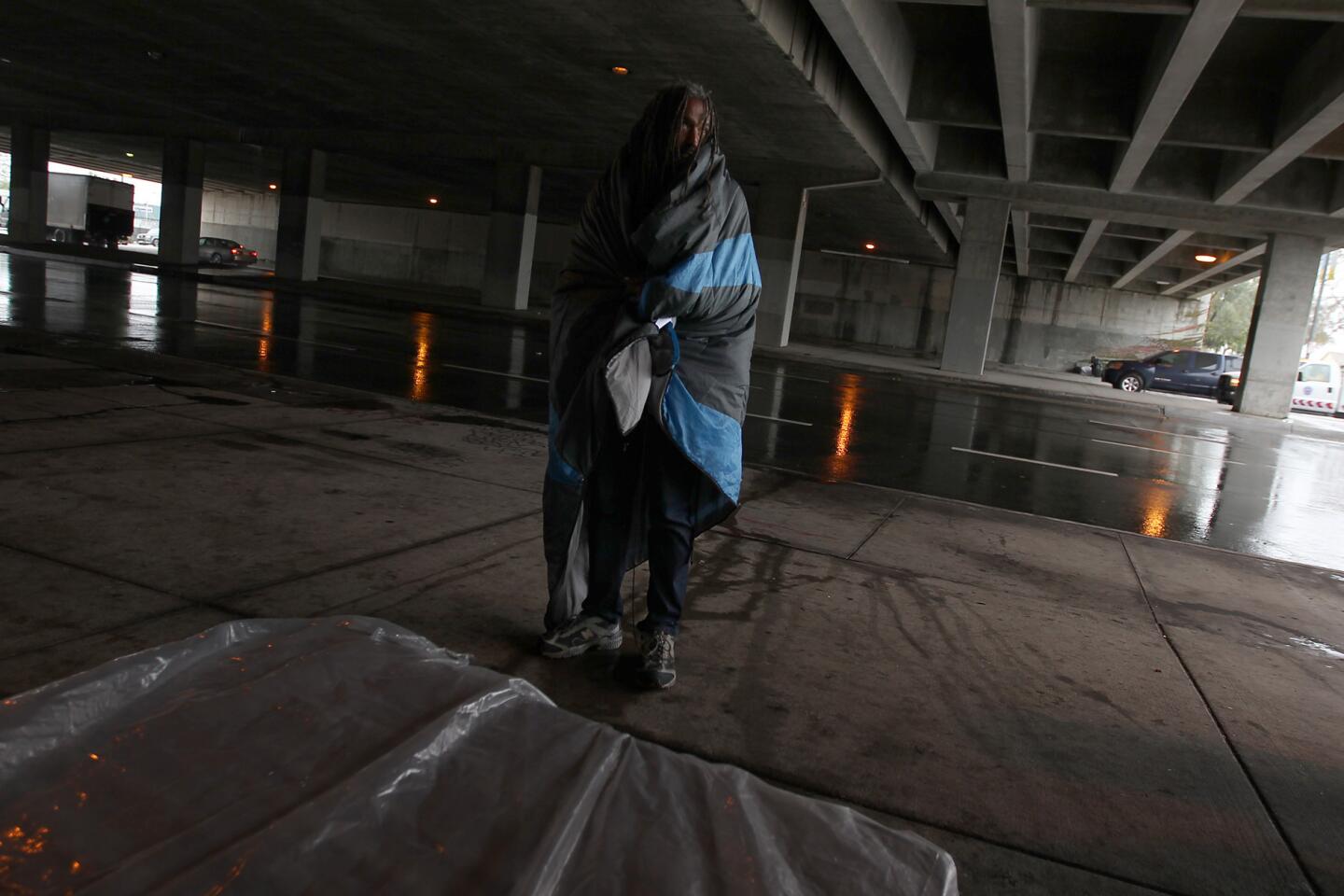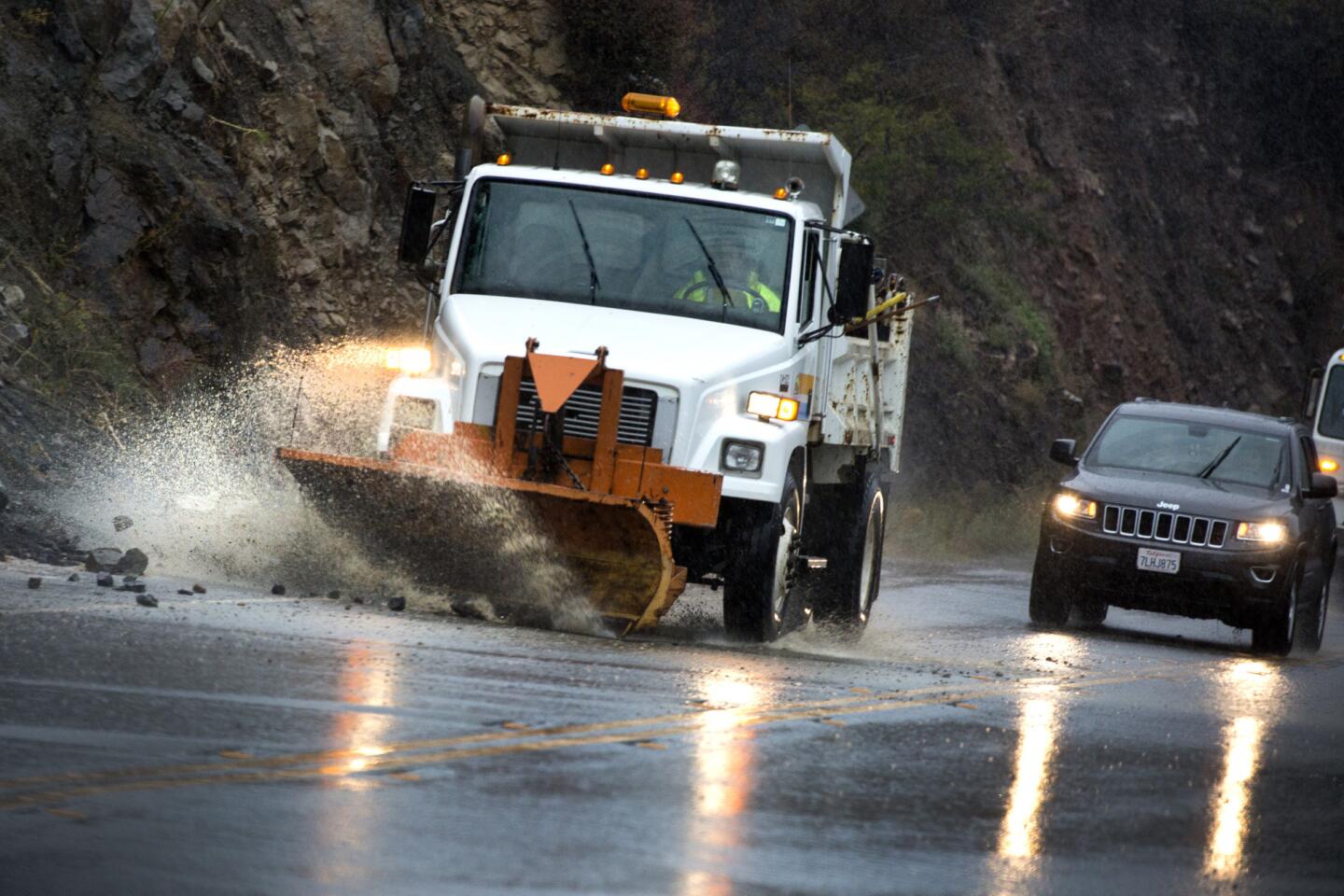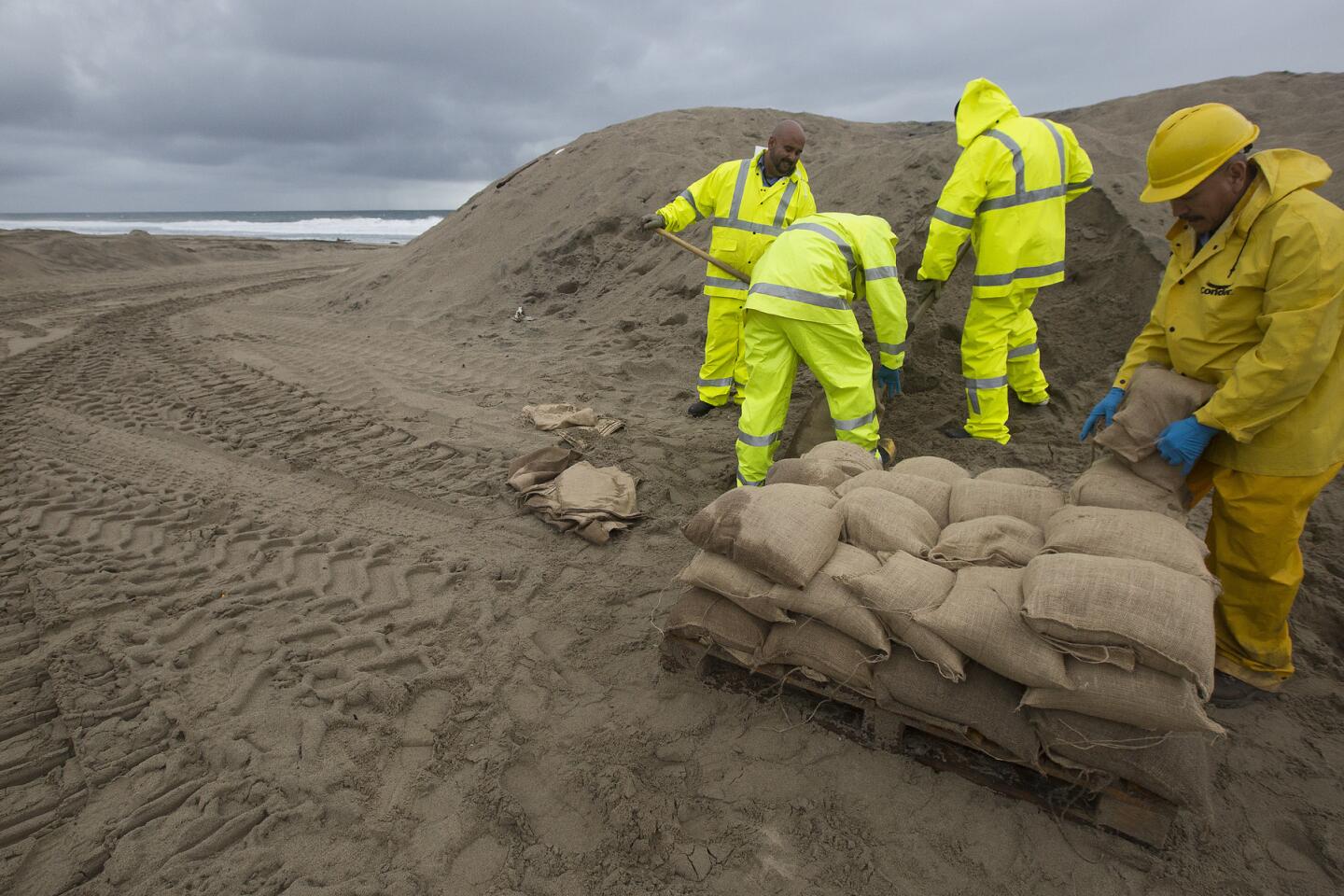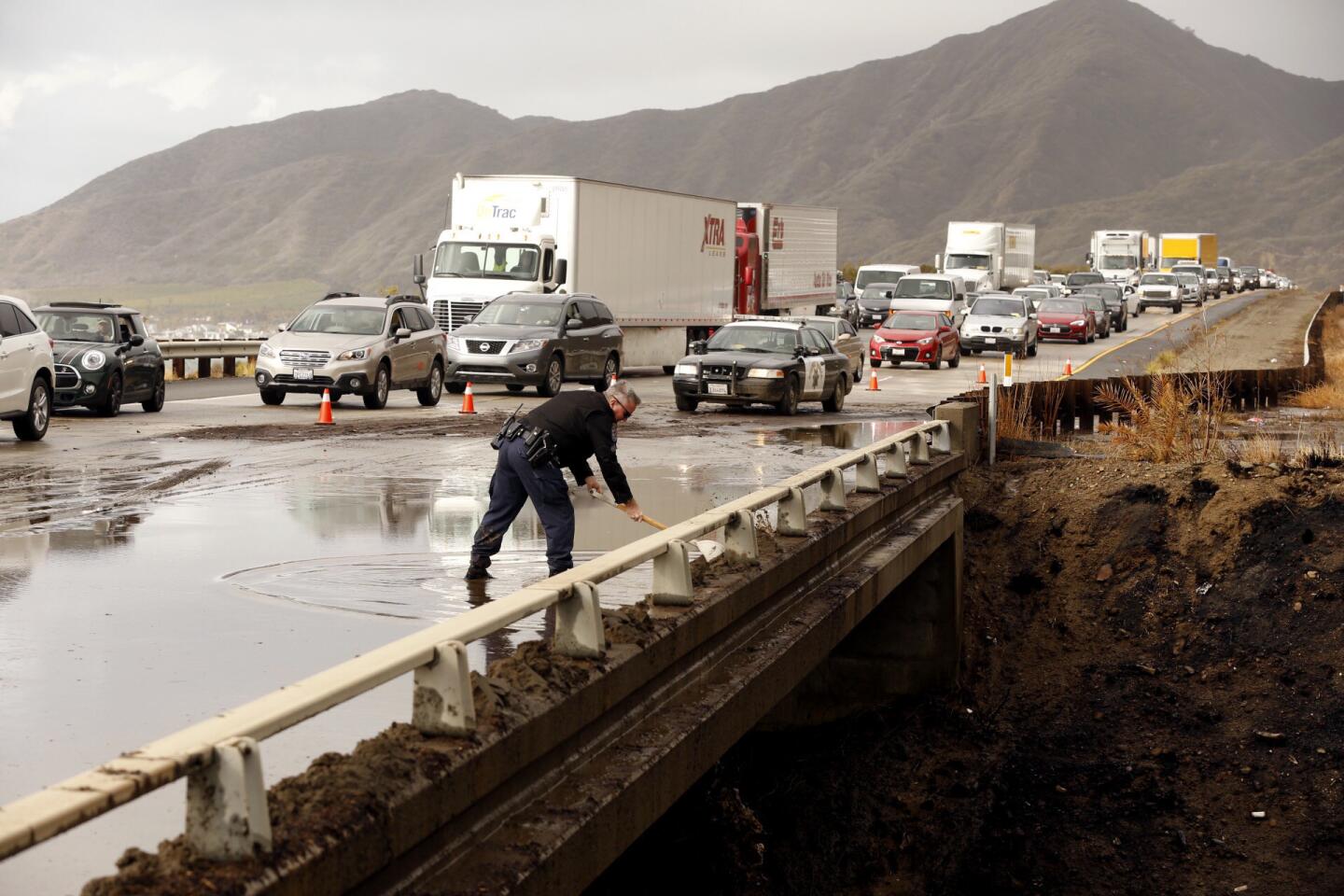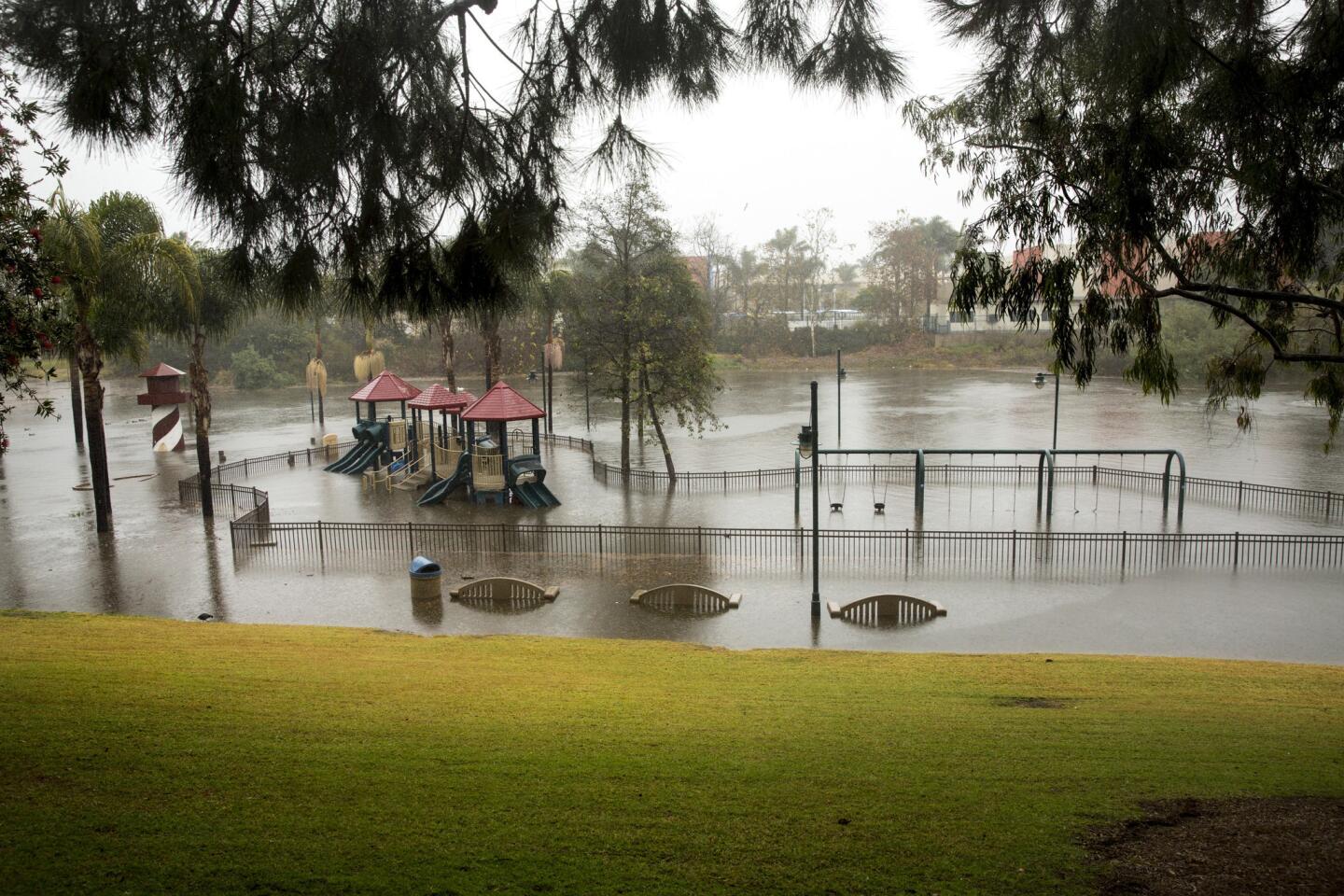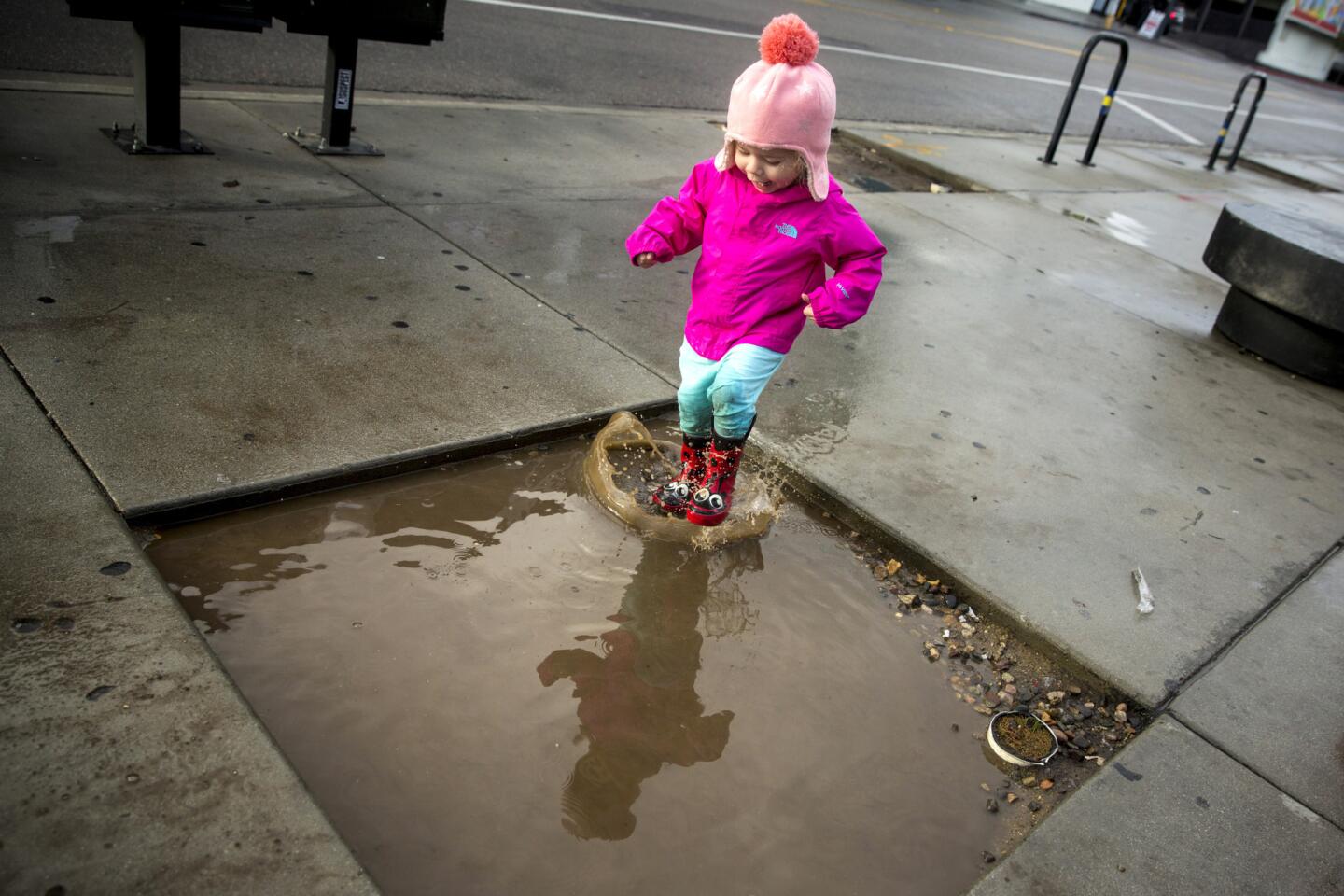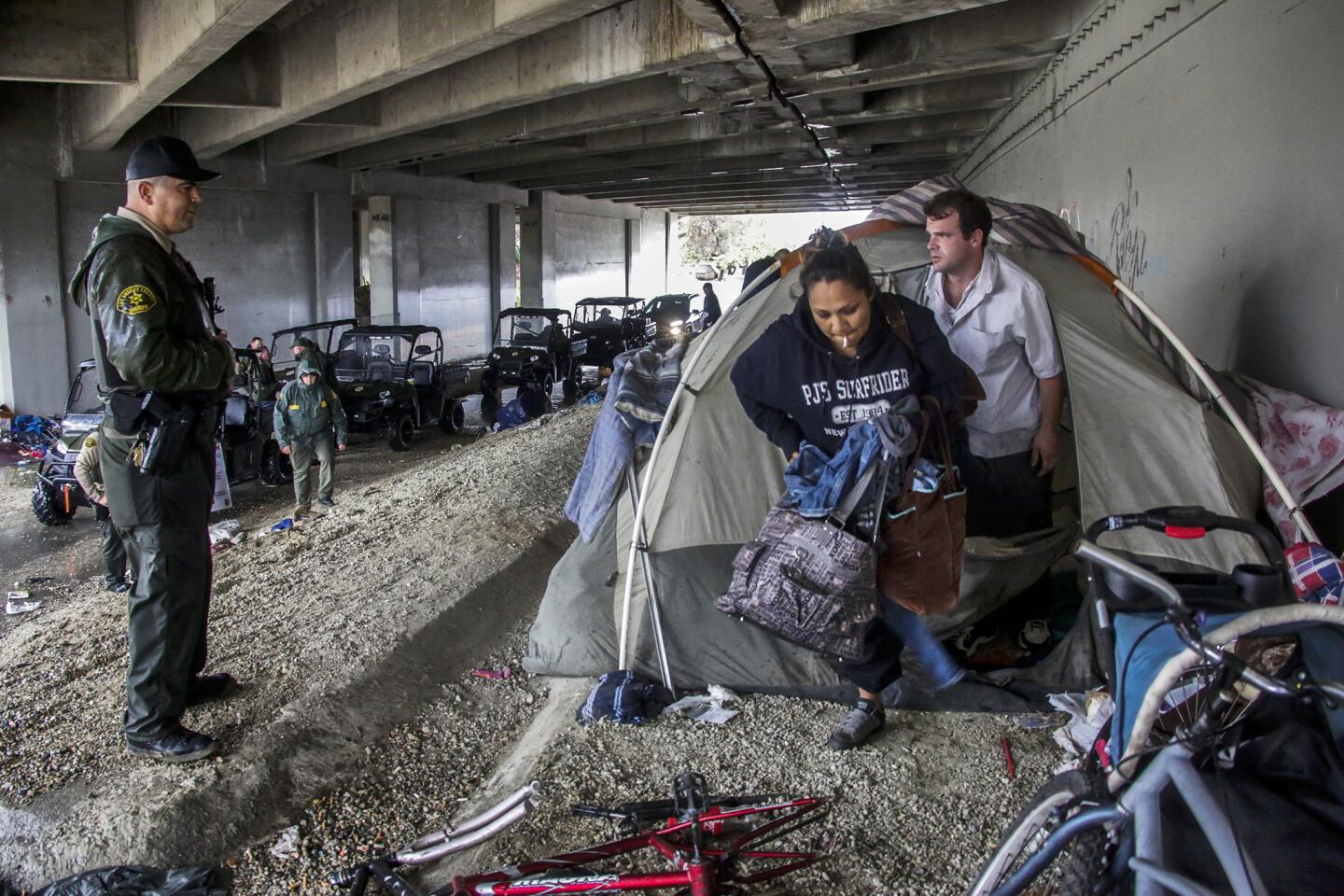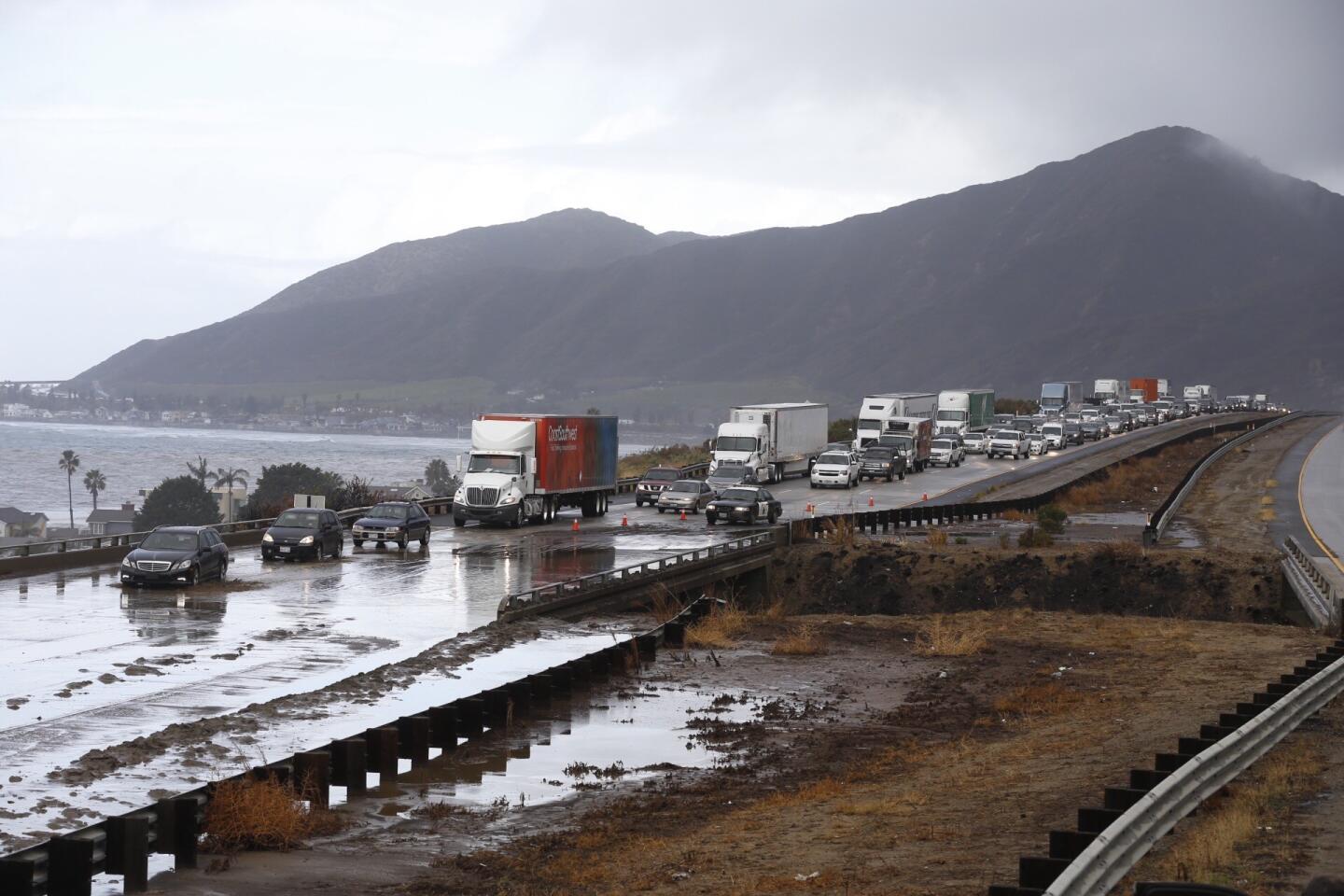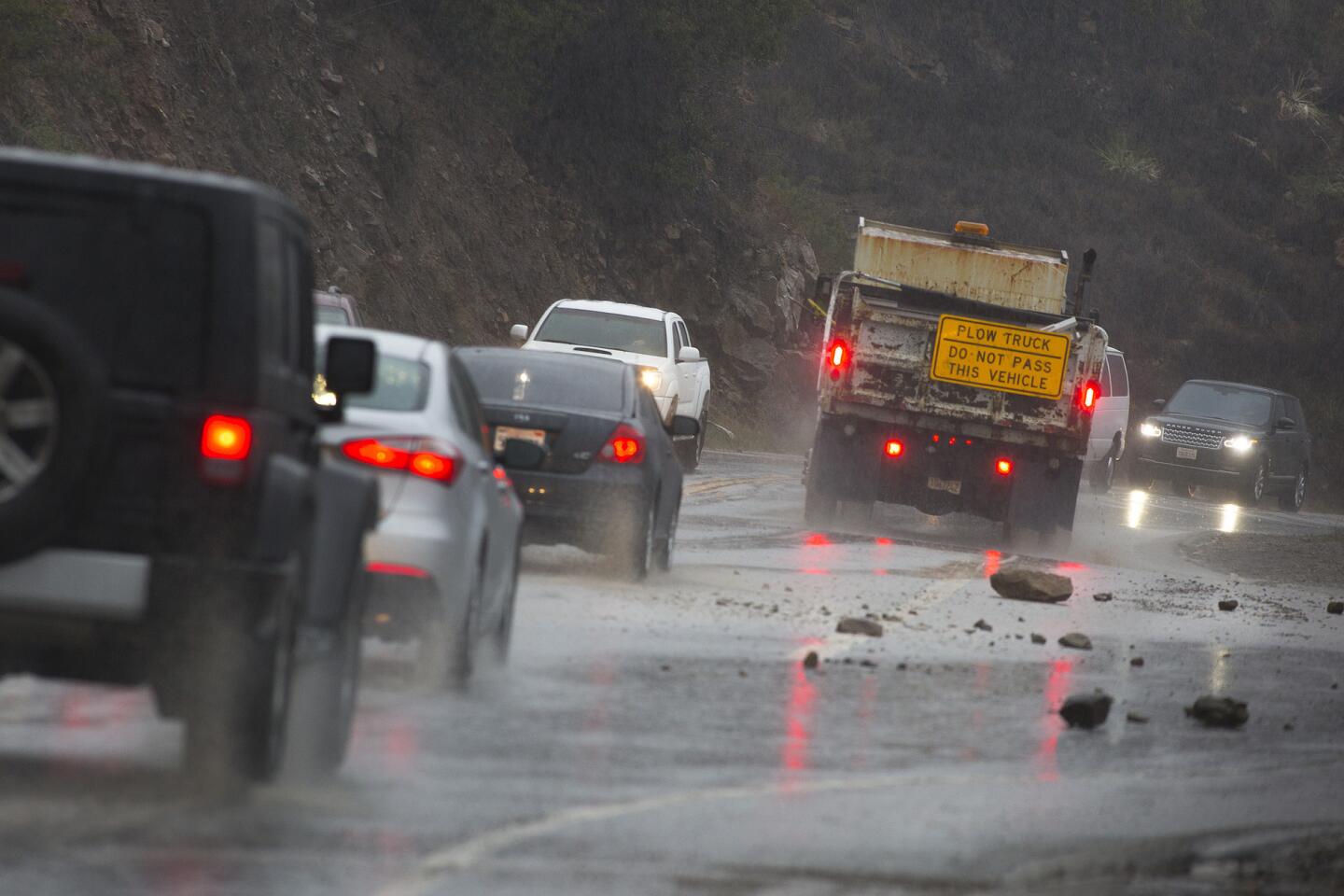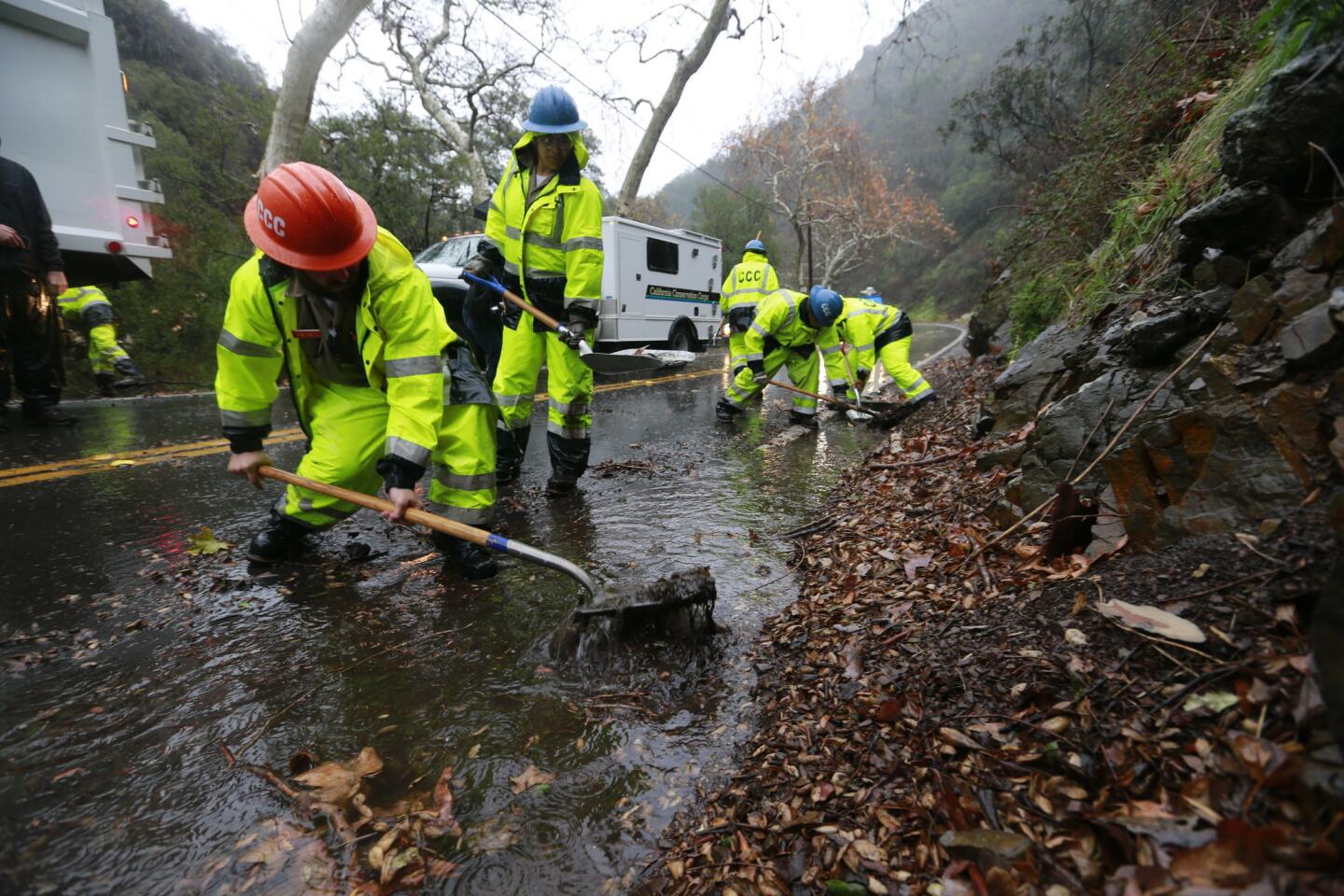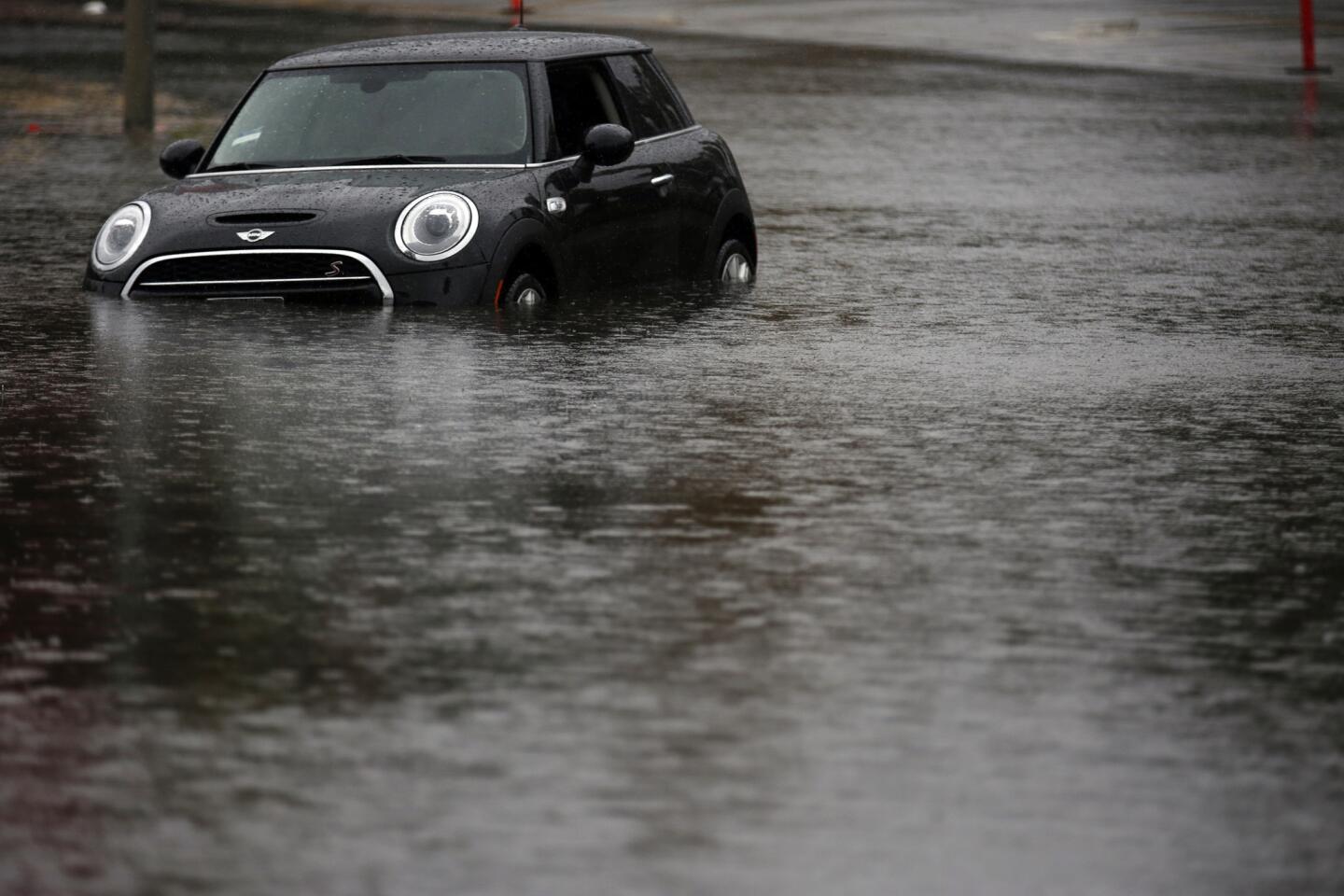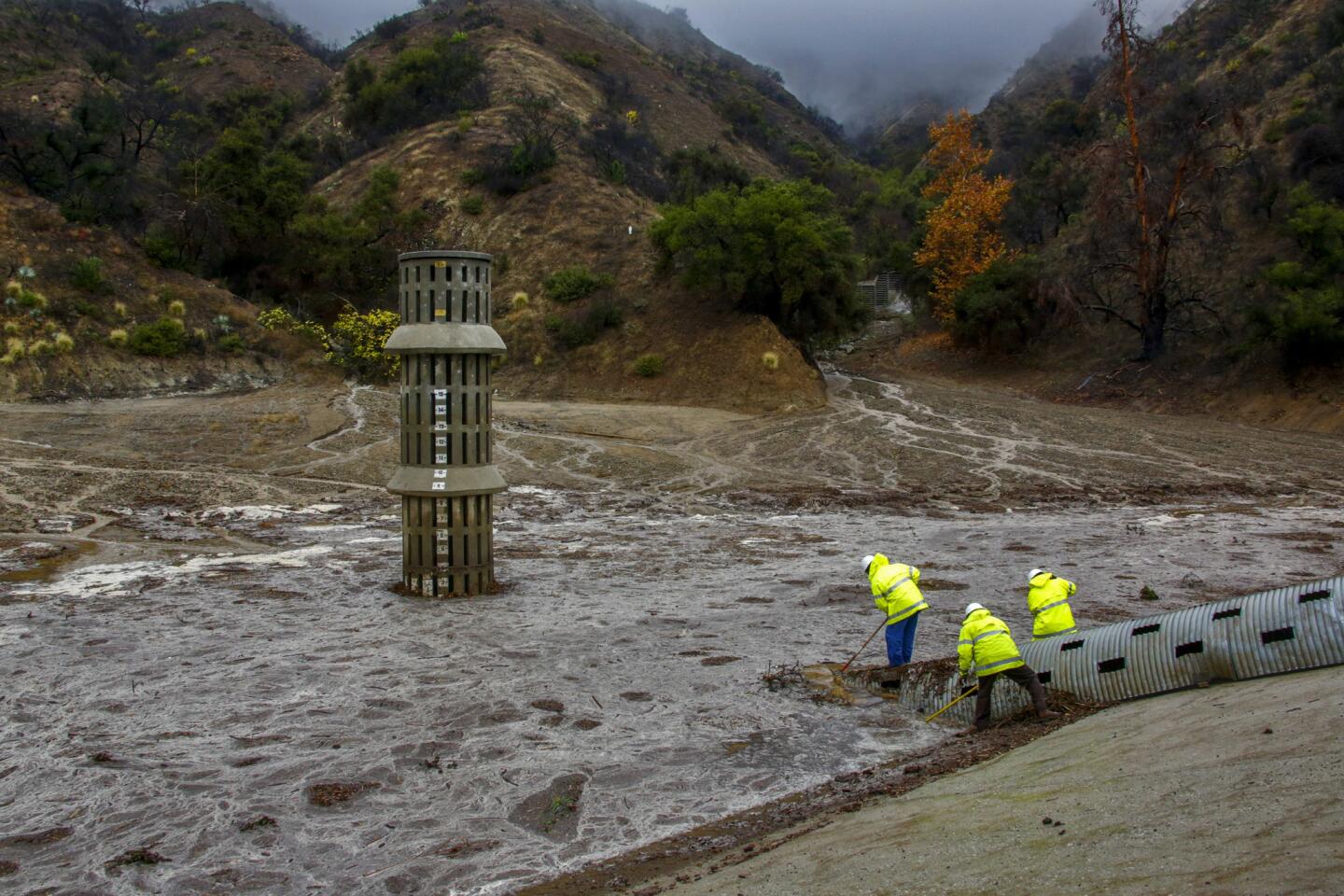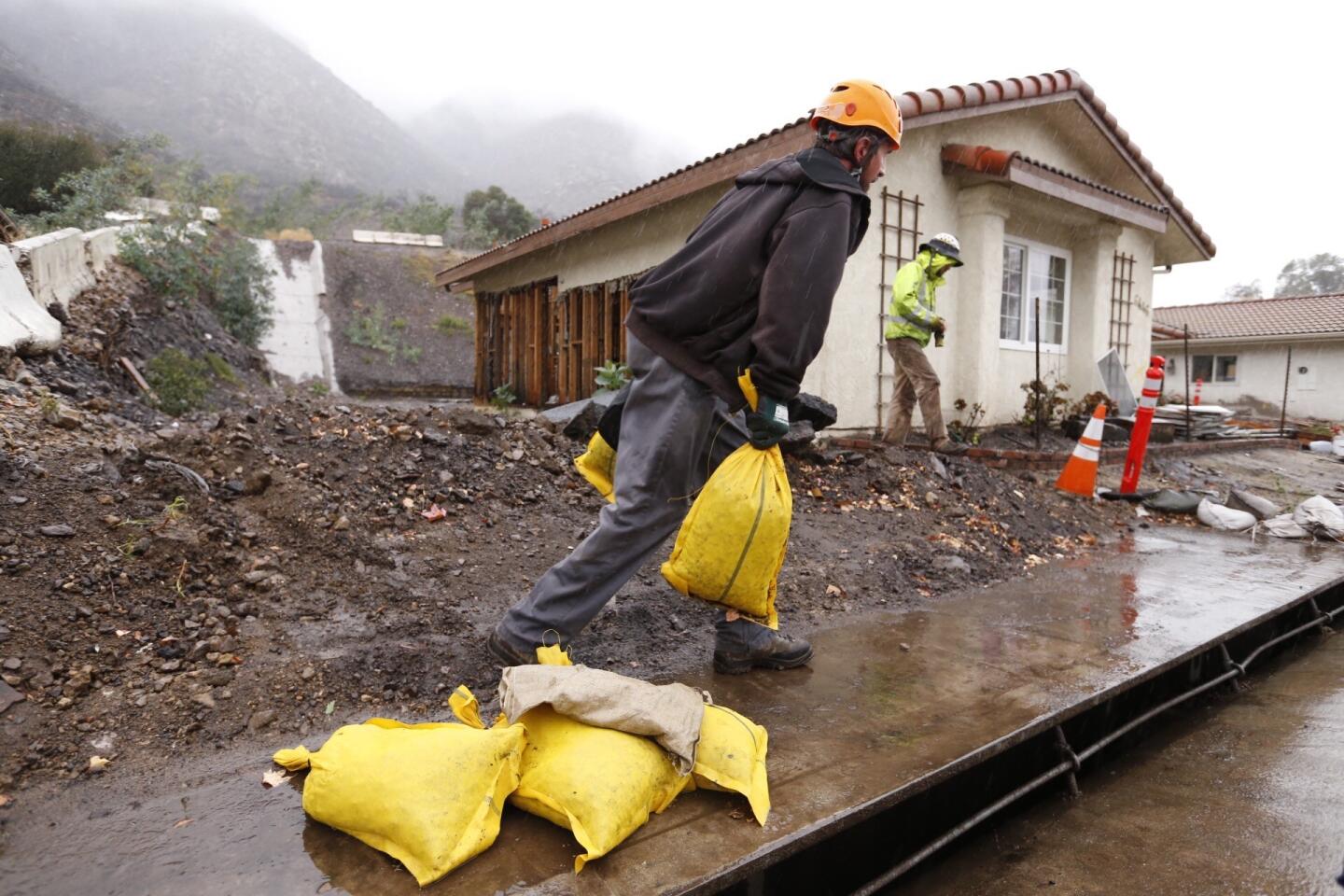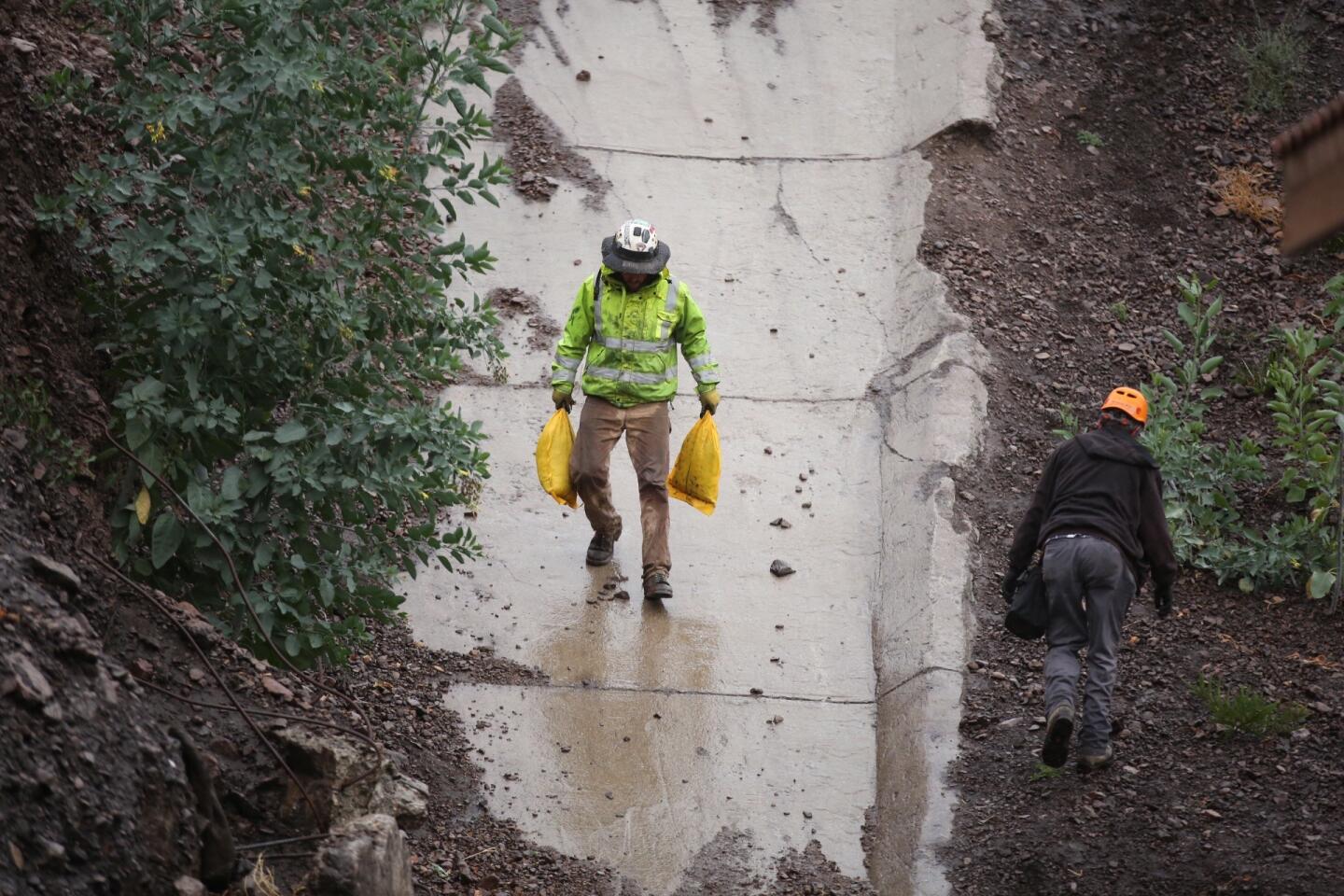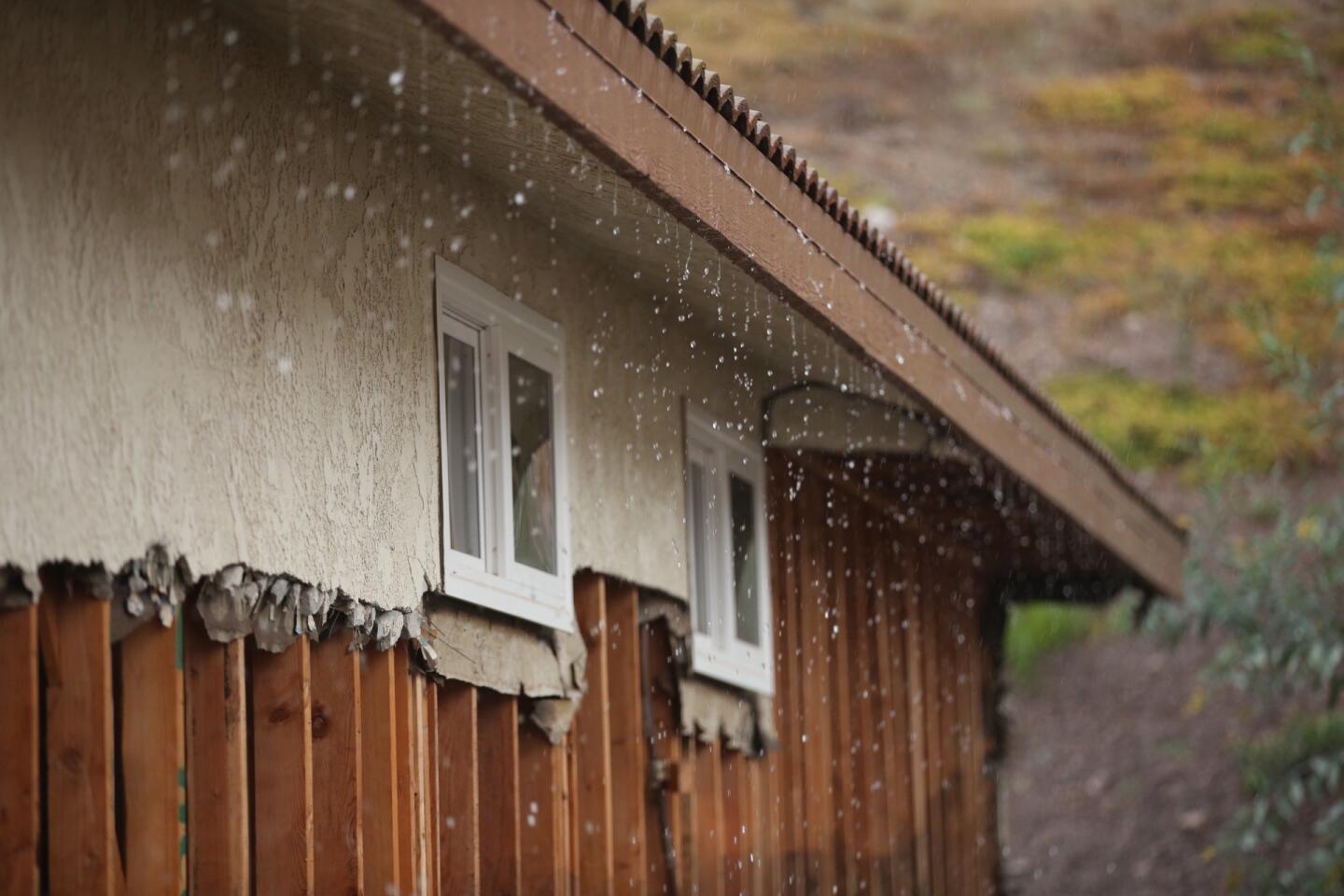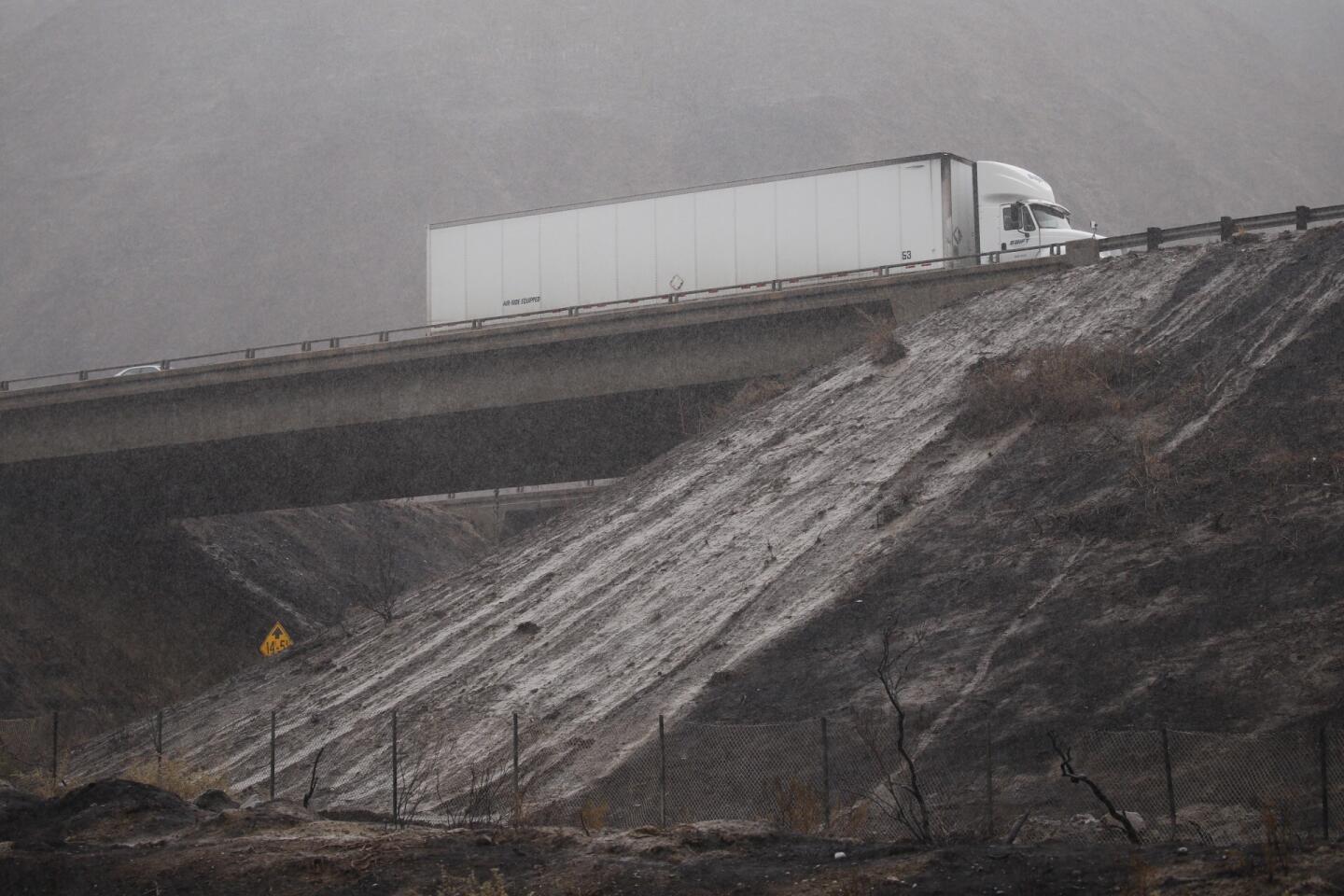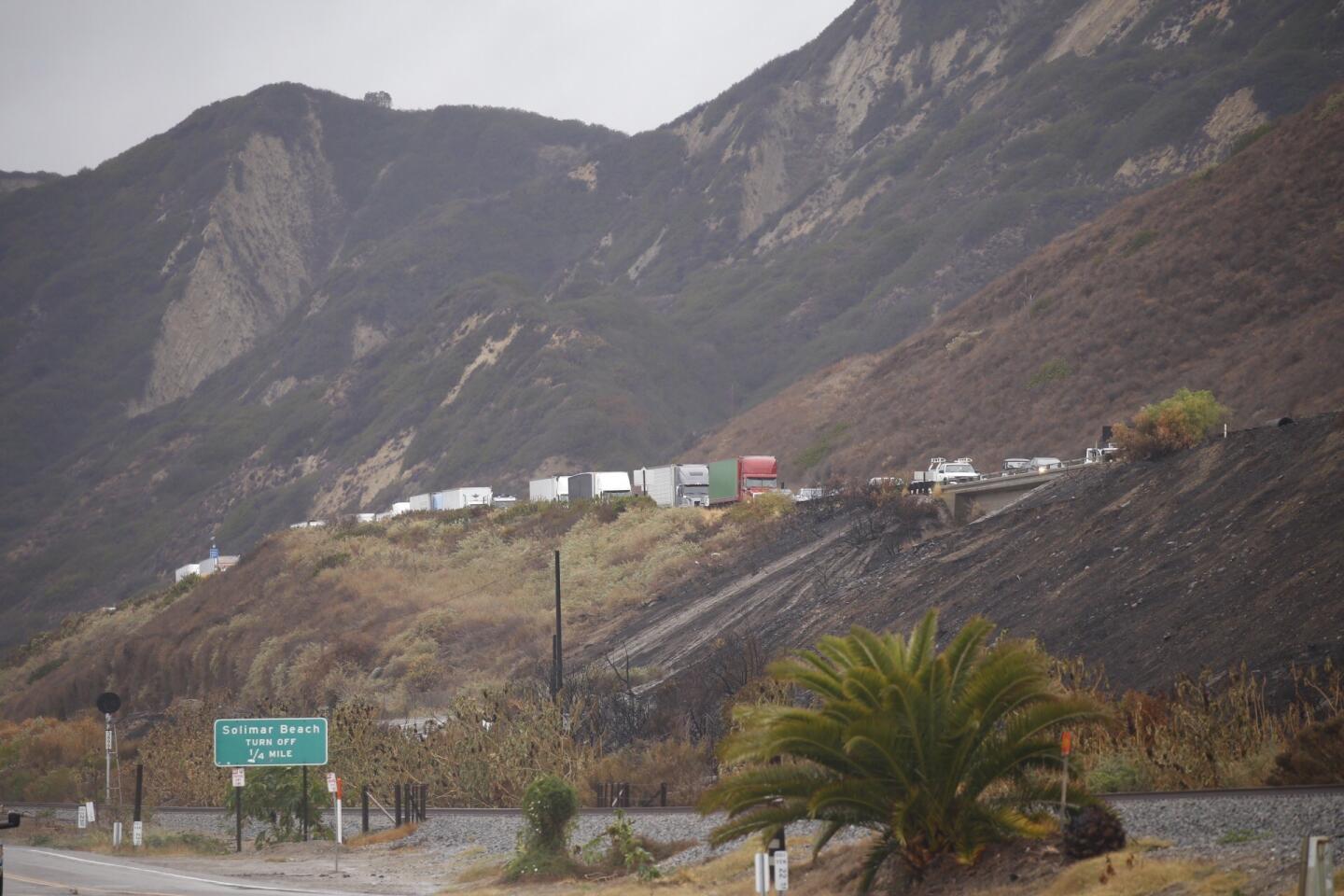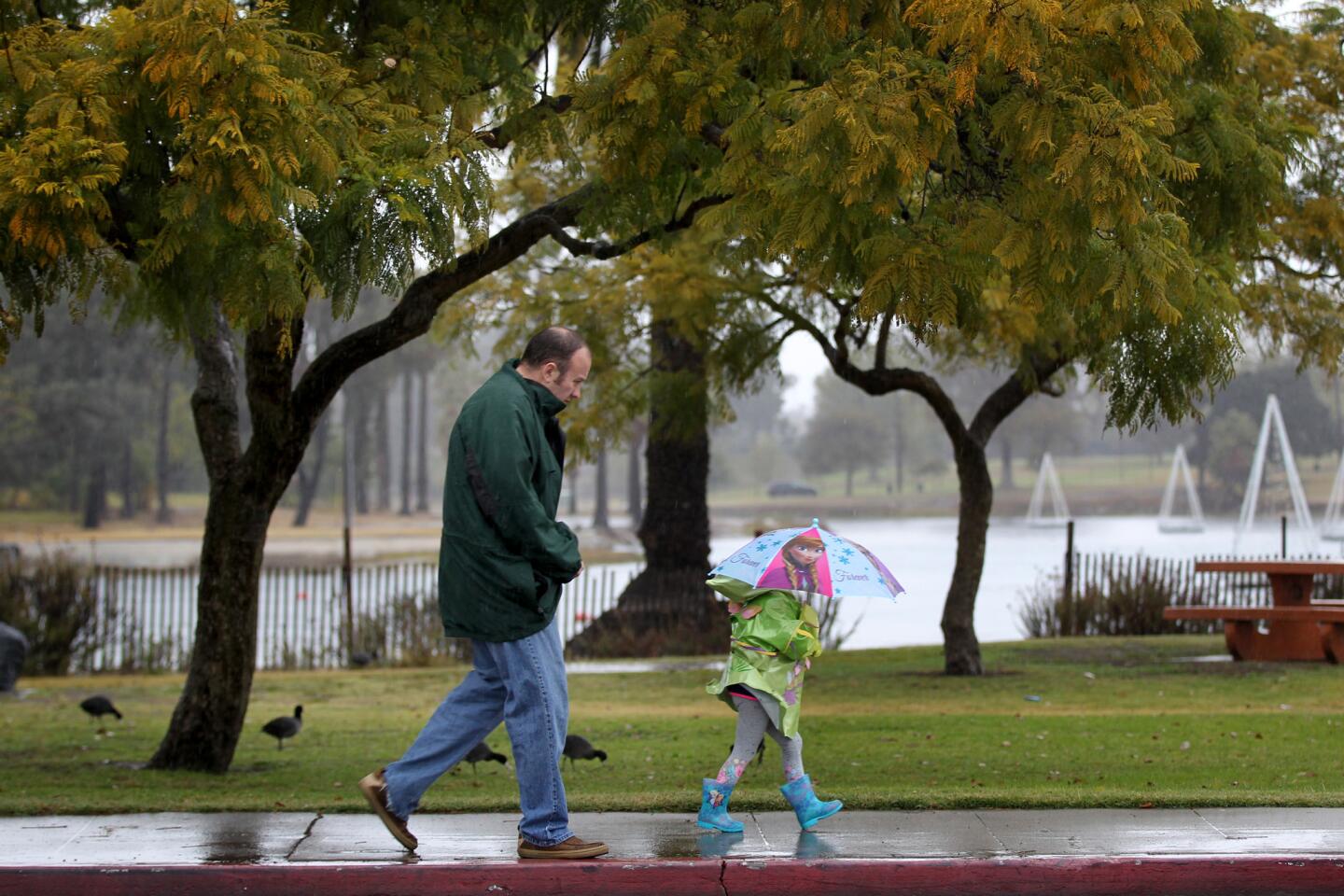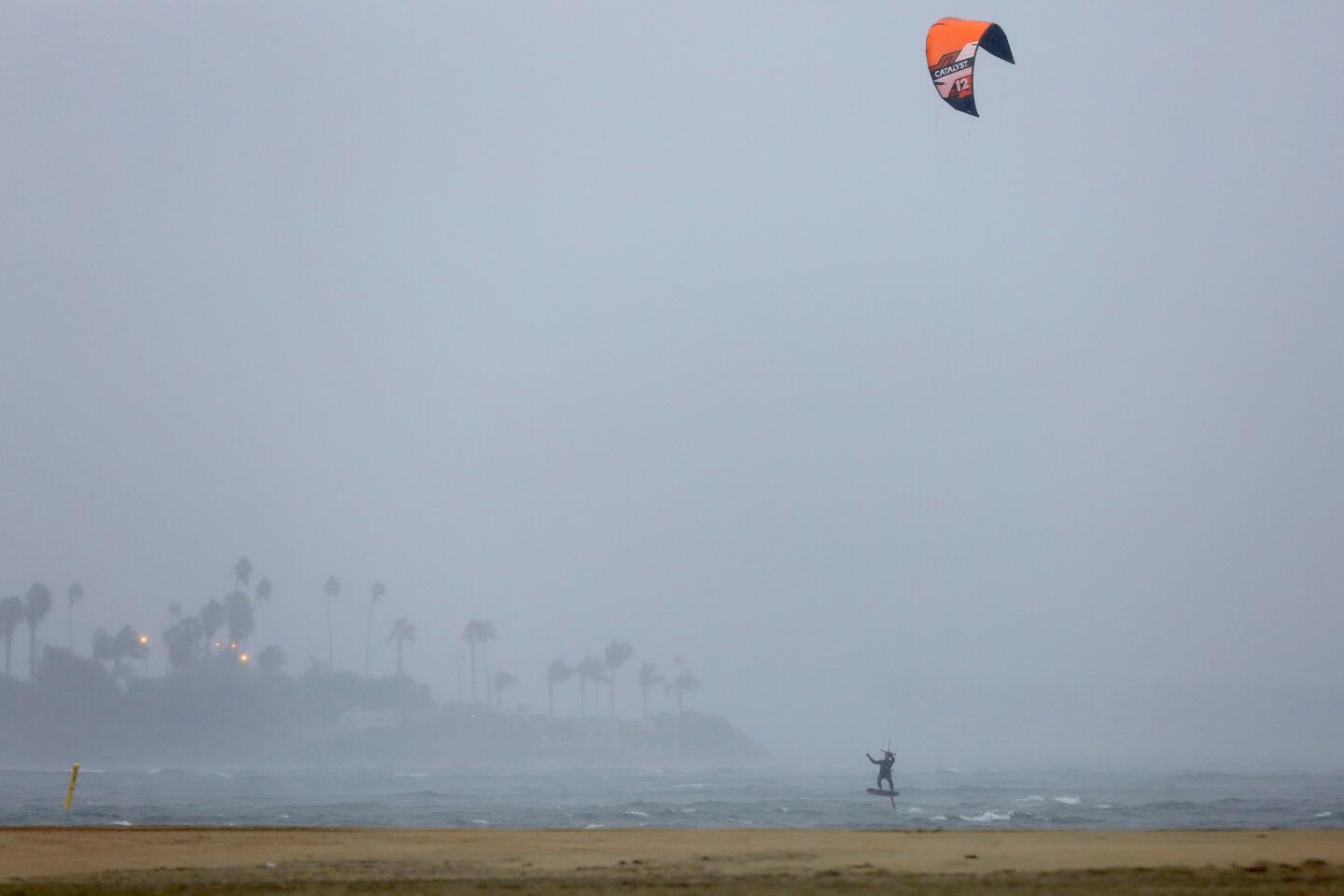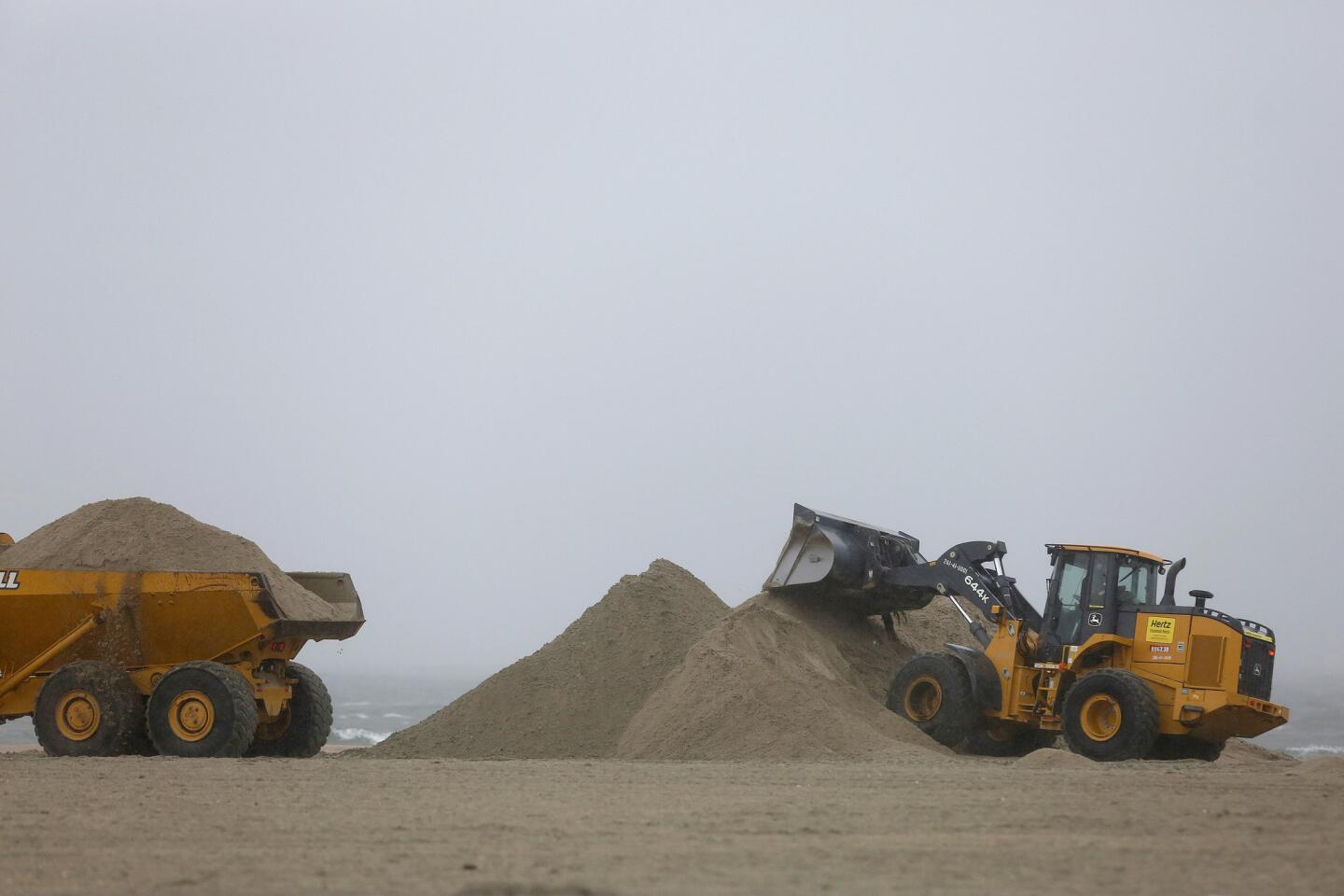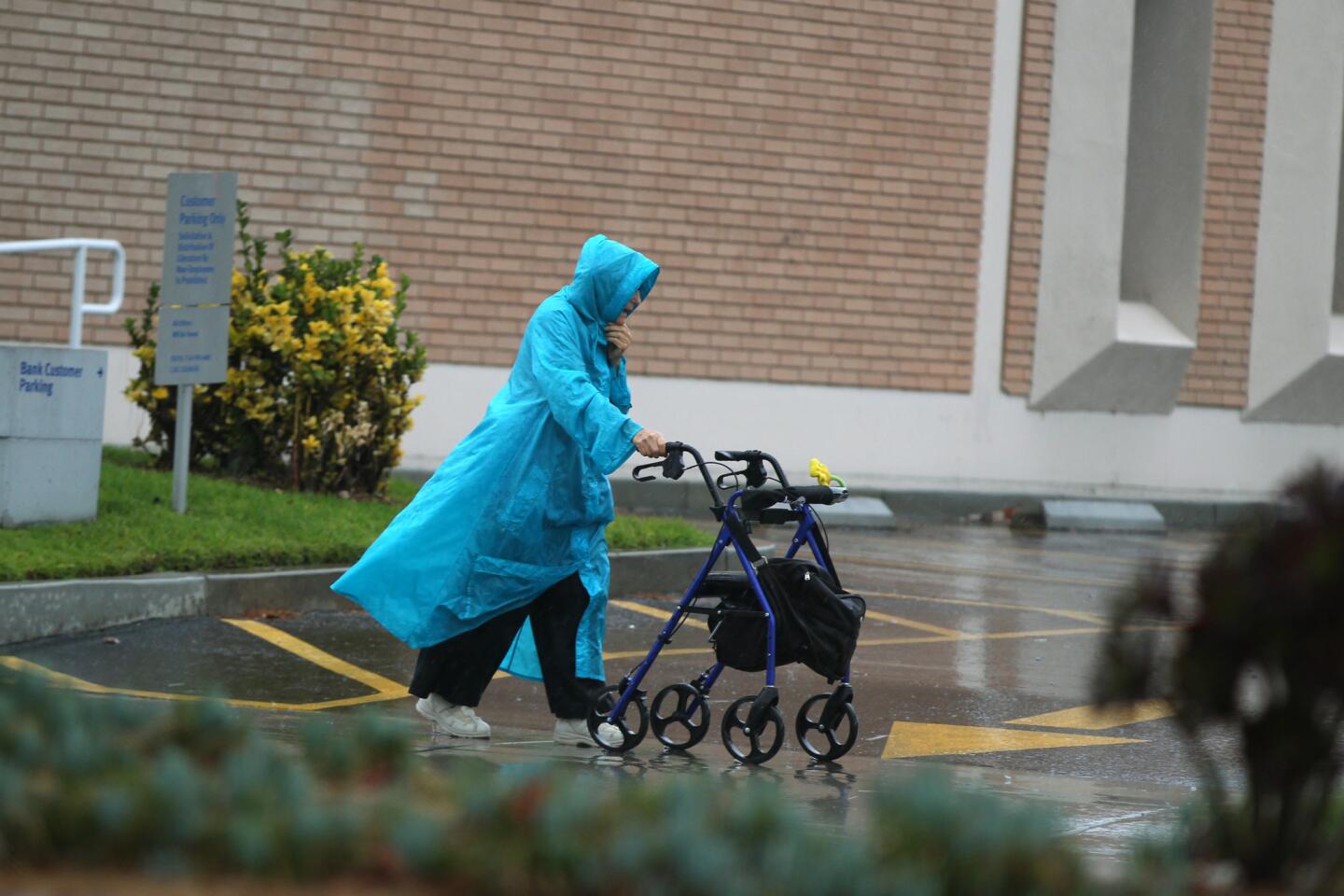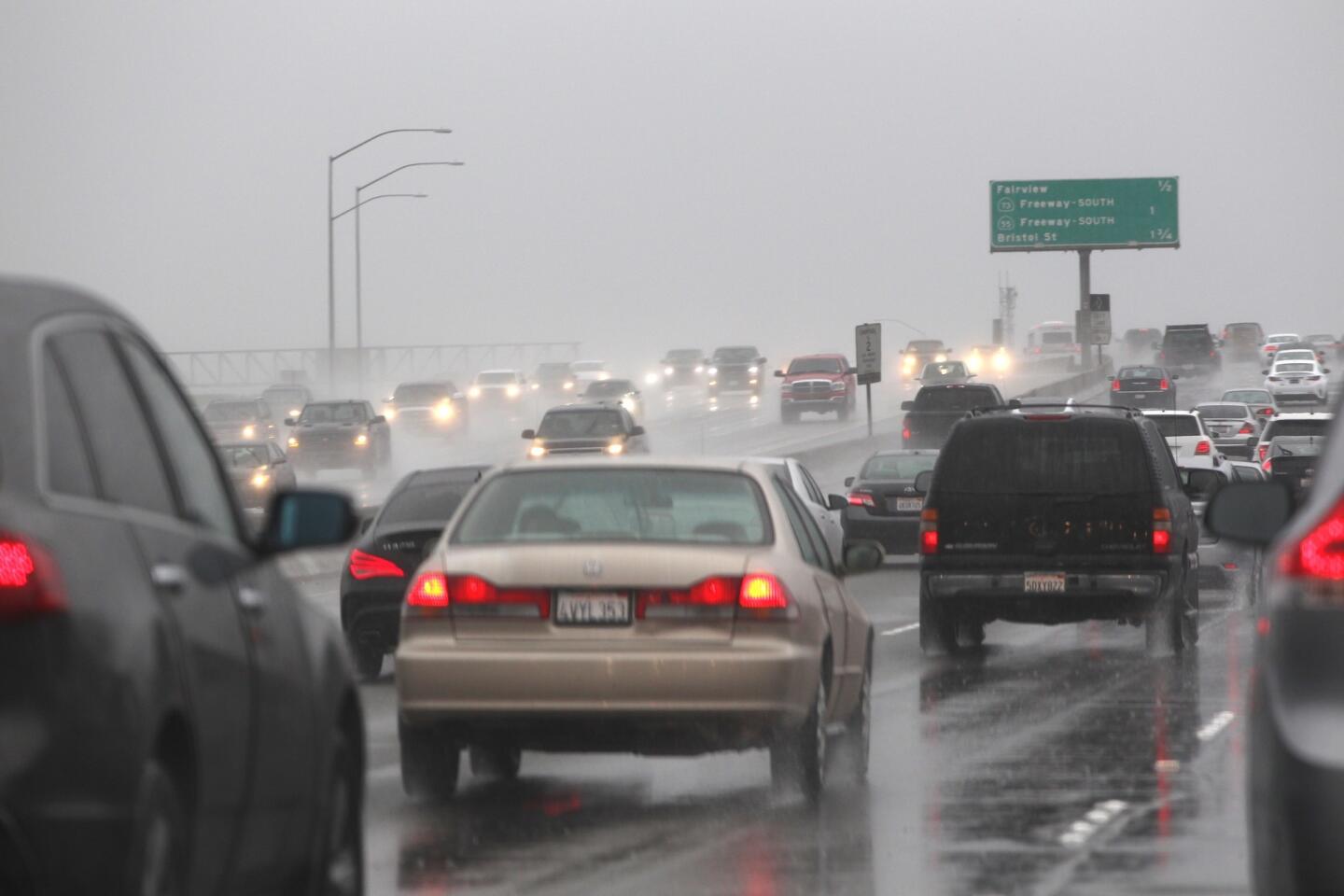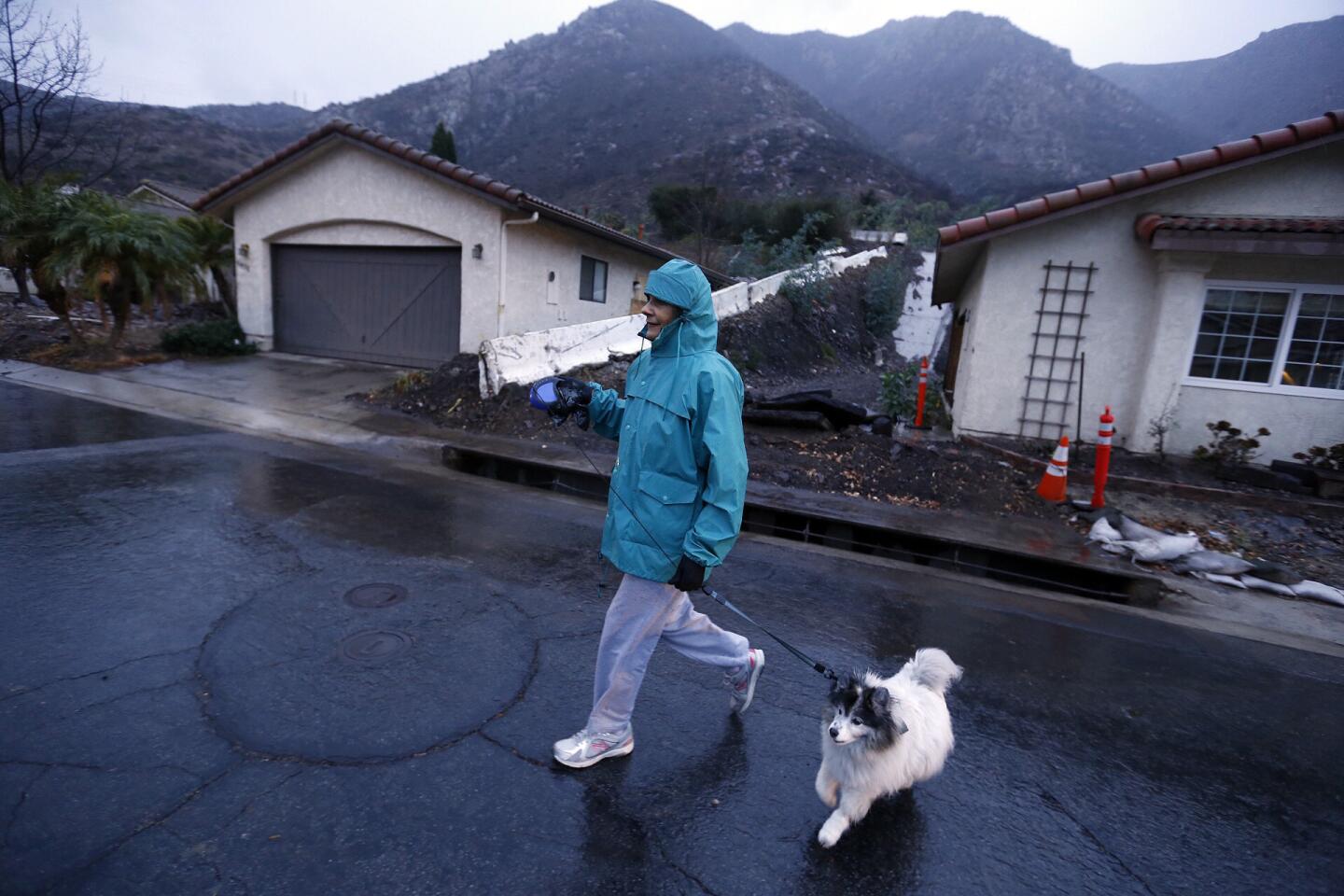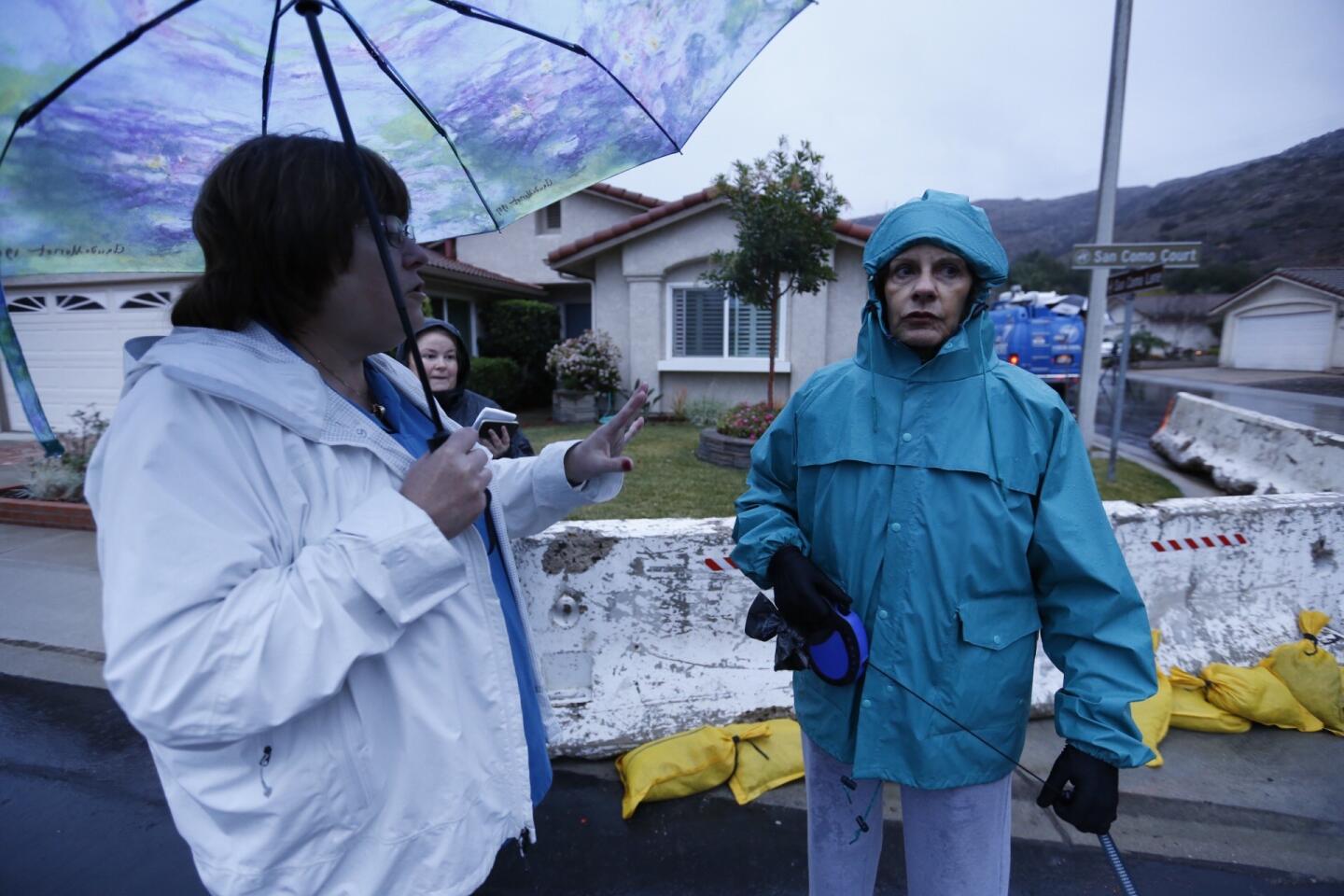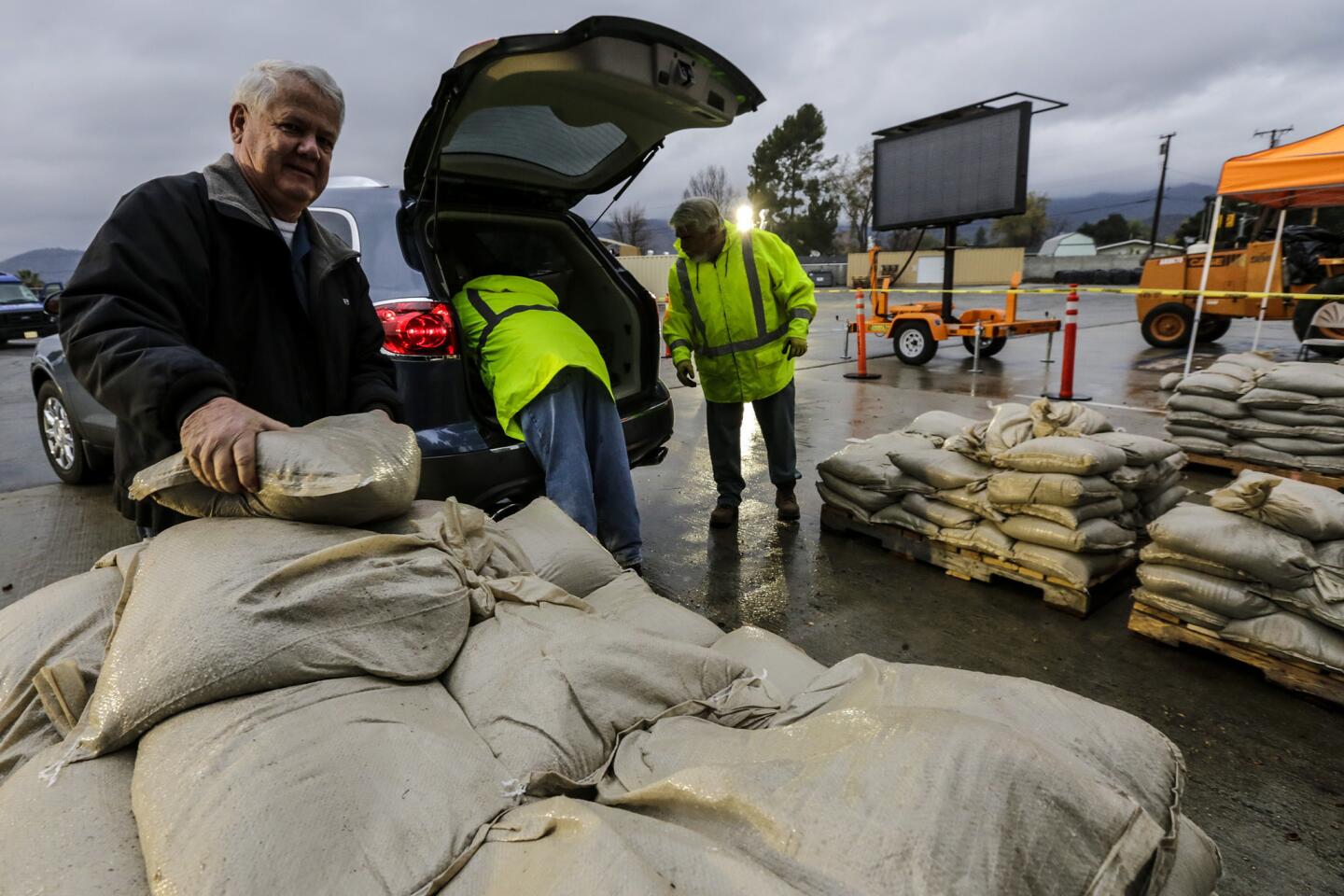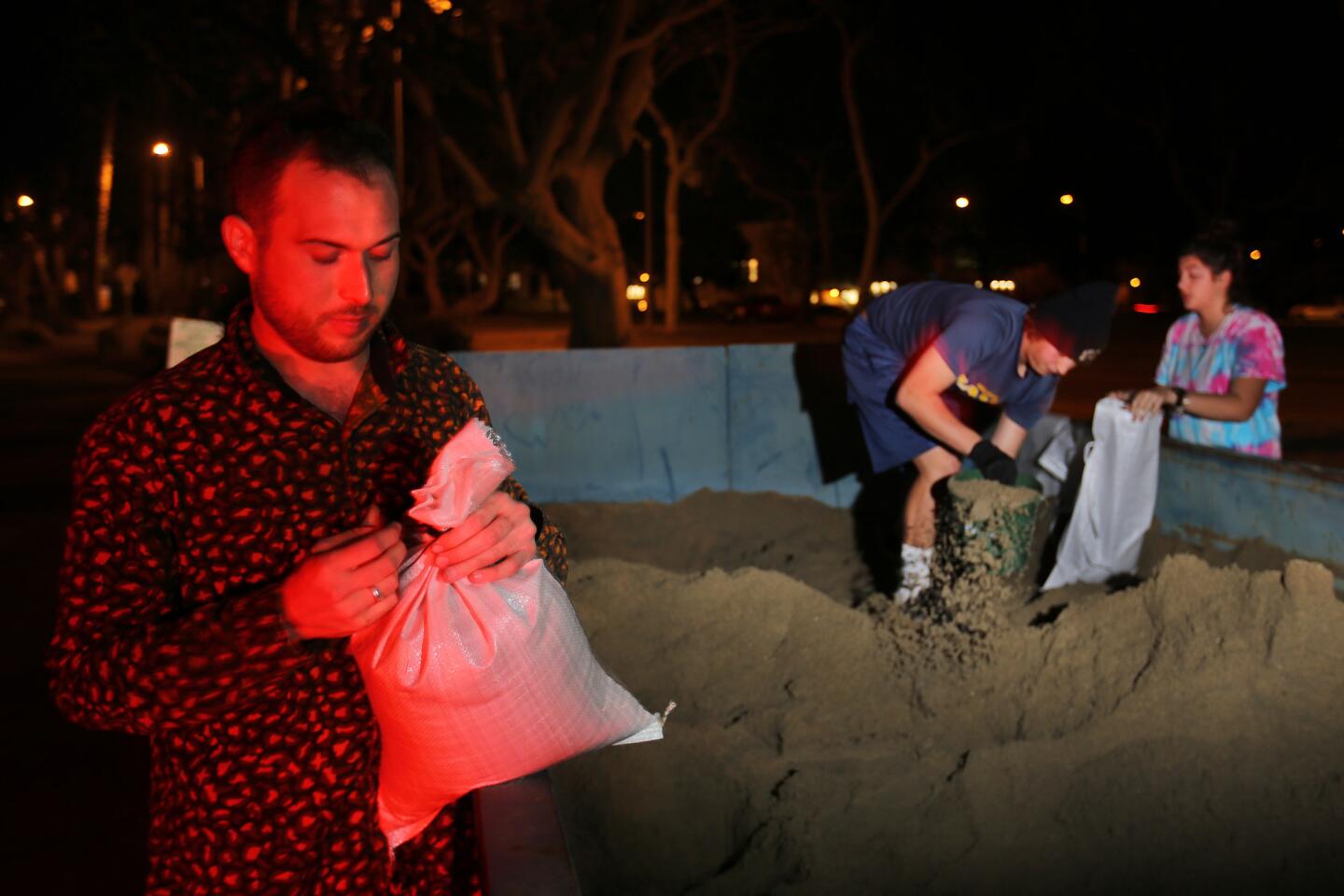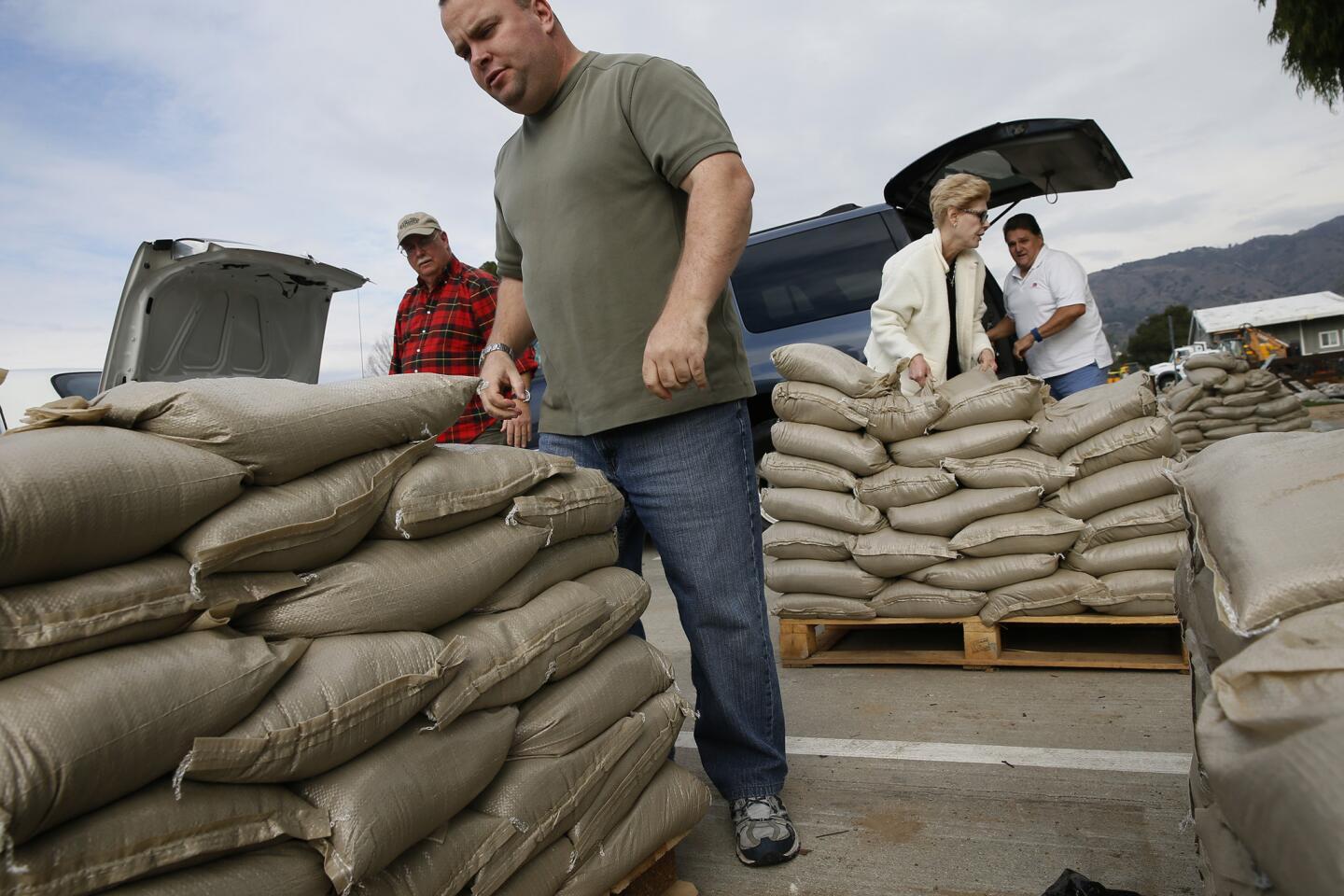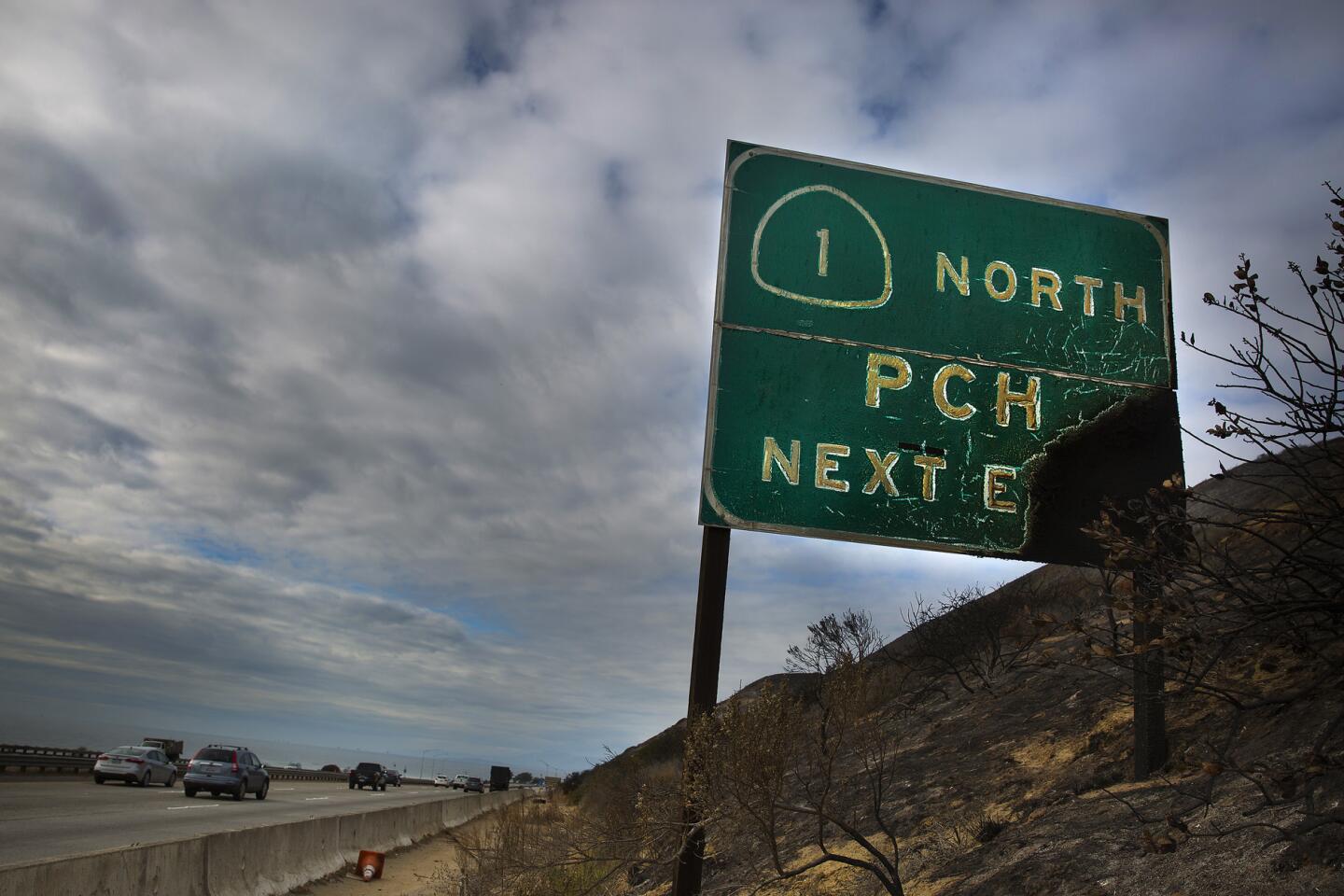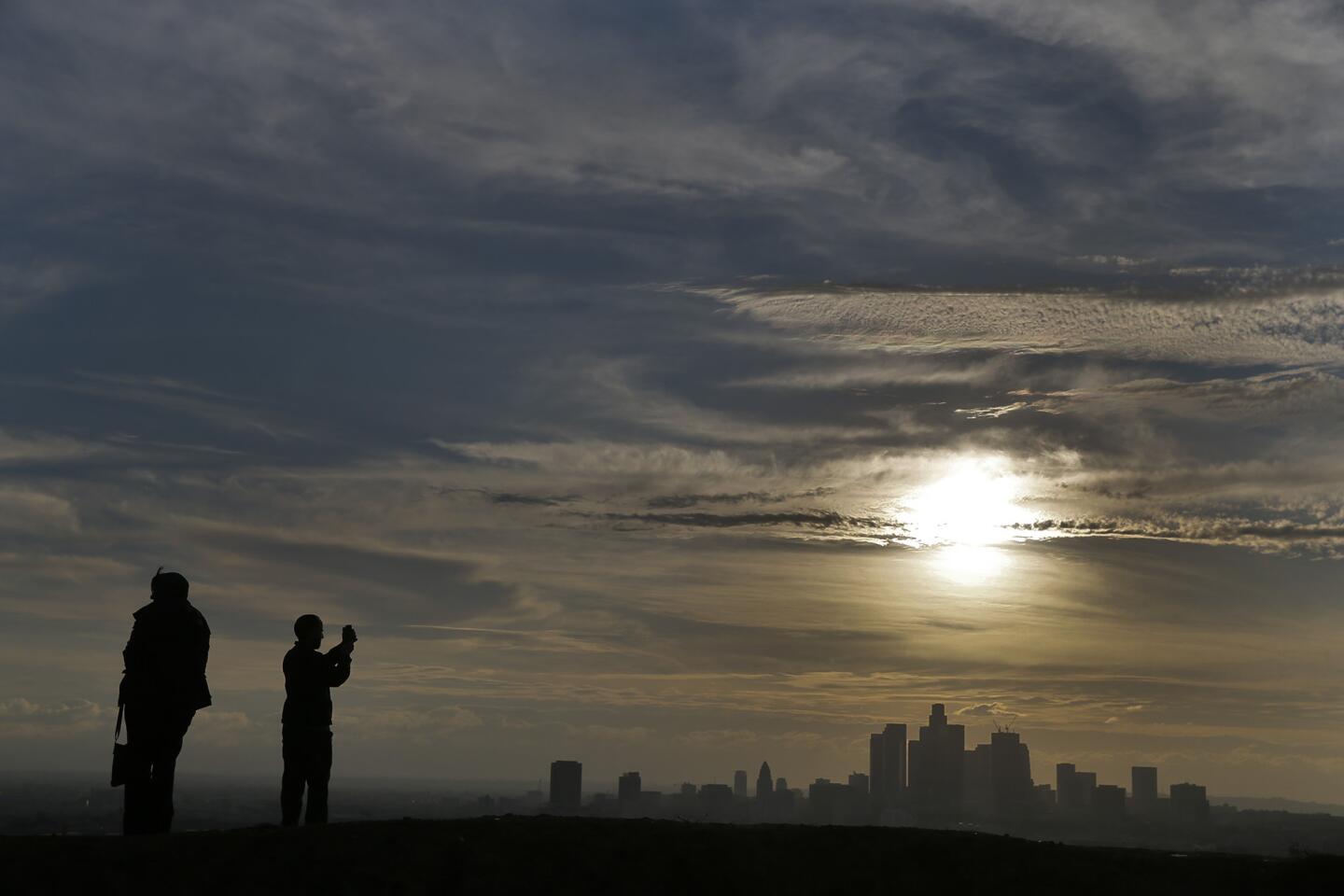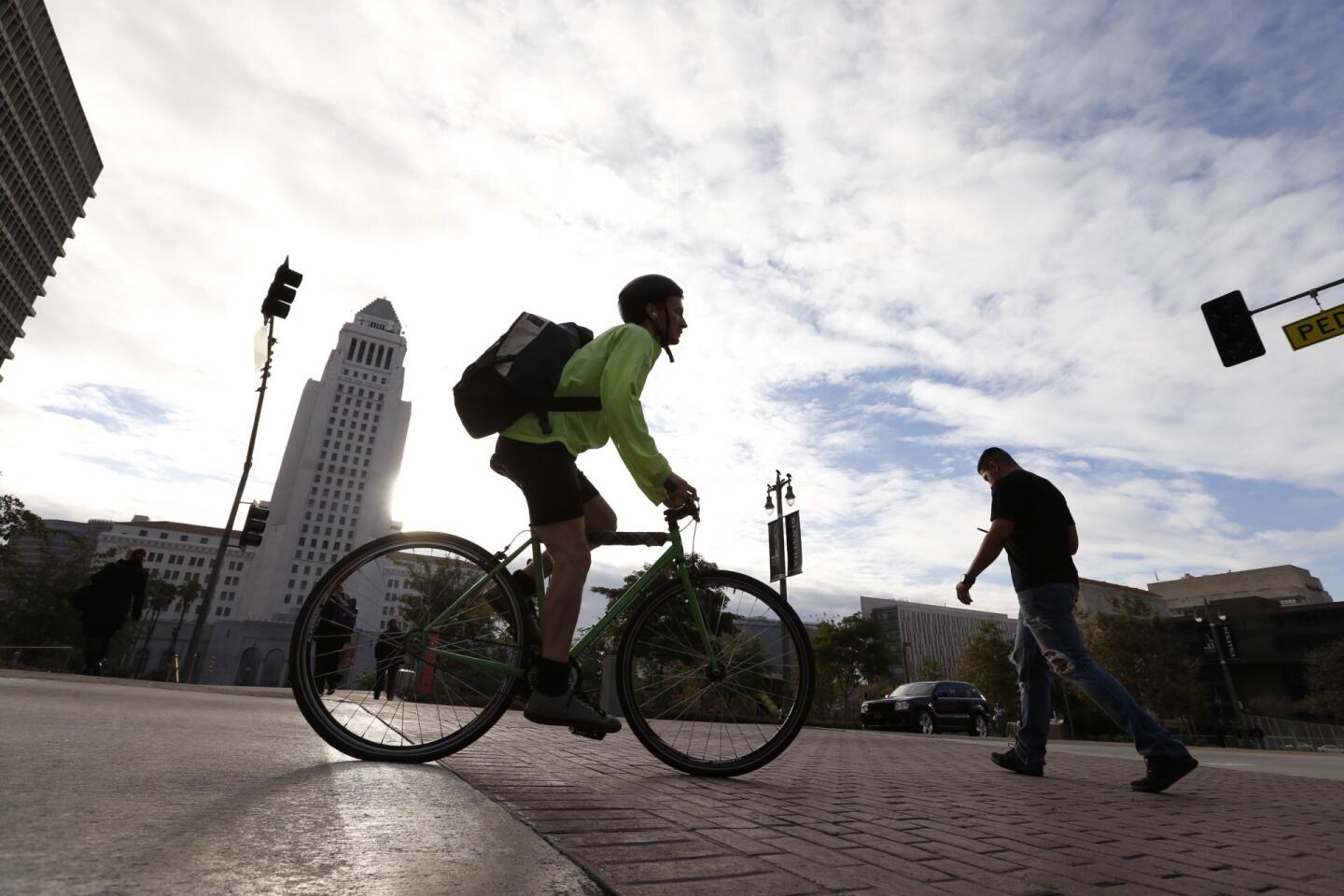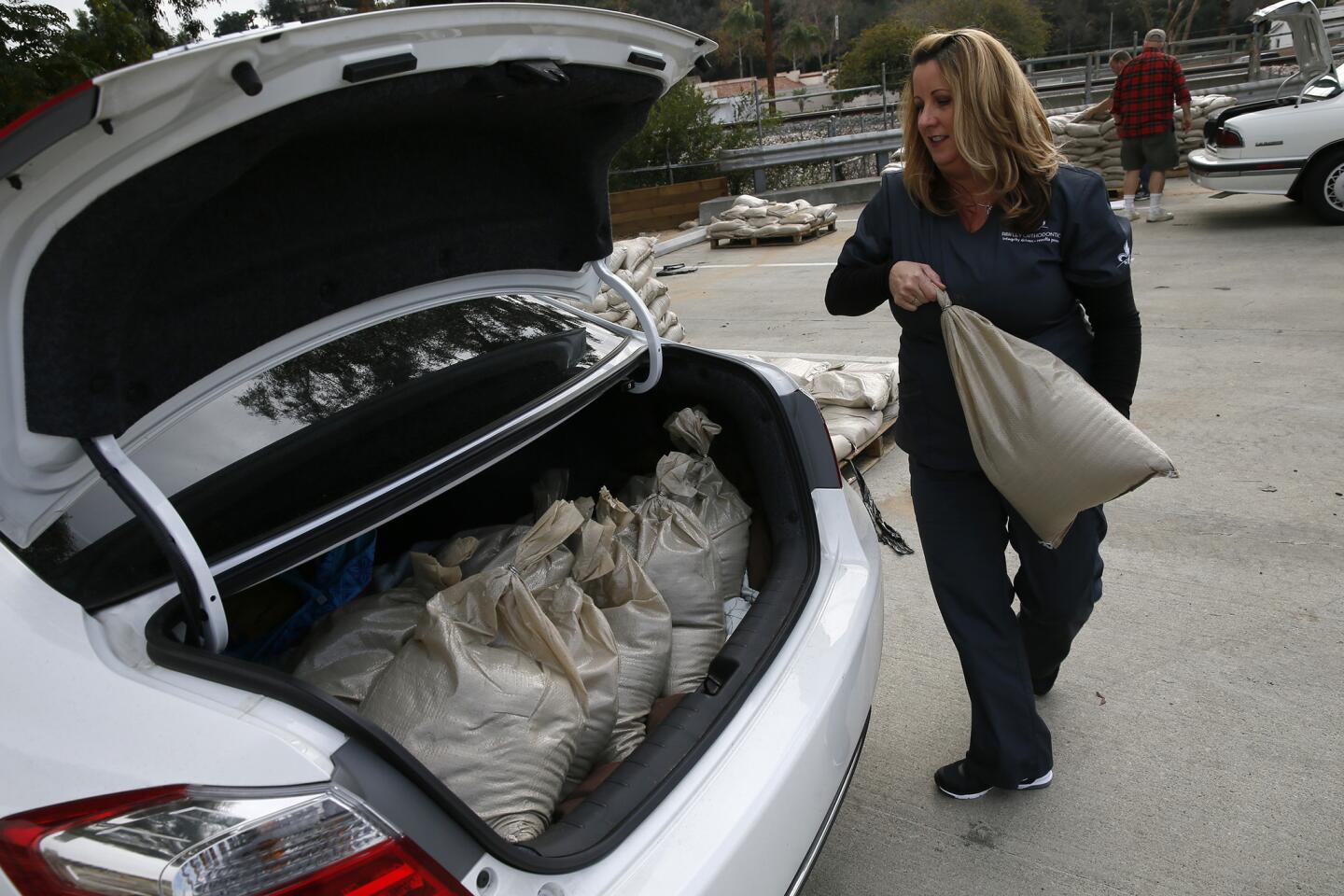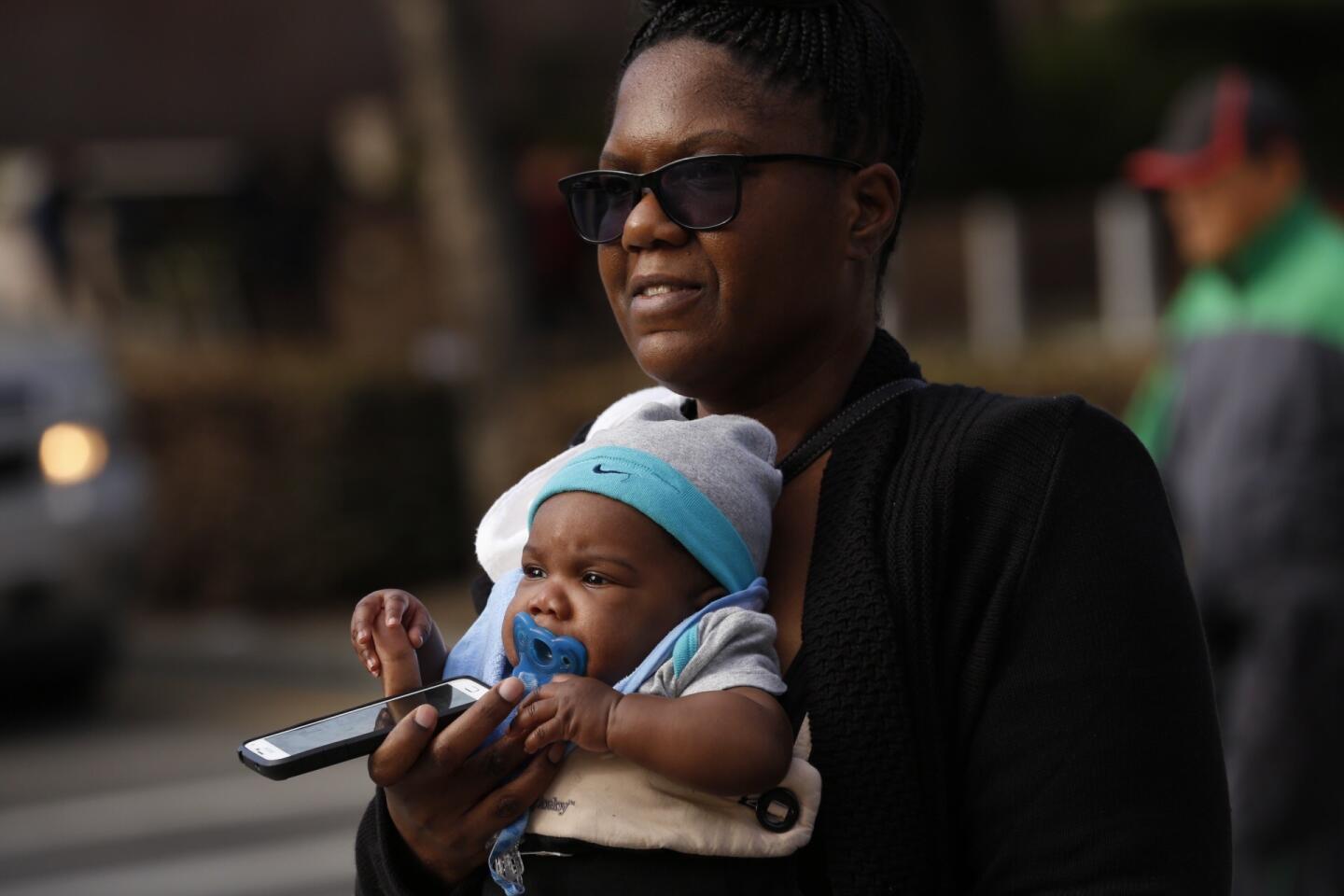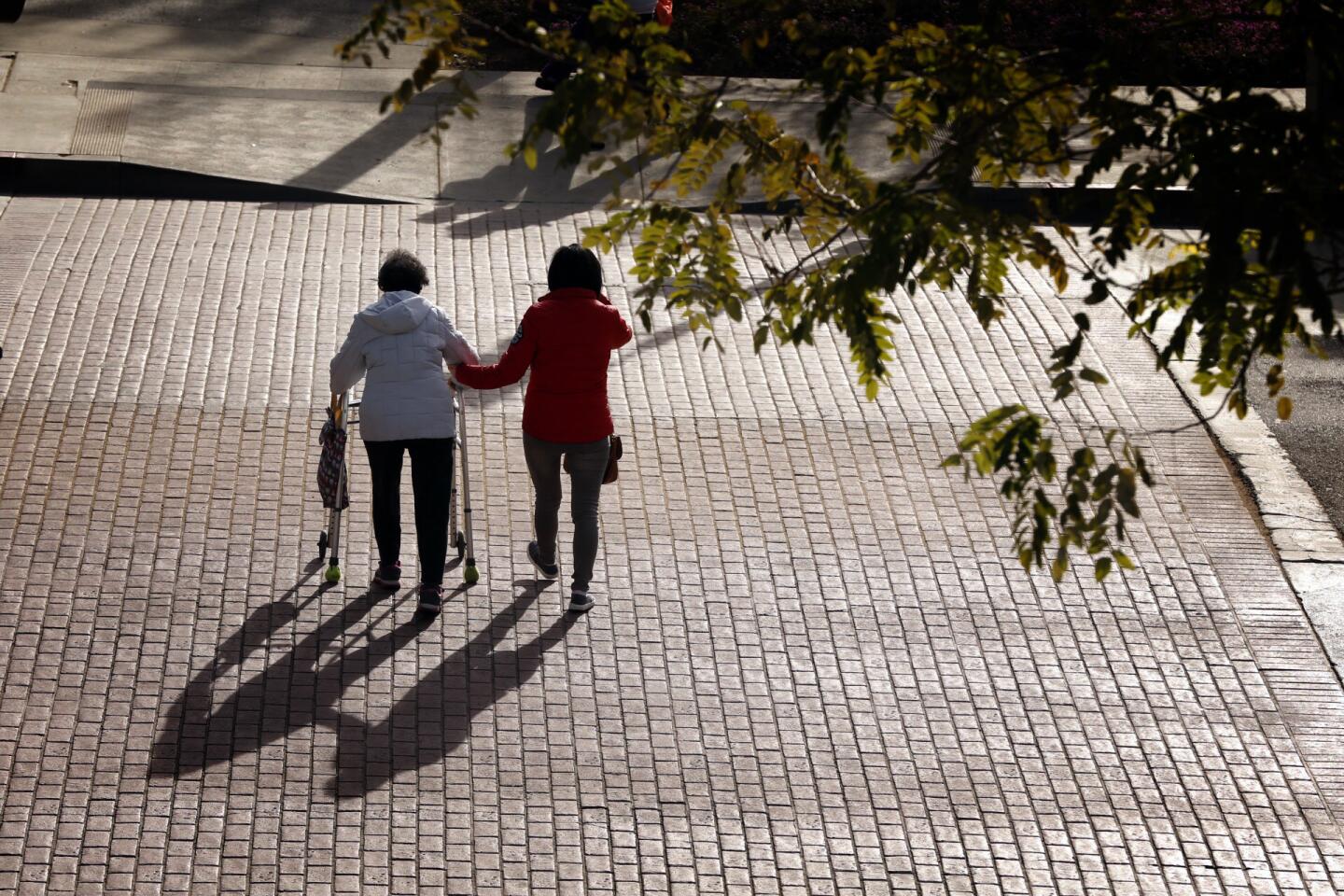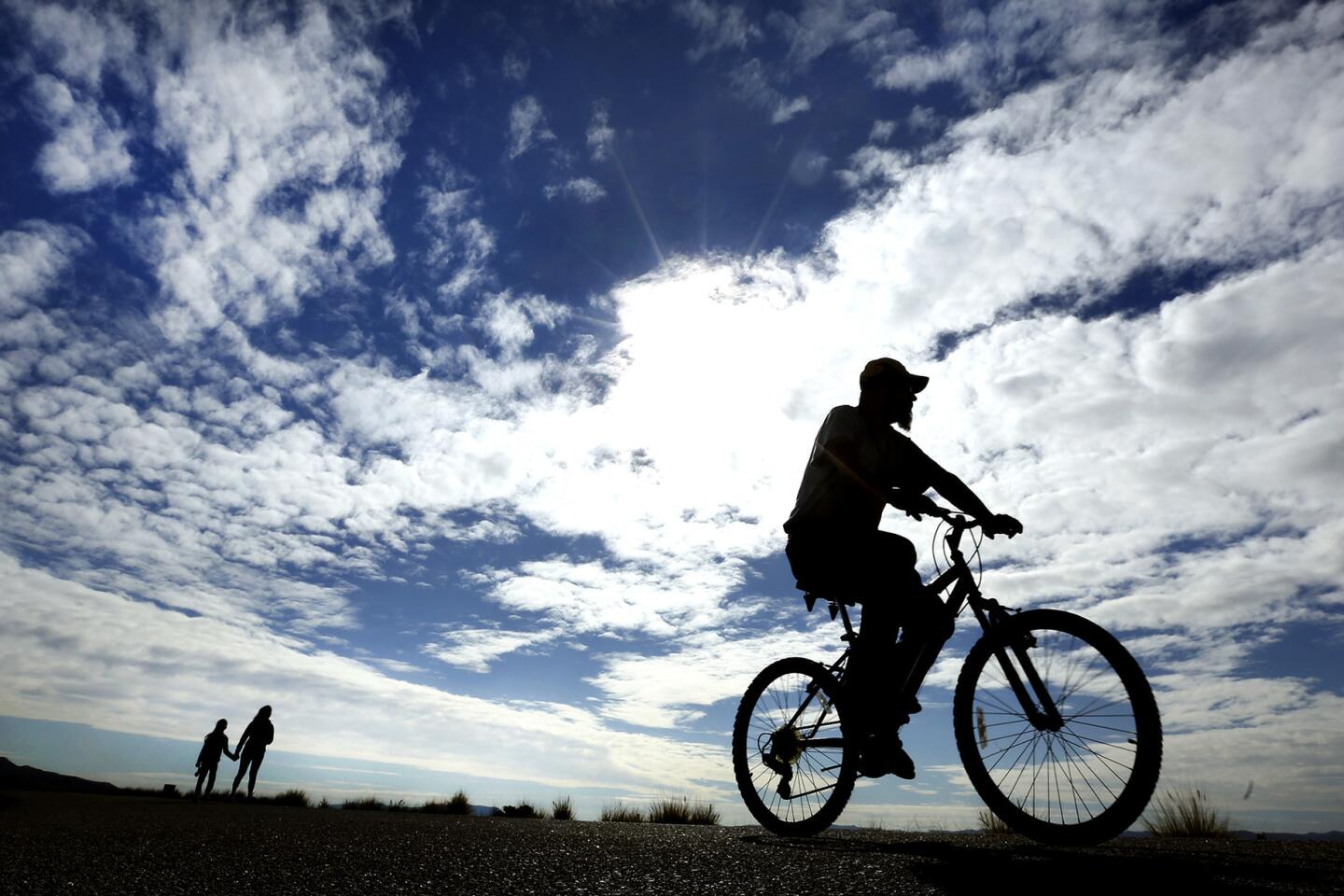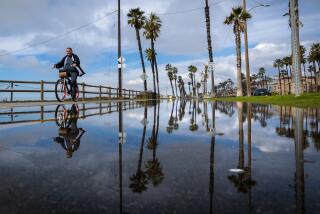‘A brash El Niño’: Storm season begins with record rainfall and mudslide fears
Reporting from SOLIMAR BEACH, Calif. — The first major El Niño storm of the season arrived at this small Ventura County beach town Tuesday morning, and it didn’t take long for that potent combination of fire and rain to cause problems.
An intense downpour hammered a stretch of Highway 101 where a brush fire had swept through on Christmas weekend. Debris from the fire quickly clogged two drains in the freeway median. Soon, 6 inches of rain had accumulated on the roadway, bringing traffic to a halt.
The smell of smoke and ash still hung heavy, mixing with the sea breeze as workers in neon jackets stood feet deep in mud, rushing to clear out the drains.
FULL COVERAGE: Preparing for El Niño>>
“We had so much rain come down so quickly,” said Patrick Chandler, a spokesman for the California Department of Transportation.
This was the story across Southern California in what is expected to be a winter of intense El Niño-generated storms slamming into the region. Weather experts who have been predicting a wet winter for months said they were impressed by the strength of the storm while warning that many more are on the way.
Tuesday brought the most rain Los Angeles has seen in any single day in 2015 except for one — Sept. 15, when the remnants of Hurricane Linda washed ashore, said Bill Patzert, climatologist with the NASA Jet Propulsion Laboratory in La Cañada Flintridge.
The storm also set records for the day in several places, including Los Angeles International Airport as well as to the north in Stockton and Redding.
“This is not a bashful El Niño. This is a brash El Niño,” Patzert said.
The storm caused the usual collection of rain-related traffic accidents, gridlock and flooded sidewalks. But officials said their biggest concern is what could happen in areas such as Solimar Beach: vulnerable hillsides becoming inundated by rain and tumbling down. In Newhall, a river of mud and water pushed between mobile homes from a recently burned hillside.
Areas recently burned by brush fires tend to be at greatest risk of mudflows. But officials have said four years of drought conditions have made hillsides that have not burned also at risk. The drought has shriveled vegetation, leaving little to hold back loose soil.
Patzert said the drought adds an unpredictable element to this year’s El Niño when compared with the last two major events in 1982-83 and 1997-98, which each dumped double the average rain in Los Angeles and San Francisco.
“These last two big El Niños were not preceded by a long-lasting, punishing drought. The drought has done much to the urban landscape, especially the trees. There’s an awful lot of dead and diseased trees in the city,” he said. “As the soil becomes more and more saturated — and, of course, some of these storms will have strong winds associated with them — ... there’s going to be a lot of Priuses squashed underneath eucalyptus trees.”
The storm dumped more than an inch of rain in many parts of Southern California by Tuesday evening and more than 2 inches in some areas, including Pasadena and Alhambra.
A new storm was expected to roll in on Wednesday — as powerful as Tuesday’s, but moving through more slowly, said National Weather Service meteorologist Emily Thornton. “The bigger story is that it’ll be over a longer period of time” — and possibly dump more rain than Tuesday’s storm, which passed through relatively quickly.
A break in the rain may come by Friday, but another system could hit Los Angeles on Saturday night into Sunday. It’s also possible that rain could return Monday.
City officials have prepared for the rain, distributing sandbags and offering shelters. In Los Angeles, where officials have been preparing for months, Mayor Eric Garcetti said the city was faring well so far.
“We have been working for months on this,” Garcetti said. “Today is the day that it is here.”
Crews were busy unclogging storm drains that caused minor flooding in several areas.
Outreach workers had been busy visiting homeless encampments in recent days and had persuaded some people to seek shelter, but a number of them had refused help and still remained in flood-prone areas.
Amid Tuesday’s storm, Los Angeles County officials said they were struggling to secure federal funds for flood control and the removal of debris from the Los Angeles River.
Officials with the county Department of Public Works said they had learned Monday that the Army Corps of Engineers had not received the $4.5 million needed to do maintenance on the river basin in the lead-up to El Niño.
The county’s elected supervisors voted to send a letter to Congress and to the Assistant Secretary of the Army, calling for them to provide the funding needed for work along a stretch of the river between its Burbank western channel and the Glendale Freeway.
Throughout Southern California, motorists and residents slogged through the rain, clutching umbrellas and sloshing through large puddles. Traffic along Los Feliz Boulevard flowed steadily despite the downpour, but drivers leaned on their horns as cars splashed through the water.
Roberto Carrera’s usual 30-minute commute to his job at the Morrison pub took more than an hour Tuesday because of heavy traffic on the freeways. Carrera said there seemed to be an accident on each of the three freeways he takes to get to work.
“I lived in England for a while, so I’ve seen worse,” said Carrera, 23. “But, hopefully, it does help us out a little bit,” he said, referring to the drought.

The downpour from the first major El Niño storm of the season closed some Southern California roads and slowed commutes Tuesday.
Dorian Santos, a sushi chef from East Hollywood, waited for a bus in the Westlake district on his way to work. Behind glasses spritzed with rain droplets, Santos said he was glad for the rain but it was an inconvenience for commuters like him.
“I didn’t want to go [to work] this morning,” Santos said. “I knew it would be raining this week, but I just didn’t want to wake up and walk 10 minutes from my house to the bus stop.”
The situation was more precarious in Solimar Beach.
See more of our top stories on Facebook >>
For a while, authorities said they were concerned that the charred and denuded slopes would come crashing down onto the 101. But the hillside stayed up, even after the worst of the rains had passed.
“This was practice for the big ones we’re anticipating this year,” said Sgt. Joseph Davy of the California Highway Patrol. “I don’t want to call it a ‘dry run,’ this was more of a ‘wet run’ for what’s going to come.”
But officials say the threat is just beginning, with more flash flooding possible Wednesday in burn areas.
Times staff writers Abby Sewell, Hailey Branson-Potts, Sarah Parvini, Peter Jamison and Taylor Goldenstein contributed to this report.
MORE ON EL NIÑO
Tornado touches down in Vernon, damages buildings as El Niño storm pounds state
A steady conveyor belt of El Niño storms is what has officials concerned
Are you ready for El Niño? Here’s how to stay safe
More to Read
Sign up for Essential California
The most important California stories and recommendations in your inbox every morning.
You may occasionally receive promotional content from the Los Angeles Times.
